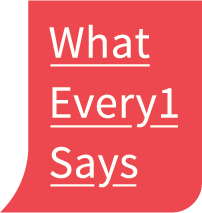(all)
Global Humanities | History of Humanities | Liberal Arts | Humanities and Higher Education | Humanities as Research Activity | Humanities Teaching & Curricula | Humanities and the Sciences | Medical Humanities | Public Humanities | Humanities Advocacy | Humanities and Social Groups | Value of Humanities | Humanities and Economic Value | Humanities Funding | Humanities Statistics | Humanities Surveys | "Crisis" of the Humanities
Humanities Organizations: Humanities Councils (U.S.) | Government Agencies | Foundations | Scholarly Associations
Humanities in: Africa | Asia (East) | Asia (South) | Australasia | Europe | Latin America | Middle East | North America: Canada - Mexico - United States | Scandinavia | United Kingdom
(all)
Lists of News Sources | Databases with News Archives | History of Journalism | Journalism Studies | Journalism Statistics | Journalism Organizations | Student Journalism | Data Journalism | Media Frames (analyzing & changing media narratives using "frame theory") | Media Bias | Fake News | Journalism and Minorities | Journalism and Women | Press Freedom | News & Social Media
(all)
Corpus Representativeness
Comparison paradigms for idea of a corpus: Archives as Paradigm | Canons as Paradigm | Editions as Paradigm | Corpus Linguistics as Paradigm
(all)
Artificial Intelligence | Big Data | Data Mining | Data Notebooks (Jupyter Notebooks) | Data Visualization (see also Topic Model Visualizations) | Hierarchical Clustering | Interpretability & Explainability (see also Topic Model Interpretation) | Mapping | Natural Language Processing | Network Analysis | Open Science | Reporting & Documentation Methods | Reproducibility | Sentiment Analysis | Social Media Analysis | Statistical Methods | Text Analysis (see also Topic Modeling) | Text Classification | Wikification | Word Embedding & Vector Semantics
Topic Modeling (all)
Selected DH research and resources bearing on, or utilized by, the WE1S project.
(all)
Distant Reading | Cultural Analytics | | Sociocultural Approaches | Topic Modeling in DH | Non-consumptive Use
Searchable version of bibliography on Zotero site
For WE1S developers: Biblio style guide | Biblio collection form (suggest additions) | WE1S Bibliography Ontology Outline
2133649
News and social media
1
chicago-fullnote-bibliography
50
date
desc
year
1
1
1
4824
https://we1s.ucsb.edu/wp-content/plugins/zotpress/
%7B%22status%22%3A%22success%22%2C%22updateneeded%22%3Afalse%2C%22instance%22%3Afalse%2C%22meta%22%3A%7B%22request_last%22%3A50%2C%22request_next%22%3A50%2C%22used_cache%22%3Atrue%7D%2C%22data%22%3A%5B%7B%22key%22%3A%22CZVVNC4V%22%2C%22library%22%3A%7B%22id%22%3A2133649%7D%2C%22meta%22%3A%7B%22creatorSummary%22%3A%22Pennycook%20and%20Rand%22%2C%22parsedDate%22%3A%222020%22%2C%22numChildren%22%3A0%7D%2C%22bib%22%3A%22%26lt%3Bdiv%20class%3D%26quot%3Bcsl-bib-body%26quot%3B%20style%3D%26quot%3Bline-height%3A%201.35%3B%20padding-left%3A%201em%3B%20text-indent%3A-1em%3B%26quot%3B%26gt%3B%5Cn%20%20%26lt%3Bdiv%20class%3D%26quot%3Bcsl-entry%26quot%3B%26gt%3BPennycook%2C%20Gordon%2C%20and%20David%20G.%20Rand.%20%26%23x201C%3BWho%20Falls%20for%20Fake%20News%3F%20The%20Roles%20of%20Bullshit%20Receptivity%2C%20Overclaiming%2C%20Familiarity%2C%20and%20Analytic%20Thinking.%26%23x201D%3B%20%26lt%3Bi%26gt%3BJournal%20of%20Personality%26lt%3B%5C%2Fi%26gt%3B%2088%2C%20no.%202%20%282020%29%3A%20185%26%23x2013%3B200.%20%26lt%3Ba%20class%3D%26%23039%3Bzp-DOIURL%26%23039%3B%20href%3D%26%23039%3Bhttps%3A%5C%2F%5C%2Fdoi.org%5C%2F10.1111%5C%2Fjopy.12476%26%23039%3B%26gt%3Bhttps%3A%5C%2F%5C%2Fdoi.org%5C%2F10.1111%5C%2Fjopy.12476%26lt%3B%5C%2Fa%26gt%3B.%20%26lt%3Ba%20title%3D%26%23039%3BCite%20in%20RIS%20Format%26%23039%3B%20class%3D%26%23039%3Bzp-CiteRIS%26%23039%3B%20data-zp-cite%3D%26%23039%3Bapi_user_id%3D2133649%26amp%3Bitem_key%3DCZVVNC4V%26%23039%3B%20href%3D%26%23039%3Bjavascript%3Avoid%280%29%3B%26%23039%3B%26gt%3BCite%26lt%3B%5C%2Fa%26gt%3B%20%26lt%3B%5C%2Fdiv%26gt%3B%5Cn%26lt%3B%5C%2Fdiv%26gt%3B%22%2C%22data%22%3A%7B%22itemType%22%3A%22journalArticle%22%2C%22title%22%3A%22Who%20falls%20for%20fake%20news%3F%20The%20roles%20of%20bullshit%20receptivity%2C%20overclaiming%2C%20familiarity%2C%20and%20analytic%20thinking%22%2C%22creators%22%3A%5B%7B%22creatorType%22%3A%22author%22%2C%22firstName%22%3A%22Gordon%22%2C%22lastName%22%3A%22Pennycook%22%7D%2C%7B%22creatorType%22%3A%22author%22%2C%22firstName%22%3A%22David%20G.%22%2C%22lastName%22%3A%22Rand%22%7D%5D%2C%22abstractNote%22%3A%22Objective%20Fake%20news%20represents%20a%20particularly%20egregious%20and%20direct%20avenue%20by%20which%20inaccurate%20beliefs%20have%20been%20propagated%20via%20social%20media.%20We%20investigate%20the%20psychological%20profile%20of%20individuals%20who%20fall%20prey%20to%20fake%20news.%20Method%20We%20recruited%201%2C606%20participants%20from%20Amazon%5Cu2019s%20Mechanical%20Turk%20for%20three%20online%20surveys.%20Results%20The%20tendency%20to%20ascribe%20profundity%20to%20randomly%20generated%20sentences%5Cu2014pseudo-profound%20bullshit%20receptivity%5Cu2014correlates%20positively%20with%20perceptions%20of%20fake%20news%20accuracy%2C%20and%20negatively%20with%20the%20ability%20to%20differentiate%20between%20fake%20and%20real%20news%20%28media%20truth%20discernment%29.%20Relatedly%2C%20individuals%20who%20overclaim%20their%20level%20of%20knowledge%20also%20judge%20fake%20news%20to%20be%20more%20accurate.%20We%20also%20extend%20previous%20research%20indicating%20that%20analytic%20thinking%20correlates%20negatively%20with%20perceived%20accuracy%20by%20showing%20that%20this%20relationship%20is%20not%20moderated%20by%20the%20presence%5C%2Fabsence%20of%20the%20headline%5Cu2019s%20source%20%28which%20has%20no%20effect%20on%20accuracy%29%2C%20or%20by%20familiarity%20with%20the%20headlines%20%28which%20correlates%20positively%20with%20perceived%20accuracy%20of%20fake%20and%20real%20news%29.%20Conclusion%20Our%20results%20suggest%20that%20belief%20in%20fake%20news%20may%20be%20driven%2C%20to%20some%20extent%2C%20by%20a%20general%20tendency%20to%20be%20overly%20accepting%20of%20weak%20claims.%20This%20tendency%2C%20which%20we%20refer%20to%20as%20reflexive%20open-mindedness%2C%20may%20be%20partly%20responsible%20for%20the%20prevalence%20of%20epistemically%20suspect%20beliefs%20writ%20large.%22%2C%22date%22%3A%222020%22%2C%22language%22%3A%22en%22%2C%22DOI%22%3A%2210.1111%5C%2Fjopy.12476%22%2C%22ISSN%22%3A%221467-6494%22%2C%22url%22%3A%22https%3A%5C%2F%5C%2Fonlinelibrary.wiley.com%5C%2Fdoi%5C%2Fabs%5C%2F10.1111%5C%2Fjopy.12476%22%2C%22collections%22%3A%5B%5D%2C%22dateModified%22%3A%222020-04-01T07%3A49%3A26Z%22%2C%22tags%22%3A%5B%7B%22tag%22%3A%22Fake%20news%22%7D%2C%7B%22tag%22%3A%22Journalism%22%7D%2C%7B%22tag%22%3A%22News%20and%20social%20media%22%7D%5D%7D%7D%2C%7B%22key%22%3A%224XSSQWPT%22%2C%22library%22%3A%7B%22id%22%3A2133649%7D%2C%22meta%22%3A%7B%22creatorSummary%22%3A%22Parrott%20et%20al.%22%2C%22parsedDate%22%3A%222019%22%2C%22numChildren%22%3A0%7D%2C%22bib%22%3A%22%26lt%3Bdiv%20class%3D%26quot%3Bcsl-bib-body%26quot%3B%20style%3D%26quot%3Bline-height%3A%201.35%3B%20padding-left%3A%201em%3B%20text-indent%3A-1em%3B%26quot%3B%26gt%3B%5Cn%20%20%26lt%3Bdiv%20class%3D%26quot%3Bcsl-entry%26quot%3B%26gt%3BParrott%2C%20Scott%2C%20David%20L.%20Albright%2C%20Caitlin%20Dyche%2C%20and%20Hailey%20Grace%20Steele.%20%26%23x201C%3BHero%2C%20Charity%20Case%2C%20and%20Victim%3A%20How%20U.S.%20News%20Media%20Frame%20Military%20Veterans%20on%20Twitter.%26%23x201D%3B%20%26lt%3Bi%26gt%3BArmed%20Forces%20%26amp%3B%20Society%26lt%3B%5C%2Fi%26gt%3B%2045%2C%20no.%204%20%282019%29%3A%20702%26%23x2013%3B22.%20%26lt%3Ba%20class%3D%26%23039%3Bzp-ItemURL%26%23039%3B%20href%3D%26%23039%3Bhttps%3A%5C%2F%5C%2Fdoi.org%5C%2F10.1177%5C%2F0095327X18784238%26%23039%3B%26gt%3Bhttps%3A%5C%2F%5C%2Fdoi.org%5C%2F10.1177%5C%2F0095327X18784238%26lt%3B%5C%2Fa%26gt%3B.%20%26lt%3Ba%20title%3D%26%23039%3BCite%20in%20RIS%20Format%26%23039%3B%20class%3D%26%23039%3Bzp-CiteRIS%26%23039%3B%20data-zp-cite%3D%26%23039%3Bapi_user_id%3D2133649%26amp%3Bitem_key%3D4XSSQWPT%26%23039%3B%20href%3D%26%23039%3Bjavascript%3Avoid%280%29%3B%26%23039%3B%26gt%3BCite%26lt%3B%5C%2Fa%26gt%3B%20%26lt%3B%5C%2Fdiv%26gt%3B%5Cn%26lt%3B%5C%2Fdiv%26gt%3B%22%2C%22data%22%3A%7B%22itemType%22%3A%22journalArticle%22%2C%22title%22%3A%22Hero%2C%20Charity%20Case%2C%20and%20Victim%3A%20How%20U.S.%20News%20Media%20Frame%20Military%20Veterans%20on%20Twitter%22%2C%22creators%22%3A%5B%7B%22creatorType%22%3A%22author%22%2C%22firstName%22%3A%22Scott%22%2C%22lastName%22%3A%22Parrott%22%7D%2C%7B%22creatorType%22%3A%22author%22%2C%22firstName%22%3A%22David%20L.%22%2C%22lastName%22%3A%22Albright%22%7D%2C%7B%22creatorType%22%3A%22author%22%2C%22firstName%22%3A%22Caitlin%22%2C%22lastName%22%3A%22Dyche%22%7D%2C%7B%22creatorType%22%3A%22author%22%2C%22firstName%22%3A%22Hailey%20Grace%22%2C%22lastName%22%3A%22Steele%22%7D%5D%2C%22abstractNote%22%3A%22Commenters%20often%20criticize%20the%20mass%20media%20for%20providing%20audiences%20a%20narrow%20and%20inaccurate%20representation%20of%20U.S.%20military%20veterans.%20This%20study%20examined%20the%20claim%20by%20researching%20how%20regional%20news%20publications%20in%20the%2050%20states%20represented%20veterans%20on%20Twitter.%20A%20quantitative%20content%20analysis%20documented%20the%20presence%20or%20absence%20of%20characteristics%20in%201%2C460%20tweets%20that%20employed%20the%20terms%20veteran%20or%20veterans.%20Data%20were%20examined%20using%20cluster%20analysis.%20Three%20frames%20emerged.%20The%20most%20prevalent%20frame%2C%20labeled%20charity%2C%20highlighted%20instances%20in%20which%20veterans%20received%20assistance%20from%20charitable%20organizations%20and%20others.%20The%20second%20frame%2C%20hero%2C%20contained%20references%20to%20honor%2C%20World%20War%20II%2C%20and%20content%20that%20would%20elicit%20pride%20from%20audience%20members.%20The%20third%20frame%2C%20victim%2C%20highlighted%20the%20mistreatment%20of%20veterans%20by%20the%20military%20and%5C%2For%20society%2C%20mental%20health%20issues%2C%20politics%2C%20and%20the%20Gulf%20War.%20Results%20suggest%20U.S.%20news%20consumers%20are%20provided%20a%20narrow%20representation%20of%20what%20it%20means%20to%20be%20a%20veteran.%22%2C%22date%22%3A%222019%22%2C%22language%22%3A%22en%22%2C%22DOI%22%3A%2210.1177%5C%2F0095327X18784238%22%2C%22ISSN%22%3A%220095-327X%22%2C%22url%22%3A%22https%3A%5C%2F%5C%2Fdoi.org%5C%2F10.1177%5C%2F0095327X18784238%22%2C%22collections%22%3A%5B%5D%2C%22dateModified%22%3A%222020-08-15T23%3A14%3A59Z%22%2C%22tags%22%3A%5B%7B%22tag%22%3A%22Frame%20analysis%20of%20media%22%7D%2C%7B%22tag%22%3A%22News%20and%20social%20media%22%7D%5D%7D%7D%2C%7B%22key%22%3A%22BXBHAZCI%22%2C%22library%22%3A%7B%22id%22%3A2133649%7D%2C%22meta%22%3A%7B%22creatorSummary%22%3A%22Al-Rawi%22%2C%22parsedDate%22%3A%222019%22%2C%22numChildren%22%3A0%7D%2C%22bib%22%3A%22%26lt%3Bdiv%20class%3D%26quot%3Bcsl-bib-body%26quot%3B%20style%3D%26quot%3Bline-height%3A%201.35%3B%20padding-left%3A%201em%3B%20text-indent%3A-1em%3B%26quot%3B%26gt%3B%5Cn%20%20%26lt%3Bdiv%20class%3D%26quot%3Bcsl-entry%26quot%3B%26gt%3BAl-Rawi%2C%20Ahmed.%20%26%23x201C%3BViral%20News%20on%20Social%20Media.%26%23x201D%3B%20%26lt%3Bi%26gt%3BDigital%20Journalism%26lt%3B%5C%2Fi%26gt%3B%207%2C%20no.%201%20%282019%29%3A%2063%26%23x2013%3B79m.%20%26lt%3Ba%20class%3D%26%23039%3Bzp-ItemURL%26%23039%3B%20href%3D%26%23039%3Bhttps%3A%5C%2F%5C%2Fdoi.org%5C%2F10.1080%5C%2F21670811.2017.1387062%26%23039%3B%26gt%3Bhttps%3A%5C%2F%5C%2Fdoi.org%5C%2F10.1080%5C%2F21670811.2017.1387062%26lt%3B%5C%2Fa%26gt%3B.%20%26lt%3Ba%20title%3D%26%23039%3BCite%20in%20RIS%20Format%26%23039%3B%20class%3D%26%23039%3Bzp-CiteRIS%26%23039%3B%20data-zp-cite%3D%26%23039%3Bapi_user_id%3D2133649%26amp%3Bitem_key%3DBXBHAZCI%26%23039%3B%20href%3D%26%23039%3Bjavascript%3Avoid%280%29%3B%26%23039%3B%26gt%3BCite%26lt%3B%5C%2Fa%26gt%3B%20%26lt%3B%5C%2Fdiv%26gt%3B%5Cn%26lt%3B%5C%2Fdiv%26gt%3B%22%2C%22data%22%3A%7B%22itemType%22%3A%22journalArticle%22%2C%22title%22%3A%22Viral%20News%20on%20Social%20Media%22%2C%22creators%22%3A%5B%7B%22creatorType%22%3A%22author%22%2C%22firstName%22%3A%22Ahmed%22%2C%22lastName%22%3A%22Al-Rawi%22%7D%5D%2C%22abstractNote%22%3A%22Viral%20news%20is%20defined%20as%20networked%20news%20stories%20that%20spread%20online%20mostly%20through%20social%20media%20in%20a%20much%20faster%20and%20wider%20manner%20than%20other%20news%20stories%2C%20and%20this%20study%20investigates%20the%20elements%20that%20make%20news%20viral%20on%20two%20social%20media%20platforms.%20The%20goal%20is%20to%20fill%20a%20gap%20in%20the%20literature%20on%20viral%20news%20especially%20on%20social%20media%20news%20as%20previous%20communication%20studies%20mostly%20focused%20on%20news%20sharing%20habits%20on%20the%20news%20organizations%5Cu2019%20websites%20as%20well%20as%20editors%5Cu2019%20news%20selection%20criteria.%20The%20top%2050%20news%20stories%20are%20selected%20for%20this%20study%20by%20examining%20the%20most%20viewed%20videos%20on%20the%20Guardian%2C%20the%20New%20York%20Times%2C%20Washington%20Post%20and%20Wall%20Street%20Journal%5Cu2019s%20YouTube%20channels%20as%20well%20as%20their%20most%20retweeted%20news%20stories.%20The%20study%20introduces%20a%20mixed%20model%20to%20examine%20viral%20news%2C%20borrowing%20from%20previous%20studies%20on%20emotions%20and%20others%20that%20focused%20on%20news%20worthiness.%20The%20results%20indicate%20that%20social%20media%20news%20readers%20prefer%20to%20read%20and%20share%20overwhelmingly%20positive%20news%2C%20while%20social%20significance%20and%20unexpectedness%20in%20news%20stories%20are%20the%20most%20appealing%20viral%20news%20elements.%22%2C%22date%22%3A%222019%22%2C%22language%22%3A%22en%22%2C%22DOI%22%3A%2210.1080%5C%2F21670811.2017.1387062%22%2C%22ISSN%22%3A%222167-0811%22%2C%22url%22%3A%22https%3A%5C%2F%5C%2Fdoi.org%5C%2F10.1080%5C%2F21670811.2017.1387062%22%2C%22collections%22%3A%5B%5D%2C%22dateModified%22%3A%222020-07-07T07%3A31%3A42Z%22%2C%22tags%22%3A%5B%7B%22tag%22%3A%22Journalism%22%7D%2C%7B%22tag%22%3A%22News%20and%20social%20media%22%7D%5D%7D%7D%2C%7B%22key%22%3A%22HG35CRKX%22%2C%22library%22%3A%7B%22id%22%3A2133649%7D%2C%22meta%22%3A%7B%22creatorSummary%22%3A%22Fletcher%20and%20Nielsen%22%2C%22parsedDate%22%3A%222019%22%2C%22numChildren%22%3A0%7D%2C%22bib%22%3A%22%26lt%3Bdiv%20class%3D%26quot%3Bcsl-bib-body%26quot%3B%20style%3D%26quot%3Bline-height%3A%201.35%3B%20padding-left%3A%201em%3B%20text-indent%3A-1em%3B%26quot%3B%26gt%3B%5Cn%20%20%26lt%3Bdiv%20class%3D%26quot%3Bcsl-entry%26quot%3B%26gt%3BFletcher%2C%20Richard%2C%20and%20Rasmus%20Kleis%20Nielsen.%20%26%23x201C%3BGeneralised%20Scepticism%3A%20How%20People%20Navigate%20News%20on%20Social%20Media.%26%23x201D%3B%20%26lt%3Bi%26gt%3BInformation%2C%20Communication%20%26amp%3B%20Society%26lt%3B%5C%2Fi%26gt%3B%2022%2C%20no.%2012%20%282019%29%3A%201751%26%23x2013%3B69.%20%26lt%3Ba%20class%3D%26%23039%3Bzp-ItemURL%26%23039%3B%20href%3D%26%23039%3Bhttps%3A%5C%2F%5C%2Fdoi.org%5C%2F10.1080%5C%2F1369118X.2018.1450887%26%23039%3B%26gt%3Bhttps%3A%5C%2F%5C%2Fdoi.org%5C%2F10.1080%5C%2F1369118X.2018.1450887%26lt%3B%5C%2Fa%26gt%3B.%20%26lt%3Ba%20title%3D%26%23039%3BCite%20in%20RIS%20Format%26%23039%3B%20class%3D%26%23039%3Bzp-CiteRIS%26%23039%3B%20data-zp-cite%3D%26%23039%3Bapi_user_id%3D2133649%26amp%3Bitem_key%3DHG35CRKX%26%23039%3B%20href%3D%26%23039%3Bjavascript%3Avoid%280%29%3B%26%23039%3B%26gt%3BCite%26lt%3B%5C%2Fa%26gt%3B%20%26lt%3B%5C%2Fdiv%26gt%3B%5Cn%26lt%3B%5C%2Fdiv%26gt%3B%22%2C%22data%22%3A%7B%22itemType%22%3A%22journalArticle%22%2C%22title%22%3A%22Generalised%20scepticism%3A%20how%20people%20navigate%20news%20on%20social%20media%22%2C%22creators%22%3A%5B%7B%22creatorType%22%3A%22author%22%2C%22firstName%22%3A%22Richard%22%2C%22lastName%22%3A%22Fletcher%22%7D%2C%7B%22creatorType%22%3A%22author%22%2C%22firstName%22%3A%22Rasmus%20Kleis%22%2C%22lastName%22%3A%22Nielsen%22%7D%5D%2C%22abstractNote%22%3A%22Social%20media%20is%20an%20increasingly%20widely%20used%20and%20important%20source%20of%20news.%20News%20on%20social%20media%20is%20%5Cu2018selected%5Cu2019%20by%20a%20variety%20of%20actors%2C%20including%20the%20editors%20and%20journalists%20that%20produce%20the%20content%2C%20and%20the%20algorithms%20developed%20by%20technology%20companies%20to%20make%20automatic%20display%20decisions%20based%20on%20users%5Cu2019%20past%20behaviour%20and%20the%20actions%20of%20their%20friends.%20We%20analyse%20how%20people%20navigate%20news%20on%20social%20media%2C%20and%20focus%20on%20their%20perception%20of%20the%20different%20kinds%20of%20news%20selection%20involved.%20The%20analysis%20uses%20a%20mixed-methods%20design%20based%20on%20focus%20group%20material%20and%20survey%20data%20from%20Germany%2C%20Spain%2C%20the%20United%20Kingdom%2C%20and%20the%20United%20States.%20Across%20all%20four%20countries%2C%20with%20their%20different%20political%20and%20media%20systems%2C%20we%20find%20%28i%29%20that%20the%20majority%20do%20not%20understand%20exactly%20how%20the%20information%20they%20receive%20is%20filtered%20by%20algorithms%2C%20but%20they%20do%20not%20uncritically%20accept%20it%20either%2C%20because%20they%20are%20sceptical%20of%20all%20forms%20of%20selection%20%5Cu2012%20including%20that%20performed%20by%20editors%20and%20journalists%2C%20%28ii%29%20that%20approval%20for%20algorithmic%20selection%20is%20stronger%20amongst%20younger%20people%2C%20and%20%28iii%29%20that%20those%20with%20a%20high%20level%20of%20interest%20in%20%5Cu2018soft%5Cu2019%20news%20topics%20%28and%20low%20interest%20in%20%5Cu2018hard%5Cu2019%20news%20topics%29%20are%20more%20likely%20to%20approve%20of%20news%20algorithmically%20selected%20on%20the%20basis%20of%20what%20their%20friends%20have%20consumed.%20We%20argue%20that%20the%20way%20in%20which%20most%20people%20navigate%20news%20on%20social%20media%20is%20thus%20based%20on%20a%20%5Cu2018generalised%20scepticism%5Cu2019%20where%20people%20question%20all%20kinds%20of%20selection.%22%2C%22date%22%3A%222019%22%2C%22language%22%3A%22en%22%2C%22DOI%22%3A%2210.1080%5C%2F1369118X.2018.1450887%22%2C%22ISSN%22%3A%221369-118X%22%2C%22url%22%3A%22https%3A%5C%2F%5C%2Fdoi.org%5C%2F10.1080%5C%2F1369118X.2018.1450887%22%2C%22collections%22%3A%5B%5D%2C%22dateModified%22%3A%222020-04-05T07%3A47%3A49Z%22%2C%22tags%22%3A%5B%7B%22tag%22%3A%22Journalism%22%7D%2C%7B%22tag%22%3A%22News%20and%20social%20media%22%7D%5D%7D%7D%2C%7B%22key%22%3A%22PH4VN5RJ%22%2C%22library%22%3A%7B%22id%22%3A2133649%7D%2C%22meta%22%3A%7B%22creatorSummary%22%3A%22Shu%20et%20al.%22%2C%22parsedDate%22%3A%222019%22%2C%22numChildren%22%3A0%7D%2C%22bib%22%3A%22%26lt%3Bdiv%20class%3D%26quot%3Bcsl-bib-body%26quot%3B%20style%3D%26quot%3Bline-height%3A%201.35%3B%20padding-left%3A%201em%3B%20text-indent%3A-1em%3B%26quot%3B%26gt%3B%5Cn%20%20%26lt%3Bdiv%20class%3D%26quot%3Bcsl-entry%26quot%3B%26gt%3BShu%2C%20Kai%2C%20Deepak%20Mahudeswaran%2C%20Suhang%20Wang%2C%20Dongwon%20Lee%2C%20and%20Huan%20Liu.%20%26%23x201C%3BFakeNewsNet%3A%20A%20Data%20Repository%20with%20News%20Content%2C%20Social%20Context%20and%20Spatialtemporal%20Information%20for%20Studying%20Fake%20News%20on%20Social%20Media.%26%23x201D%3B%20%26lt%3Bi%26gt%3BArXiv%3A1809.01286%20%5BCs%5D%26lt%3B%5C%2Fi%26gt%3B%2C%202019.%20%26lt%3Ba%20class%3D%26%23039%3Bzp-ItemURL%26%23039%3B%20href%3D%26%23039%3Bhttp%3A%5C%2F%5C%2Farxiv.org%5C%2Fabs%5C%2F1809.01286%26%23039%3B%26gt%3Bhttp%3A%5C%2F%5C%2Farxiv.org%5C%2Fabs%5C%2F1809.01286%26lt%3B%5C%2Fa%26gt%3B.%20%26lt%3Ba%20title%3D%26%23039%3BCite%20in%20RIS%20Format%26%23039%3B%20class%3D%26%23039%3Bzp-CiteRIS%26%23039%3B%20data-zp-cite%3D%26%23039%3Bapi_user_id%3D2133649%26amp%3Bitem_key%3DPH4VN5RJ%26%23039%3B%20href%3D%26%23039%3Bjavascript%3Avoid%280%29%3B%26%23039%3B%26gt%3BCite%26lt%3B%5C%2Fa%26gt%3B%20%26lt%3B%5C%2Fdiv%26gt%3B%5Cn%26lt%3B%5C%2Fdiv%26gt%3B%22%2C%22data%22%3A%7B%22itemType%22%3A%22journalArticle%22%2C%22title%22%3A%22FakeNewsNet%3A%20A%20Data%20Repository%20with%20News%20Content%2C%20Social%20Context%20and%20Spatialtemporal%20Information%20for%20Studying%20Fake%20News%20on%20Social%20Media%22%2C%22creators%22%3A%5B%7B%22creatorType%22%3A%22author%22%2C%22firstName%22%3A%22Kai%22%2C%22lastName%22%3A%22Shu%22%7D%2C%7B%22creatorType%22%3A%22author%22%2C%22firstName%22%3A%22Deepak%22%2C%22lastName%22%3A%22Mahudeswaran%22%7D%2C%7B%22creatorType%22%3A%22author%22%2C%22firstName%22%3A%22Suhang%22%2C%22lastName%22%3A%22Wang%22%7D%2C%7B%22creatorType%22%3A%22author%22%2C%22firstName%22%3A%22Dongwon%22%2C%22lastName%22%3A%22Lee%22%7D%2C%7B%22creatorType%22%3A%22author%22%2C%22firstName%22%3A%22Huan%22%2C%22lastName%22%3A%22Liu%22%7D%5D%2C%22abstractNote%22%3A%22Social%20media%20has%20become%20a%20popular%20means%20for%20people%20to%20consume%20news.%20Meanwhile%2C%20it%20also%20enables%20the%20wide%20dissemination%20of%20fake%20news%2C%20i.e.%2C%20news%20with%20intentionally%20false%20information%2C%20which%20brings%20significant%20negative%20effects%20to%20the%20society.%20Thus%2C%20fake%20news%20detection%20is%20attracting%20increasing%20attention.%20However%2C%20fake%20news%20detection%20is%20a%20non-trivial%20task%2C%20which%20requires%20multi-source%20information%20such%20as%20news%20content%2C%20social%20context%2C%20and%20dynamic%20information.%20First%2C%20fake%20news%20is%20written%20to%20fool%20people%2C%20which%20makes%20it%20difficult%20to%20detect%20fake%20news%20simply%20based%20on%20news%20contents.%20In%20addition%20to%20news%20contents%2C%20we%20need%20to%20explore%20social%20contexts%20such%20as%20user%20engagements%20and%20social%20behaviors.%20For%20example%2C%20a%20credible%20user%26%23039%3Bs%20comment%20that%20%26quot%3Bthis%20is%20a%20fake%20news%26quot%3B%20is%20a%20strong%20signal%20for%20detecting%20fake%20news.%20Second%2C%20dynamic%20information%20such%20as%20how%20fake%20news%20and%20true%20news%20propagate%20and%20how%20users%26%23039%3B%20opinions%20toward%20news%20pieces%20are%20very%20important%20for%20extracting%20useful%20patterns%20for%20%28early%29%20fake%20news%20detection%20and%20intervention.%20Thus%2C%20comprehensive%20datasets%20which%20contain%20news%20content%2C%20social%20context%2C%20and%20dynamic%20information%20could%20facilitate%20fake%20news%20propagation%2C%20detection%2C%20and%20mitigation%3B%20while%20to%20the%20best%20of%20our%20knowledge%2C%20existing%20datasets%20only%20contains%20one%20or%20two%20aspects.%20Therefore%2C%20in%20this%20paper%2C%20to%20facilitate%20fake%20news%20related%20researches%2C%20we%20provide%20a%20fake%20news%20data%20repository%20FakeNewsNet%2C%20which%20contains%20two%20comprehensive%20datasets%20that%20includes%20news%20content%2C%20social%20context%2C%20and%20dynamic%20information.%20We%20present%20a%20comprehensive%20description%20of%20datasets%20collection%2C%20demonstrate%20an%20exploratory%20analysis%20of%20this%20data%20repository%20from%20different%20perspectives%2C%20and%20discuss%20the%20benefits%20of%20FakeNewsNet%20for%20potential%20applications%20on%20fake%20news%20study%20on%20social%20media.%22%2C%22date%22%3A%222019%22%2C%22language%22%3A%22en%22%2C%22DOI%22%3A%22%22%2C%22ISSN%22%3A%22%22%2C%22url%22%3A%22http%3A%5C%2F%5C%2Farxiv.org%5C%2Fabs%5C%2F1809.01286%22%2C%22collections%22%3A%5B%5D%2C%22dateModified%22%3A%222020-04-05T06%3A37%3A48Z%22%2C%22tags%22%3A%5B%7B%22tag%22%3A%22Data%20mining%22%7D%2C%7B%22tag%22%3A%22Fake%20news%22%7D%2C%7B%22tag%22%3A%22Journalism%22%7D%2C%7B%22tag%22%3A%22News%20and%20social%20media%22%7D%5D%7D%7D%2C%7B%22key%22%3A%22QPV692QX%22%2C%22library%22%3A%7B%22id%22%3A2133649%7D%2C%22meta%22%3A%7B%22creatorSummary%22%3A%22Shu%20et%20al.%22%2C%22parsedDate%22%3A%222019%22%2C%22numChildren%22%3A1%7D%2C%22bib%22%3A%22%26lt%3Bdiv%20class%3D%26quot%3Bcsl-bib-body%26quot%3B%20style%3D%26quot%3Bline-height%3A%201.35%3B%20padding-left%3A%201em%3B%20text-indent%3A-1em%3B%26quot%3B%26gt%3B%5Cn%20%20%26lt%3Bdiv%20class%3D%26quot%3Bcsl-entry%26quot%3B%26gt%3BShu%2C%20Kai%2C%20H.%20Russell%20Bernard%2C%20and%20Huan%20Liu.%20%26%23x201C%3BStudying%20Fake%20News%20via%20Network%20Analysis%3A%20Detection%20and%20Mitigation.%26%23x201D%3B%20In%20%26lt%3Bi%26gt%3BEmerging%20Research%20Challenges%20and%20Opportunities%20in%20Computational%20Social%20Network%20Analysis%20and%20Mining%26lt%3B%5C%2Fi%26gt%3B%2C%20edited%20by%20Nitin%20Agarwal%2C%20Nima%20Dokoohaki%2C%20and%20Serpil%20Tokdemir%2C%2043%26%23x2013%3B65.%20Lecture%20Notes%20in%20Social%20Networks.%20Cham%3A%20Springer%20International%20Publishing%2C%202019.%20%26lt%3Ba%20class%3D%26%23039%3Bzp-ItemURL%26%23039%3B%20href%3D%26%23039%3Bhttps%3A%5C%2F%5C%2Fdoi.org%5C%2F10.1007%5C%2F978-3-319-94105-9_3%26%23039%3B%26gt%3Bhttps%3A%5C%2F%5C%2Fdoi.org%5C%2F10.1007%5C%2F978-3-319-94105-9_3%26lt%3B%5C%2Fa%26gt%3B.%20%26lt%3Ba%20title%3D%26%23039%3BCite%20in%20RIS%20Format%26%23039%3B%20class%3D%26%23039%3Bzp-CiteRIS%26%23039%3B%20data-zp-cite%3D%26%23039%3Bapi_user_id%3D2133649%26amp%3Bitem_key%3DQPV692QX%26%23039%3B%20href%3D%26%23039%3Bjavascript%3Avoid%280%29%3B%26%23039%3B%26gt%3BCite%26lt%3B%5C%2Fa%26gt%3B%20%26lt%3B%5C%2Fdiv%26gt%3B%5Cn%26lt%3B%5C%2Fdiv%26gt%3B%22%2C%22data%22%3A%7B%22itemType%22%3A%22bookSection%22%2C%22title%22%3A%22Studying%20Fake%20News%20via%20Network%20Analysis%3A%20Detection%20and%20Mitigation%22%2C%22creators%22%3A%5B%7B%22creatorType%22%3A%22author%22%2C%22firstName%22%3A%22Kai%22%2C%22lastName%22%3A%22Shu%22%7D%2C%7B%22creatorType%22%3A%22author%22%2C%22firstName%22%3A%22H.%20Russell%22%2C%22lastName%22%3A%22Bernard%22%7D%2C%7B%22creatorType%22%3A%22author%22%2C%22firstName%22%3A%22Huan%22%2C%22lastName%22%3A%22Liu%22%7D%2C%7B%22creatorType%22%3A%22editor%22%2C%22firstName%22%3A%22Nitin%22%2C%22lastName%22%3A%22Agarwal%22%7D%2C%7B%22creatorType%22%3A%22editor%22%2C%22firstName%22%3A%22Nima%22%2C%22lastName%22%3A%22Dokoohaki%22%7D%2C%7B%22creatorType%22%3A%22editor%22%2C%22firstName%22%3A%22Serpil%22%2C%22lastName%22%3A%22Tokdemir%22%7D%5D%2C%22abstractNote%22%3A%22Social%20media%20is%20becoming%20increasingly%20popular%20for%20news%20consumption%20due%20to%20its%20easy%20access%2C%20fast%20dissemination%2C%20and%20low%20cost.%20However%2C%20social%20media%20also%20enables%20the%20wide%20propagation%20of%20%5Cu201cfake%20news%2C%5Cu201d%20i.e.%2C%20news%20with%20intentionally%20false%20information.%20Fake%20news%20on%20social%20media%20can%20have%20significant%20negative%20societal%20effects.%20Identifying%20and%20mitigating%20fake%20news%20also%20presents%20unique%20challenges.%20To%20tackle%20these%20challenges%2C%20many%20existing%20research%20efforts%20exploit%20various%20features%20of%20the%20data%2C%20including%20network%20features.%20In%20essence%2C%20a%20news%20dissemination%20ecosystem%20involves%20three%20dimensions%20on%20social%20media%2C%20i.e.%2C%20a%20content%20dimension%2C%20a%20social%20dimension%2C%20and%20a%20temporal%20dimension.%20In%20this%20chapter%2C%20we%20will%20review%20network%20properties%20for%20studying%20fake%20news%2C%20introduce%20popular%20network%20types%2C%20and%20propose%20how%20these%20networks%20can%20be%20used%20to%20detect%20and%20mitigate%20fake%20news%20on%20social%20media.%22%2C%22bookTitle%22%3A%22Emerging%20Research%20Challenges%20and%20Opportunities%20in%20Computational%20Social%20Network%20Analysis%20and%20Mining%22%2C%22date%22%3A%222019%22%2C%22language%22%3A%22en%22%2C%22ISBN%22%3A%22978-3-319-94105-9%22%2C%22url%22%3A%22https%3A%5C%2F%5C%2Fdoi.org%5C%2F10.1007%5C%2F978-3-319-94105-9_3%22%2C%22collections%22%3A%5B%5D%2C%22dateModified%22%3A%222020-04-01T08%3A20%3A32Z%22%2C%22tags%22%3A%5B%7B%22tag%22%3A%22Fake%20news%22%7D%2C%7B%22tag%22%3A%22Journalism%22%7D%2C%7B%22tag%22%3A%22Network%20analysis%22%7D%2C%7B%22tag%22%3A%22News%20and%20social%20media%22%7D%5D%7D%7D%2C%7B%22key%22%3A%22NEBXYM6C%22%2C%22library%22%3A%7B%22id%22%3A2133649%7D%2C%22meta%22%3A%7B%22creatorSummary%22%3A%22Shu%20et%20al.%22%2C%22parsedDate%22%3A%222019%22%2C%22numChildren%22%3A0%7D%2C%22bib%22%3A%22%26lt%3Bdiv%20class%3D%26quot%3Bcsl-bib-body%26quot%3B%20style%3D%26quot%3Bline-height%3A%201.35%3B%20padding-left%3A%201em%3B%20text-indent%3A-1em%3B%26quot%3B%26gt%3B%5Cn%20%20%26lt%3Bdiv%20class%3D%26quot%3Bcsl-entry%26quot%3B%26gt%3BShu%2C%20Kai%2C%20Suhang%20Wang%2C%20and%20Huan%20Liu.%20%26%23x201C%3BBeyond%20News%20Contents%3A%20The%20Role%20of%20Social%20Context%20for%20Fake%20News%20Detection.%26%23x201D%3B%20In%20%26lt%3Bi%26gt%3BProceedings%20of%20the%20Twelfth%20ACM%20International%20Conference%20on%20Web%20Search%20and%20Data%20Mining%26lt%3B%5C%2Fi%26gt%3B%2C%20312%26%23x2013%3B20.%20WSDM%20%26%23x2019%3B19.%20Melbourne%20VIC%2C%20Australia%3A%20Association%20for%20Computing%20Machinery%2C%202019.%20%26lt%3Ba%20class%3D%26%23039%3Bzp-ItemURL%26%23039%3B%20href%3D%26%23039%3Bhttps%3A%5C%2F%5C%2Fdoi.org%5C%2F10.1145%5C%2F3289600.3290994%26%23039%3B%26gt%3Bhttps%3A%5C%2F%5C%2Fdoi.org%5C%2F10.1145%5C%2F3289600.3290994%26lt%3B%5C%2Fa%26gt%3B.%20%26lt%3Ba%20title%3D%26%23039%3BCite%20in%20RIS%20Format%26%23039%3B%20class%3D%26%23039%3Bzp-CiteRIS%26%23039%3B%20data-zp-cite%3D%26%23039%3Bapi_user_id%3D2133649%26amp%3Bitem_key%3DNEBXYM6C%26%23039%3B%20href%3D%26%23039%3Bjavascript%3Avoid%280%29%3B%26%23039%3B%26gt%3BCite%26lt%3B%5C%2Fa%26gt%3B%20%26lt%3B%5C%2Fdiv%26gt%3B%5Cn%26lt%3B%5C%2Fdiv%26gt%3B%22%2C%22data%22%3A%7B%22itemType%22%3A%22conferencePaper%22%2C%22title%22%3A%22Beyond%20News%20Contents%3A%20The%20Role%20of%20Social%20Context%20for%20Fake%20News%20Detection%22%2C%22creators%22%3A%5B%7B%22creatorType%22%3A%22author%22%2C%22firstName%22%3A%22Kai%22%2C%22lastName%22%3A%22Shu%22%7D%2C%7B%22creatorType%22%3A%22author%22%2C%22firstName%22%3A%22Suhang%22%2C%22lastName%22%3A%22Wang%22%7D%2C%7B%22creatorType%22%3A%22author%22%2C%22firstName%22%3A%22Huan%22%2C%22lastName%22%3A%22Liu%22%7D%5D%2C%22abstractNote%22%3A%22Social%20media%20is%20becoming%20popular%20for%20news%20consumption%20due%20to%20its%20fast%20dissemination%2C%20easy%20access%2C%20and%20low%20cost.%20However%2C%20it%20also%20enables%20the%20wide%20propagation%20of%20fake%20news%2C%20i.e.%2C%20news%20with%20intentionally%20false%20information.%20Detecting%20fake%20news%20is%20an%20important%20task%2C%20which%20not%20only%20ensures%20users%20receive%20authentic%20information%20but%20also%20helps%20maintain%20a%20trustworthy%20news%20ecosystem.%20The%20majority%20of%20existing%20detection%20algorithms%20focus%20on%20finding%20clues%20from%20news%20contents%2C%20which%20are%20generally%20not%20effective%20because%20fake%20news%20is%20often%20intentionally%20written%20to%20mislead%20users%20by%20mimicking%20true%20news.%20Therefore%2C%20we%20need%20to%20explore%20auxiliary%20information%20to%20improve%20detection.%20The%20social%20context%20during%20news%20dissemination%20process%20on%20social%20media%20forms%20the%20inherent%20tri-relationship%2C%20the%20relationship%20among%20publishers%2C%20news%20pieces%2C%20and%20users%2C%20which%20has%20the%20potential%20to%20improve%20fake%20news%20detection.%20For%20example%2C%20partisan-biased%20publishers%20are%20more%20likely%20to%20publish%20fake%20news%2C%20and%20low-credible%20users%20are%20more%20likely%20to%20share%20fake%20news.%20In%20this%20paper%2C%20we%20study%20the%20novel%20problem%20of%20exploiting%20social%20context%20for%20fake%20news%20detection.%20We%20propose%20a%20tri-relationship%20embedding%20framework%20TriFN%2C%20which%20models%20publisher-news%20relations%20and%20user-news%20interactions%20simultaneously%20for%20fake%20news%20classification.%20We%20conduct%20experiments%20on%20two%20real-world%20datasets%2C%20which%20demonstrate%20that%20the%20proposed%20approach%20significantly%20outperforms%20other%20baseline%20methods%20for%20fake%20news%20detection.%22%2C%22date%22%3A%222019%22%2C%22proceedingsTitle%22%3A%22Proceedings%20of%20the%20Twelfth%20ACM%20International%20Conference%20on%20Web%20Search%20and%20Data%20Mining%22%2C%22conferenceName%22%3A%22%22%2C%22language%22%3A%22en%22%2C%22DOI%22%3A%2210.1145%5C%2F3289600.3290994%22%2C%22ISBN%22%3A%22978-1-4503-5940-5%22%2C%22url%22%3A%22https%3A%5C%2F%5C%2Fdoi.org%5C%2F10.1145%5C%2F3289600.3290994%22%2C%22collections%22%3A%5B%5D%2C%22dateModified%22%3A%222020-04-01T08%3A13%3A36Z%22%2C%22tags%22%3A%5B%7B%22tag%22%3A%22Fake%20news%22%7D%2C%7B%22tag%22%3A%22Journalism%22%7D%2C%7B%22tag%22%3A%22Machine%20learning%22%7D%2C%7B%22tag%22%3A%22Network%20analysis%22%7D%2C%7B%22tag%22%3A%22News%20and%20social%20media%22%7D%5D%7D%7D%2C%7B%22key%22%3A%223LVQAKY5%22%2C%22library%22%3A%7B%22id%22%3A2133649%7D%2C%22meta%22%3A%7B%22creatorSummary%22%3A%22Bovet%20and%20Makse%22%2C%22parsedDate%22%3A%222019%22%2C%22numChildren%22%3A1%7D%2C%22bib%22%3A%22%26lt%3Bdiv%20class%3D%26quot%3Bcsl-bib-body%26quot%3B%20style%3D%26quot%3Bline-height%3A%201.35%3B%20padding-left%3A%201em%3B%20text-indent%3A-1em%3B%26quot%3B%26gt%3B%5Cn%20%20%26lt%3Bdiv%20class%3D%26quot%3Bcsl-entry%26quot%3B%26gt%3BBovet%2C%20Alexandre%2C%20and%20Hern%26%23xE1%3Bn%20A.%20Makse.%20%26%23x201C%3BInfluence%20of%20Fake%20News%20in%20Twitter%20during%20the%202016%20US%20Presidential%20Election.%26%23x201D%3B%20%26lt%3Bi%26gt%3BNature%20Communications%26lt%3B%5C%2Fi%26gt%3B%2010%2C%20no.%201%20%282019%29%3A%201%26%23x2013%3B14.%20%26lt%3Ba%20class%3D%26%23039%3Bzp-DOIURL%26%23039%3B%20href%3D%26%23039%3Bhttps%3A%5C%2F%5C%2Fdoi.org%5C%2F10.1038%5C%2Fs41467-018-07761-2%26%23039%3B%26gt%3Bhttps%3A%5C%2F%5C%2Fdoi.org%5C%2F10.1038%5C%2Fs41467-018-07761-2%26lt%3B%5C%2Fa%26gt%3B.%20%26lt%3Ba%20title%3D%26%23039%3BCite%20in%20RIS%20Format%26%23039%3B%20class%3D%26%23039%3Bzp-CiteRIS%26%23039%3B%20data-zp-cite%3D%26%23039%3Bapi_user_id%3D2133649%26amp%3Bitem_key%3D3LVQAKY5%26%23039%3B%20href%3D%26%23039%3Bjavascript%3Avoid%280%29%3B%26%23039%3B%26gt%3BCite%26lt%3B%5C%2Fa%26gt%3B%20%26lt%3B%5C%2Fdiv%26gt%3B%5Cn%26lt%3B%5C%2Fdiv%26gt%3B%22%2C%22data%22%3A%7B%22itemType%22%3A%22journalArticle%22%2C%22title%22%3A%22Influence%20of%20fake%20news%20in%20Twitter%20during%20the%202016%20US%20presidential%20election%22%2C%22creators%22%3A%5B%7B%22creatorType%22%3A%22author%22%2C%22firstName%22%3A%22Alexandre%22%2C%22lastName%22%3A%22Bovet%22%7D%2C%7B%22creatorType%22%3A%22author%22%2C%22firstName%22%3A%22Hern%5Cu00e1n%20A.%22%2C%22lastName%22%3A%22Makse%22%7D%5D%2C%22abstractNote%22%3A%22The%20dynamics%20and%20influence%20of%20fake%20news%20on%20Twitter%20during%20the%202016%20US%20presidential%20election%20remains%20to%20be%20clarified.%20Here%2C%20we%20use%20a%20dataset%20of%20171%20million%20tweets%20in%20the%20five%20months%20preceding%20the%20election%20day%20to%20identify%2030%20million%20tweets%2C%20from%202.2%20million%20users%2C%20which%20contain%20a%20link%20to%20news%20outlets.%20Based%20on%20a%20classification%20of%20news%20outlets%20curated%20by%20www.opensources.co%2C%20we%20find%20that%2025%25%20of%20these%20tweets%20spread%20either%20fake%20or%20extremely%20biased%20news.%20We%20characterize%20the%20networks%20of%20information%20flow%20to%20find%20the%20most%20influential%20spreaders%20of%20fake%20and%20traditional%20news%20and%20use%20causal%20modeling%20to%20uncover%20how%20fake%20news%20influenced%20the%20presidential%20election.%20We%20find%20that%2C%20while%20top%20influencers%20spreading%20traditional%20center%20and%20left%20leaning%20news%20largely%20influence%20the%20activity%20of%20Clinton%20supporters%2C%20this%20causality%20is%20reversed%20for%20the%20fake%20news%3A%20the%20activity%20of%20Trump%20supporters%20influences%20the%20dynamics%20of%20the%20top%20fake%20news%20spreaders.%22%2C%22date%22%3A%222019%22%2C%22language%22%3A%22en%22%2C%22DOI%22%3A%2210.1038%5C%2Fs41467-018-07761-2%22%2C%22ISSN%22%3A%222041-1723%22%2C%22url%22%3A%22https%3A%5C%2F%5C%2Fwww.nature.com%5C%2Farticles%5C%2Fs41467-018-07761-2%22%2C%22collections%22%3A%5B%5D%2C%22dateModified%22%3A%222020-04-01T07%3A50%3A43Z%22%2C%22tags%22%3A%5B%7B%22tag%22%3A%22Fake%20news%22%7D%2C%7B%22tag%22%3A%22Journalism%22%7D%2C%7B%22tag%22%3A%22Network%20analysis%22%7D%2C%7B%22tag%22%3A%22News%20and%20social%20media%22%7D%5D%7D%7D%2C%7B%22key%22%3A%227MRTRU6X%22%2C%22library%22%3A%7B%22id%22%3A2133649%7D%2C%22meta%22%3A%7B%22creatorSummary%22%3A%22Pennycook%20and%20Rand%22%2C%22parsedDate%22%3A%222019%22%2C%22numChildren%22%3A0%7D%2C%22bib%22%3A%22%26lt%3Bdiv%20class%3D%26quot%3Bcsl-bib-body%26quot%3B%20style%3D%26quot%3Bline-height%3A%201.35%3B%20padding-left%3A%201em%3B%20text-indent%3A-1em%3B%26quot%3B%26gt%3B%5Cn%20%20%26lt%3Bdiv%20class%3D%26quot%3Bcsl-entry%26quot%3B%26gt%3BPennycook%2C%20Gordon%2C%20and%20David%20G.%20Rand.%20%26%23x201C%3BLazy%2C%20Not%20Biased%3A%20Susceptibility%20to%20Partisan%20Fake%20News%20Is%20Better%20Explained%20by%20Lack%20of%20Reasoning%20than%20by%20Motivated%20Reasoning.%26%23x201D%3B%20%26lt%3Bi%26gt%3BCognition%26lt%3B%5C%2Fi%26gt%3B%2C%20The%20Cognitive%20Science%20of%20Political%20Thought%2C%20188%20%282019%29%3A%2039%26%23x2013%3B50.%20%26lt%3Ba%20class%3D%26%23039%3Bzp-DOIURL%26%23039%3B%20href%3D%26%23039%3Bhttps%3A%5C%2F%5C%2Fdoi.org%5C%2F10.1016%5C%2Fj.cognition.2018.06.011%26%23039%3B%26gt%3Bhttps%3A%5C%2F%5C%2Fdoi.org%5C%2F10.1016%5C%2Fj.cognition.2018.06.011%26lt%3B%5C%2Fa%26gt%3B.%20%26lt%3Ba%20title%3D%26%23039%3BCite%20in%20RIS%20Format%26%23039%3B%20class%3D%26%23039%3Bzp-CiteRIS%26%23039%3B%20data-zp-cite%3D%26%23039%3Bapi_user_id%3D2133649%26amp%3Bitem_key%3D7MRTRU6X%26%23039%3B%20href%3D%26%23039%3Bjavascript%3Avoid%280%29%3B%26%23039%3B%26gt%3BCite%26lt%3B%5C%2Fa%26gt%3B%20%26lt%3B%5C%2Fdiv%26gt%3B%5Cn%26lt%3B%5C%2Fdiv%26gt%3B%22%2C%22data%22%3A%7B%22itemType%22%3A%22journalArticle%22%2C%22title%22%3A%22Lazy%2C%20not%20biased%3A%20Susceptibility%20to%20partisan%20fake%20news%20is%20better%20explained%20by%20lack%20of%20reasoning%20than%20by%20motivated%20reasoning%22%2C%22creators%22%3A%5B%7B%22creatorType%22%3A%22author%22%2C%22firstName%22%3A%22Gordon%22%2C%22lastName%22%3A%22Pennycook%22%7D%2C%7B%22creatorType%22%3A%22author%22%2C%22firstName%22%3A%22David%20G.%22%2C%22lastName%22%3A%22Rand%22%7D%5D%2C%22abstractNote%22%3A%22Why%20do%20people%20believe%20blatantly%20inaccurate%20news%20headlines%20%28%5Cu201cfake%20news%5Cu201d%29%3F%20Do%20we%20use%20our%20reasoning%20abilities%20to%20convince%20ourselves%20that%20statements%20that%20align%20with%20our%20ideology%20are%20true%2C%20or%20does%20reasoning%20allow%20us%20to%20effectively%20differentiate%20fake%20from%20real%20regardless%20of%20political%20ideology%3F%20Here%20we%20test%20these%20competing%20accounts%20in%20two%20studies%20%28total%20N%5Cu202f%3D%5Cu202f3446%20Mechanical%20Turk%20workers%29%20by%20using%20the%20Cognitive%20Reflection%20Test%20%28CRT%29%20as%20a%20measure%20of%20the%20propensity%20to%20engage%20in%20analytical%20reasoning.%20We%20find%20that%20CRT%20performance%20is%20negatively%20correlated%20with%20the%20perceived%20accuracy%20of%20fake%20news%2C%20and%20positively%20correlated%20with%20the%20ability%20to%20discern%20fake%20news%20from%20real%20news%20%5Cu2013%20even%20for%20headlines%20that%20align%20with%20individuals%5Cu2019%20political%20ideology.%20Moreover%2C%20overall%20discernment%20was%20actually%20better%20for%20ideologically%20aligned%20headlines%20than%20for%20misaligned%20headlines.%20Finally%2C%20a%20headline-level%20analysis%20finds%20that%20CRT%20is%20negatively%20correlated%20with%20perceived%20accuracy%20of%20relatively%20implausible%20%28primarily%20fake%29%20headlines%2C%20and%20positively%20correlated%20with%20perceived%20accuracy%20of%20relatively%20plausible%20%28primarily%20real%29%20headlines.%20In%20contrast%2C%20the%20correlation%20between%20CRT%20and%20perceived%20accuracy%20is%20unrelated%20to%20how%20closely%20the%20headline%20aligns%20with%20the%20participant%5Cu2019s%20ideology.%20Thus%2C%20we%20conclude%20that%20analytic%20thinking%20is%20used%20to%20assess%20the%20plausibility%20of%20headlines%2C%20regardless%20of%20whether%20the%20stories%20are%20consistent%20or%20inconsistent%20with%20one%5Cu2019s%20political%20ideology.%20Our%20findings%20therefore%20suggest%20that%20susceptibility%20to%20fake%20news%20is%20driven%20more%20by%20lazy%20thinking%20than%20it%20is%20by%20partisan%20bias%20per%20se%20%5Cu2013%20a%20finding%20that%20opens%20potential%20avenues%20for%20fighting%20fake%20news.%22%2C%22date%22%3A%222019%22%2C%22language%22%3A%22en%22%2C%22DOI%22%3A%2210.1016%5C%2Fj.cognition.2018.06.011%22%2C%22ISSN%22%3A%220010-0277%22%2C%22url%22%3A%22http%3A%5C%2F%5C%2Fwww.sciencedirect.com%5C%2Fscience%5C%2Farticle%5C%2Fpii%5C%2FS001002771830163X%22%2C%22collections%22%3A%5B%5D%2C%22dateModified%22%3A%222020-04-01T07%3A39%3A38Z%22%2C%22tags%22%3A%5B%7B%22tag%22%3A%22Fake%20news%22%7D%2C%7B%22tag%22%3A%22Journalism%22%7D%2C%7B%22tag%22%3A%22News%20and%20social%20media%22%7D%5D%7D%7D%2C%7B%22key%22%3A%22X23QLIB8%22%2C%22library%22%3A%7B%22id%22%3A2133649%7D%2C%22meta%22%3A%7B%22creatorSummary%22%3A%22Guess%20et%20al.%22%2C%22parsedDate%22%3A%222019%22%2C%22numChildren%22%3A1%7D%2C%22bib%22%3A%22%26lt%3Bdiv%20class%3D%26quot%3Bcsl-bib-body%26quot%3B%20style%3D%26quot%3Bline-height%3A%201.35%3B%20padding-left%3A%201em%3B%20text-indent%3A-1em%3B%26quot%3B%26gt%3B%5Cn%20%20%26lt%3Bdiv%20class%3D%26quot%3Bcsl-entry%26quot%3B%26gt%3BGuess%2C%20Andrew%2C%20Jonathan%20Nagler%2C%20and%20Joshua%20Tucker.%20%26%23x201C%3BLess%20than%20You%20Think%3A%20Prevalence%20and%20Predictors%20of%20Fake%20News%20Dissemination%20on%20Facebook.%26%23x201D%3B%20%26lt%3Bi%26gt%3BScience%20Advances%26lt%3B%5C%2Fi%26gt%3B%205%2C%20no.%201%20%282019%29%3A%20eaau4586.%20%26lt%3Ba%20class%3D%26%23039%3Bzp-DOIURL%26%23039%3B%20href%3D%26%23039%3Bhttps%3A%5C%2F%5C%2Fdoi.org%5C%2F10.1126%5C%2Fsciadv.aau4586%26%23039%3B%26gt%3Bhttps%3A%5C%2F%5C%2Fdoi.org%5C%2F10.1126%5C%2Fsciadv.aau4586%26lt%3B%5C%2Fa%26gt%3B.%20%26lt%3Ba%20title%3D%26%23039%3BCite%20in%20RIS%20Format%26%23039%3B%20class%3D%26%23039%3Bzp-CiteRIS%26%23039%3B%20data-zp-cite%3D%26%23039%3Bapi_user_id%3D2133649%26amp%3Bitem_key%3DX23QLIB8%26%23039%3B%20href%3D%26%23039%3Bjavascript%3Avoid%280%29%3B%26%23039%3B%26gt%3BCite%26lt%3B%5C%2Fa%26gt%3B%20%26lt%3B%5C%2Fdiv%26gt%3B%5Cn%26lt%3B%5C%2Fdiv%26gt%3B%22%2C%22data%22%3A%7B%22itemType%22%3A%22journalArticle%22%2C%22title%22%3A%22Less%20than%20you%20think%3A%20Prevalence%20and%20predictors%20of%20fake%20news%20dissemination%20on%20Facebook%22%2C%22creators%22%3A%5B%7B%22creatorType%22%3A%22author%22%2C%22firstName%22%3A%22Andrew%22%2C%22lastName%22%3A%22Guess%22%7D%2C%7B%22creatorType%22%3A%22author%22%2C%22firstName%22%3A%22Jonathan%22%2C%22lastName%22%3A%22Nagler%22%7D%2C%7B%22creatorType%22%3A%22author%22%2C%22firstName%22%3A%22Joshua%22%2C%22lastName%22%3A%22Tucker%22%7D%5D%2C%22abstractNote%22%3A%22So-called%20%5Cu201cfake%20news%5Cu201d%20has%20renewed%20concerns%20about%20the%20prevalence%20and%20effects%20of%20misinformation%20in%20political%20campaigns.%20Given%20the%20potential%20for%20widespread%20dissemination%20of%20this%20material%2C%20we%20examine%20the%20individual-level%20characteristics%20associated%20with%20sharing%20false%20articles%20during%20the%202016%20U.S.%20presidential%20campaign.%20To%20do%20so%2C%20we%20uniquely%20link%20an%20original%20survey%20with%20respondents%5Cu2019%20sharing%20activity%20as%20recorded%20in%20Facebook%20profile%20data.%20First%20and%20foremost%2C%20we%20find%20that%20sharing%20this%20content%20was%20a%20relatively%20rare%20activity.%20Conservatives%20were%20more%20likely%20to%20share%20articles%20from%20fake%20news%20domains%2C%20which%20in%202016%20were%20largely%20pro-Trump%20in%20orientation%2C%20than%20liberals%20or%20moderates.%20We%20also%20find%20a%20strong%20age%20effect%2C%20which%20persists%20after%20controlling%20for%20partisanship%20and%20ideology%3A%20On%20average%2C%20users%20over%2065%20shared%20nearly%20seven%20times%20as%20many%20articles%20from%20fake%20news%20domains%20as%20the%20youngest%20age%20group.%22%2C%22date%22%3A%222019%22%2C%22language%22%3A%22en%22%2C%22DOI%22%3A%2210.1126%5C%2Fsciadv.aau4586%22%2C%22ISSN%22%3A%222375-2548%22%2C%22url%22%3A%22https%3A%5C%2F%5C%2Fadvances.sciencemag.org%5C%2Fcontent%5C%2F5%5C%2F1%5C%2Feaau4586%22%2C%22collections%22%3A%5B%5D%2C%22dateModified%22%3A%222020-04-01T07%3A30%3A44Z%22%2C%22tags%22%3A%5B%7B%22tag%22%3A%22Fake%20news%22%7D%2C%7B%22tag%22%3A%22Journalism%22%7D%2C%7B%22tag%22%3A%22News%20and%20social%20media%22%7D%5D%7D%7D%2C%7B%22key%22%3A%22AKJ5QS6P%22%2C%22library%22%3A%7B%22id%22%3A2133649%7D%2C%22meta%22%3A%7B%22creatorSummary%22%3A%22Grinberg%20et%20al.%22%2C%22parsedDate%22%3A%222019%22%2C%22numChildren%22%3A0%7D%2C%22bib%22%3A%22%26lt%3Bdiv%20class%3D%26quot%3Bcsl-bib-body%26quot%3B%20style%3D%26quot%3Bline-height%3A%201.35%3B%20padding-left%3A%201em%3B%20text-indent%3A-1em%3B%26quot%3B%26gt%3B%5Cn%20%20%26lt%3Bdiv%20class%3D%26quot%3Bcsl-entry%26quot%3B%26gt%3BGrinberg%2C%20Nir%2C%20Kenneth%20Joseph%2C%20Lisa%20Friedland%2C%20Briony%20Swire-Thompson%2C%20and%20David%20Lazer.%20%26%23x201C%3BFake%20News%20on%20Twitter%20during%20the%202016%20U.S.%20Presidential%20Election.%26%23x201D%3B%20%26lt%3Bi%26gt%3BScience%26lt%3B%5C%2Fi%26gt%3B%20363%2C%20no.%206425%20%282019%29%3A%20374%26%23x2013%3B78.%20%26lt%3Ba%20class%3D%26%23039%3Bzp-DOIURL%26%23039%3B%20href%3D%26%23039%3Bhttps%3A%5C%2F%5C%2Fdoi.org%5C%2F10.1126%5C%2Fscience.aau2706%26%23039%3B%26gt%3Bhttps%3A%5C%2F%5C%2Fdoi.org%5C%2F10.1126%5C%2Fscience.aau2706%26lt%3B%5C%2Fa%26gt%3B.%20%26lt%3Ba%20title%3D%26%23039%3BCite%20in%20RIS%20Format%26%23039%3B%20class%3D%26%23039%3Bzp-CiteRIS%26%23039%3B%20data-zp-cite%3D%26%23039%3Bapi_user_id%3D2133649%26amp%3Bitem_key%3DAKJ5QS6P%26%23039%3B%20href%3D%26%23039%3Bjavascript%3Avoid%280%29%3B%26%23039%3B%26gt%3BCite%26lt%3B%5C%2Fa%26gt%3B%20%26lt%3B%5C%2Fdiv%26gt%3B%5Cn%26lt%3B%5C%2Fdiv%26gt%3B%22%2C%22data%22%3A%7B%22itemType%22%3A%22journalArticle%22%2C%22title%22%3A%22Fake%20news%20on%20Twitter%20during%20the%202016%20U.S.%20presidential%20election%22%2C%22creators%22%3A%5B%7B%22creatorType%22%3A%22author%22%2C%22firstName%22%3A%22Nir%22%2C%22lastName%22%3A%22Grinberg%22%7D%2C%7B%22creatorType%22%3A%22author%22%2C%22firstName%22%3A%22Kenneth%22%2C%22lastName%22%3A%22Joseph%22%7D%2C%7B%22creatorType%22%3A%22author%22%2C%22firstName%22%3A%22Lisa%22%2C%22lastName%22%3A%22Friedland%22%7D%2C%7B%22creatorType%22%3A%22author%22%2C%22firstName%22%3A%22Briony%22%2C%22lastName%22%3A%22Swire-Thompson%22%7D%2C%7B%22creatorType%22%3A%22author%22%2C%22firstName%22%3A%22David%22%2C%22lastName%22%3A%22Lazer%22%7D%5D%2C%22abstractNote%22%3A%22The%20spread%20of%20fake%20news%20on%20social%20media%20became%20a%20public%20concern%20in%20the%20United%20States%20after%20the%202016%20presidential%20election.%20We%20examined%20exposure%20to%20and%20sharing%20of%20fake%20news%20by%20registered%20voters%20on%20Twitter%20and%20found%20that%20engagement%20with%20fake%20news%20sources%20was%20extremely%20concentrated.%20Only%201%25%20of%20individuals%20accounted%20for%2080%25%20of%20fake%20news%20source%20exposures%2C%20and%200.1%25%20accounted%20for%20nearly%2080%25%20of%20fake%20news%20sources%20shared.%20Individuals%20most%20likely%20to%20engage%20with%20fake%20news%20sources%20were%20conservative%20leaning%2C%20older%2C%20and%20highly%20engaged%20with%20political%20news.%20A%20cluster%20of%20fake%20news%20sources%20shared%20overlapping%20audiences%20on%20the%20extreme%20right%2C%20but%20for%20people%20across%20the%20political%20spectrum%2C%20most%20political%20news%20exposure%20still%20came%20from%20mainstream%20media%20outlets.%22%2C%22date%22%3A%222019%22%2C%22language%22%3A%22en%22%2C%22DOI%22%3A%2210.1126%5C%2Fscience.aau2706%22%2C%22ISSN%22%3A%220036-8075%2C%201095-9203%22%2C%22url%22%3A%22https%3A%5C%2F%5C%2Fscience.sciencemag.org%5C%2Fcontent%5C%2F363%5C%2F6425%5C%2F374%22%2C%22collections%22%3A%5B%5D%2C%22dateModified%22%3A%222020-04-01T07%3A18%3A55Z%22%2C%22tags%22%3A%5B%7B%22tag%22%3A%22Fake%20news%22%7D%2C%7B%22tag%22%3A%22Journalism%22%7D%2C%7B%22tag%22%3A%22News%20and%20social%20media%22%7D%5D%7D%7D%2C%7B%22key%22%3A%22E9WBDWKL%22%2C%22library%22%3A%7B%22id%22%3A2133649%7D%2C%22meta%22%3A%7B%22creatorSummary%22%3A%22Lischka%22%2C%22parsedDate%22%3A%222018%22%2C%22numChildren%22%3A0%7D%2C%22bib%22%3A%22%26lt%3Bdiv%20class%3D%26quot%3Bcsl-bib-body%26quot%3B%20style%3D%26quot%3Bline-height%3A%201.35%3B%20padding-left%3A%201em%3B%20text-indent%3A-1em%3B%26quot%3B%26gt%3B%5Cn%20%20%26lt%3Bdiv%20class%3D%26quot%3Bcsl-entry%26quot%3B%26gt%3BLischka%2C%20Juliane%20A.%20%26%23x201C%3BLogics%20in%20Social%20Media%20News%20Making%3A%20How%20Social%20Media%20Editors%20Marry%20the%20Facebook%20Logic%20with%20Journalistic%20Standards.%26%23x201D%3B%20%26lt%3Bi%26gt%3BJournalism%26lt%3B%5C%2Fi%26gt%3B%2C%202018%2C%201464884918788472.%20%26lt%3Ba%20class%3D%26%23039%3Bzp-ItemURL%26%23039%3B%20href%3D%26%23039%3Bhttps%3A%5C%2F%5C%2Fdoi.org%5C%2F10.1177%5C%2F1464884918788472%26%23039%3B%26gt%3Bhttps%3A%5C%2F%5C%2Fdoi.org%5C%2F10.1177%5C%2F1464884918788472%26lt%3B%5C%2Fa%26gt%3B.%20%26lt%3Ba%20title%3D%26%23039%3BCite%20in%20RIS%20Format%26%23039%3B%20class%3D%26%23039%3Bzp-CiteRIS%26%23039%3B%20data-zp-cite%3D%26%23039%3Bapi_user_id%3D2133649%26amp%3Bitem_key%3DE9WBDWKL%26%23039%3B%20href%3D%26%23039%3Bjavascript%3Avoid%280%29%3B%26%23039%3B%26gt%3BCite%26lt%3B%5C%2Fa%26gt%3B%20%26lt%3B%5C%2Fdiv%26gt%3B%5Cn%26lt%3B%5C%2Fdiv%26gt%3B%22%2C%22data%22%3A%7B%22itemType%22%3A%22journalArticle%22%2C%22title%22%3A%22Logics%20in%20social%20media%20news%20making%3A%20How%20social%20media%20editors%20marry%20the%20Facebook%20logic%20with%20journalistic%20standards%22%2C%22creators%22%3A%5B%7B%22creatorType%22%3A%22author%22%2C%22firstName%22%3A%22Juliane%20A%22%2C%22lastName%22%3A%22Lischka%22%7D%5D%2C%22abstractNote%22%3A%22News%20decisions%20of%20social%20media%20editors%20shape%20the%20news%20supply%20on%20social%20media%20channels%20such%20as%20Facebook.%20This%20study%20assesses%20based%20on%20qualitative%20interviews%20and%20a%20quantitative%20survey%20of%20social%20media%20editors%20in%20two%20social-media-savvy%20European%20countries%2C%20Finland%20and%20Switzerland%2C%20how%20Facebook%5Cu2019s%20News%20Feed%20algorithm%2C%20Facebook%20users%2C%20journalistic%20standards%2C%20and%20the%20news%20brand%20determine%20social%20media%20news%20making.%20Results%20show%20that%20social%20media%20editors%20evaluate%20the%20news%20factors%20emotions%20and%20surprise%20as%20more%20important%20for%20Facebook%20news%20than%20for%20online%20news.%20Social%20media%20editors%20accentuate%20emotional%20and%20surprising%20story%20elements%20in%20a%20post%20to%20comply%20with%20user%20preferences%20and%20the%20logic%20of%20the%20News%20Feed%20algorithm.%20Thus%2C%20news%20values%20and%20news%20editing%20have%20become%20more%20user%20engagement%20driven.%20Yet%20traditional%20journalistic%20standards%20and%20the%20news%20brand%20characteristics%20set%20boundaries%20to%20a%20heavy%20user%20engagement%20orientation.%20Social%20media%20editors%20estimate%20that%20their%20outlet%5Cu2019s%20news%20supply%20on%20Facebook%20is%20higher%20for%20entertaining%20news%20and%20lower%20for%20foreign%20politics%20and%20economic%20news%20stories.%20But%20they%20strive%20for%20a%20%5Cu2018good%20mix%5Cu2019%20of%20news%20adhering%20to%20both%20the%20Facebook%20logic%20and%20professional%20journalistic%20standards.%22%2C%22date%22%3A%222018%22%2C%22language%22%3A%22en%22%2C%22DOI%22%3A%2210.1177%5C%2F1464884918788472%22%2C%22ISSN%22%3A%221464-8849%22%2C%22url%22%3A%22https%3A%5C%2F%5C%2Fdoi.org%5C%2F10.1177%5C%2F1464884918788472%22%2C%22collections%22%3A%5B%5D%2C%22dateModified%22%3A%222020-08-15T22%3A56%3A41Z%22%2C%22tags%22%3A%5B%7B%22tag%22%3A%22News%20and%20social%20media%22%7D%5D%7D%7D%2C%7B%22key%22%3A%22GSECLYJE%22%2C%22library%22%3A%7B%22id%22%3A2133649%7D%2C%22meta%22%3A%7B%22lastModifiedByUser%22%3A%7B%22id%22%3A1550555%2C%22username%22%3A%22nazkey%22%2C%22name%22%3A%22Naz%20Keynejad%22%2C%22links%22%3A%7B%22alternate%22%3A%7B%22href%22%3A%22https%3A%5C%2F%5C%2Fwww.zotero.org%5C%2Fnazkey%22%2C%22type%22%3A%22text%5C%2Fhtml%22%7D%7D%7D%2C%22creatorSummary%22%3A%22Waszak%20et%20al.%22%2C%22parsedDate%22%3A%222018%22%2C%22numChildren%22%3A0%7D%2C%22bib%22%3A%22%26lt%3Bdiv%20class%3D%26quot%3Bcsl-bib-body%26quot%3B%20style%3D%26quot%3Bline-height%3A%201.35%3B%20padding-left%3A%201em%3B%20text-indent%3A-1em%3B%26quot%3B%26gt%3B%5Cn%20%20%26lt%3Bdiv%20class%3D%26quot%3Bcsl-entry%26quot%3B%26gt%3BWaszak%2C%20Przemyslaw%20M.%2C%20Wioleta%20Kasprzycka-Waszak%2C%20and%20Alicja%20Kubanek.%20%26%23x201C%3BThe%20Spread%20of%20Medical%20Fake%20News%20in%20Social%20Media%20%26%23x2013%3B%20The%20Pilot%20Quantitative%20Study.%26%23x201D%3B%20%26lt%3Bi%26gt%3BHealth%20Policy%20and%20Technology%26lt%3B%5C%2Fi%26gt%3B%207%2C%20no.%202%20%282018%29%3A%20115%26%23x2013%3B18.%20%26lt%3Ba%20class%3D%26%23039%3Bzp-DOIURL%26%23039%3B%20href%3D%26%23039%3Bhttps%3A%5C%2F%5C%2Fdoi.org%5C%2F10.1016%5C%2Fj.hlpt.2018.03.002%26%23039%3B%26gt%3Bhttps%3A%5C%2F%5C%2Fdoi.org%5C%2F10.1016%5C%2Fj.hlpt.2018.03.002%26lt%3B%5C%2Fa%26gt%3B.%20%26lt%3Ba%20title%3D%26%23039%3BCite%20in%20RIS%20Format%26%23039%3B%20class%3D%26%23039%3Bzp-CiteRIS%26%23039%3B%20data-zp-cite%3D%26%23039%3Bapi_user_id%3D2133649%26amp%3Bitem_key%3DGSECLYJE%26%23039%3B%20href%3D%26%23039%3Bjavascript%3Avoid%280%29%3B%26%23039%3B%26gt%3BCite%26lt%3B%5C%2Fa%26gt%3B%20%26lt%3B%5C%2Fdiv%26gt%3B%5Cn%26lt%3B%5C%2Fdiv%26gt%3B%22%2C%22data%22%3A%7B%22itemType%22%3A%22journalArticle%22%2C%22title%22%3A%22The%20spread%20of%20medical%20fake%20news%20in%20social%20media%20%5Cu2013%20The%20pilot%20quantitative%20study%22%2C%22creators%22%3A%5B%7B%22creatorType%22%3A%22author%22%2C%22firstName%22%3A%22Przemyslaw%20M.%22%2C%22lastName%22%3A%22Waszak%22%7D%2C%7B%22creatorType%22%3A%22author%22%2C%22firstName%22%3A%22Wioleta%22%2C%22lastName%22%3A%22Kasprzycka-Waszak%22%7D%2C%7B%22creatorType%22%3A%22author%22%2C%22firstName%22%3A%22Alicja%22%2C%22lastName%22%3A%22Kubanek%22%7D%5D%2C%22abstractNote%22%3A%22Objectives%5CnFake%20news%3A%20misinformation%20and%20falsehood%20of%20health%20news%20in%20social%20media%20constitute%20a%20potential%20threat%20to%20the%20public%20health%2C%20but%20the%20scope%20of%20this%20issue%20remains%20unclear.%20Our%20pilot%20study%20is%20an%20initial%20attempt%20to%20measure%20a%20number%20of%20the%20top%20shared%20health%20misinformation%20stories%20in%20the%20Polish%20language%20social%20media.%22%2C%22date%22%3A%222018%22%2C%22language%22%3A%22en%22%2C%22DOI%22%3A%2210.1016%5C%2Fj.hlpt.2018.03.002%22%2C%22ISSN%22%3A%222211-8837%22%2C%22url%22%3A%22http%3A%5C%2F%5C%2Fwww.sciencedirect.com%5C%2Fscience%5C%2Farticle%5C%2Fpii%5C%2FS2211883718300881%22%2C%22collections%22%3A%5B%5D%2C%22dateModified%22%3A%222020-07-01T21%3A20%3A20Z%22%2C%22tags%22%3A%5B%7B%22tag%22%3A%22Fake%20news%22%7D%2C%7B%22tag%22%3A%22Journalism%22%7D%2C%7B%22tag%22%3A%22News%20and%20social%20media%22%7D%5D%7D%7D%2C%7B%22key%22%3A%228D7JMGHY%22%2C%22library%22%3A%7B%22id%22%3A2133649%7D%2C%22meta%22%3A%7B%22creatorSummary%22%3A%22Boczkowski%20et%20al.%22%2C%22parsedDate%22%3A%222018%22%2C%22numChildren%22%3A0%7D%2C%22bib%22%3A%22%26lt%3Bdiv%20class%3D%26quot%3Bcsl-bib-body%26quot%3B%20style%3D%26quot%3Bline-height%3A%201.35%3B%20padding-left%3A%201em%3B%20text-indent%3A-1em%3B%26quot%3B%26gt%3B%5Cn%20%20%26lt%3Bdiv%20class%3D%26quot%3Bcsl-entry%26quot%3B%26gt%3BBoczkowski%2C%20Pablo%20J%2C%20Eugenia%20Mitchelstein%2C%20and%20Mora%20Matassi.%20%26%23x201C%3B%26%23x2018%3BNews%20Comes%20across%20When%20I%26%23x2019%3Bm%20in%20a%20Moment%20of%20Leisure%26%23x2019%3B%3A%20Understanding%20the%20Practices%20of%20Incidental%20News%20Consumption%20on%20Social%20Media.%26%23x201D%3B%20%26lt%3Bi%26gt%3BNew%20Media%20%26amp%3B%20Society%26lt%3B%5C%2Fi%26gt%3B%2020%2C%20no.%2010%20%282018%29%3A%203523%26%23x2013%3B39.%20%26lt%3Ba%20class%3D%26%23039%3Bzp-ItemURL%26%23039%3B%20href%3D%26%23039%3Bhttps%3A%5C%2F%5C%2Fdoi.org%5C%2F10.1177%5C%2F1461444817750396%26%23039%3B%26gt%3Bhttps%3A%5C%2F%5C%2Fdoi.org%5C%2F10.1177%5C%2F1461444817750396%26lt%3B%5C%2Fa%26gt%3B.%20%26lt%3Ba%20title%3D%26%23039%3BCite%20in%20RIS%20Format%26%23039%3B%20class%3D%26%23039%3Bzp-CiteRIS%26%23039%3B%20data-zp-cite%3D%26%23039%3Bapi_user_id%3D2133649%26amp%3Bitem_key%3D8D7JMGHY%26%23039%3B%20href%3D%26%23039%3Bjavascript%3Avoid%280%29%3B%26%23039%3B%26gt%3BCite%26lt%3B%5C%2Fa%26gt%3B%20%26lt%3B%5C%2Fdiv%26gt%3B%5Cn%26lt%3B%5C%2Fdiv%26gt%3B%22%2C%22data%22%3A%7B%22itemType%22%3A%22journalArticle%22%2C%22title%22%3A%22%5Cu201cNews%20comes%20across%20when%20I%5Cu2019m%20in%20a%20moment%20of%20leisure%5Cu201d%3A%20Understanding%20the%20practices%20of%20incidental%20news%20consumption%20on%20social%20media%22%2C%22creators%22%3A%5B%7B%22creatorType%22%3A%22author%22%2C%22firstName%22%3A%22Pablo%20J%22%2C%22lastName%22%3A%22Boczkowski%22%7D%2C%7B%22creatorType%22%3A%22author%22%2C%22firstName%22%3A%22Eugenia%22%2C%22lastName%22%3A%22Mitchelstein%22%7D%2C%7B%22creatorType%22%3A%22author%22%2C%22firstName%22%3A%22Mora%22%2C%22lastName%22%3A%22Matassi%22%7D%5D%2C%22abstractNote%22%3A%22Incidental%20consumption%20of%20news%20on%20social%20media%20has%20risen%20in%20recent%20years%2C%20particularly%20among%20young%20people.%20Previous%20studies%20have%20characterized%20what%20the%20main%20dimensions%20and%20effects%20of%20this%20phenomenon%20are.%20In%20this%20article%2C%20we%20complement%20that%20literature%20by%20looking%20at%20how%20this%20phenomenon%20unfolds.%20Inspired%20by%20practice%20theory%2C%20we%20aim%20to%20answer%20two%20questions%3A%20%281%29%20what%20are%20the%20practices%20that%20subtend%20incidental%20news%20consumption%20on%20social%20media%20among%20young%20people%3F%20and%20%282%29%20What%20are%20the%20social%20consequences%20of%20these%20practices%3F%20We%20draw%20upon%2050%20in-depth%20interviews%20with%20respondents%20aged%2018%5Cu201329%5Cu2009years%20from%20Argentina.%20Our%20findings%20show%20the%20existence%20of%20%281%29%20strong%20connections%20between%20technology%20and%20content%2C%20%5Cu201canywhere%20and%20anytime%5Cu201d%20coordinates%2C%20derivative%20information%20routines%2C%20and%20increasingly%20mediated%20sociability%20and%20%282%29%20fragmentary%20reading%20patterns%2C%20loss%20of%20hierarchy%20of%20the%20news%2C%20and%20coexistence%20of%20editorial%2C%20algorithmic%2C%20and%20social%20filtering.%20We%20conclude%20by%20elaborating%20on%20the%20empirical%20and%20theoretical%20implications%20of%20these%20findings.%22%2C%22date%22%3A%222018%22%2C%22language%22%3A%22en%22%2C%22DOI%22%3A%2210.1177%5C%2F1461444817750396%22%2C%22ISSN%22%3A%221461-4448%22%2C%22url%22%3A%22https%3A%5C%2F%5C%2Fdoi.org%5C%2F10.1177%5C%2F1461444817750396%22%2C%22collections%22%3A%5B%5D%2C%22dateModified%22%3A%222020-04-05T07%3A44%3A23Z%22%2C%22tags%22%3A%5B%7B%22tag%22%3A%22Journalism%22%7D%2C%7B%22tag%22%3A%22News%20and%20social%20media%22%7D%5D%7D%7D%2C%7B%22key%22%3A%224FSYBPXD%22%2C%22library%22%3A%7B%22id%22%3A2133649%7D%2C%22meta%22%3A%7B%22creatorSummary%22%3A%22Sehl%20et%20al.%22%2C%22parsedDate%22%3A%222018%22%2C%22numChildren%22%3A0%7D%2C%22bib%22%3A%22%26lt%3Bdiv%20class%3D%26quot%3Bcsl-bib-body%26quot%3B%20style%3D%26quot%3Bline-height%3A%201.35%3B%20padding-left%3A%201em%3B%20text-indent%3A-1em%3B%26quot%3B%26gt%3B%5Cn%20%20%26lt%3Bdiv%20class%3D%26quot%3Bcsl-entry%26quot%3B%26gt%3BSehl%2C%20A.%20S.%2C%20A.%20C.%20Cornia%2C%20and%20R.%20K.%20N.%20Nielsen.%20%26lt%3Bi%26gt%3BPublic%20Service%20News%20and%20Social%20Media%26lt%3B%5C%2Fi%26gt%3B.%20Reuters%20Institute%20for%20the%20Study%20of%20Journalism%2C%202018.%20%26lt%3Ba%20class%3D%26%23039%3Bzp-ItemURL%26%23039%3B%20href%3D%26%23039%3Bhttps%3A%5C%2F%5C%2Fora.ox.ac.uk%5C%2Fobjects%5C%2Fuuid%3A55247067-9465-4f13-b9de-6fb73a201f23%26%23039%3B%26gt%3Bhttps%3A%5C%2F%5C%2Fora.ox.ac.uk%5C%2Fobjects%5C%2Fuuid%3A55247067-9465-4f13-b9de-6fb73a201f23%26lt%3B%5C%2Fa%26gt%3B.%20%26lt%3Ba%20title%3D%26%23039%3BCite%20in%20RIS%20Format%26%23039%3B%20class%3D%26%23039%3Bzp-CiteRIS%26%23039%3B%20data-zp-cite%3D%26%23039%3Bapi_user_id%3D2133649%26amp%3Bitem_key%3D4FSYBPXD%26%23039%3B%20href%3D%26%23039%3Bjavascript%3Avoid%280%29%3B%26%23039%3B%26gt%3BCite%26lt%3B%5C%2Fa%26gt%3B%20%26lt%3B%5C%2Fdiv%26gt%3B%5Cn%26lt%3B%5C%2Fdiv%26gt%3B%22%2C%22data%22%3A%7B%22itemType%22%3A%22book%22%2C%22title%22%3A%22Public%20service%20news%20and%20social%20media%22%2C%22creators%22%3A%5B%7B%22creatorType%22%3A%22author%22%2C%22firstName%22%3A%22A.%20S.%22%2C%22lastName%22%3A%22Sehl%22%7D%2C%7B%22creatorType%22%3A%22author%22%2C%22firstName%22%3A%22A.%20C.%22%2C%22lastName%22%3A%22Cornia%22%7D%2C%7B%22creatorType%22%3A%22author%22%2C%22firstName%22%3A%22R.%20K.%20N.%22%2C%22lastName%22%3A%22Nielsen%22%7D%5D%2C%22abstractNote%22%3A%22What%20strategies%20do%20public%20service%20media%20have%20for%20news%20distribution%20on%20social%20media%3F%20How%20do%20they%20organise%20their%20work%3F%20How%20do%20they%20react%20to%20changes%20in%20the%20ranking%20algorithms%20and%20products%3F%20A%20new%20Reuters%20Institute%20report%20looks%20at%20how%20public%20service%20news%20organisations%20in%20six%20European%20countries%20%28Finland%2C%20France%2C%20Germany%2C%20Italy%2C%20Poland%20and%20the%20UK%29%20deliver%20news%20via%20social%20media%20at%20a%20time%20when%20news%20use%20is%20increasingly%20driven%20by%20referrals%20or%20consumed%20off-site%20on%20various%20platforms.%20The%20analysis%20is%20based%20on%2014%20interviews%20conducted%20between%20November%202017%20and%20January%202018%2C%20primarily%20with%20senior%20editors%20and%20managers%20for%20news%2C%20or%20social%20media%20for%20news%20specifically.%20We%20complement%20the%20interviews%20with%20various%20analyses%20of%20how%20public%20service%20media%20perform%20on%20social%20media.%20The%20social%20media%20platforms%20of%20our%20focus%20are%20Facebook%2C%20Twitter%2C%20and%20Instagram.%22%2C%22date%22%3A%222018%22%2C%22language%22%3A%22en%22%2C%22ISBN%22%3A%22978-1-907384-43-1%22%2C%22url%22%3A%22https%3A%5C%2F%5C%2Fora.ox.ac.uk%5C%2Fobjects%5C%2Fuuid%3A55247067-9465-4f13-b9de-6fb73a201f23%22%2C%22collections%22%3A%5B%5D%2C%22dateModified%22%3A%222020-04-05T07%3A35%3A11Z%22%2C%22tags%22%3A%5B%7B%22tag%22%3A%22Journalism%22%7D%2C%7B%22tag%22%3A%22News%20and%20social%20media%22%7D%5D%7D%7D%2C%7B%22key%22%3A%22SE9KUEHW%22%2C%22library%22%3A%7B%22id%22%3A2133649%7D%2C%22meta%22%3A%7B%22creatorSummary%22%3A%22Flintham%20et%20al.%22%2C%22parsedDate%22%3A%222018%22%2C%22numChildren%22%3A1%7D%2C%22bib%22%3A%22%26lt%3Bdiv%20class%3D%26quot%3Bcsl-bib-body%26quot%3B%20style%3D%26quot%3Bline-height%3A%201.35%3B%20padding-left%3A%201em%3B%20text-indent%3A-1em%3B%26quot%3B%26gt%3B%5Cn%20%20%26lt%3Bdiv%20class%3D%26quot%3Bcsl-entry%26quot%3B%26gt%3BFlintham%2C%20Martin%2C%20Christian%20Karner%2C%20Khaled%20Bachour%2C%20Helen%20Creswick%2C%20Neha%20Gupta%2C%20and%20Stuart%20Moran.%20%26%23x201C%3BFalling%20for%20Fake%20News%3A%20Investigating%20the%20Consumption%20of%20News%20via%20Social%20Media.%26%23x201D%3B%20In%20%26lt%3Bi%26gt%3BProceedings%20of%20the%202018%20CHI%20Conference%20on%20Human%20Factors%20in%20Computing%20Systems%26lt%3B%5C%2Fi%26gt%3B%2C%201%26%23x2013%3B10.%20CHI%20%26%23x2019%3B18.%20Montreal%20QC%2C%20Canada%3A%20Association%20for%20Computing%20Machinery%2C%202018.%20%26lt%3Ba%20class%3D%26%23039%3Bzp-ItemURL%26%23039%3B%20href%3D%26%23039%3Bhttps%3A%5C%2F%5C%2Fdoi.org%5C%2F10.1145%5C%2F3173574.3173950%26%23039%3B%26gt%3Bhttps%3A%5C%2F%5C%2Fdoi.org%5C%2F10.1145%5C%2F3173574.3173950%26lt%3B%5C%2Fa%26gt%3B.%20%26lt%3Ba%20title%3D%26%23039%3BCite%20in%20RIS%20Format%26%23039%3B%20class%3D%26%23039%3Bzp-CiteRIS%26%23039%3B%20data-zp-cite%3D%26%23039%3Bapi_user_id%3D2133649%26amp%3Bitem_key%3DSE9KUEHW%26%23039%3B%20href%3D%26%23039%3Bjavascript%3Avoid%280%29%3B%26%23039%3B%26gt%3BCite%26lt%3B%5C%2Fa%26gt%3B%20%26lt%3B%5C%2Fdiv%26gt%3B%5Cn%26lt%3B%5C%2Fdiv%26gt%3B%22%2C%22data%22%3A%7B%22itemType%22%3A%22conferencePaper%22%2C%22title%22%3A%22Falling%20for%20Fake%20News%3A%20Investigating%20the%20Consumption%20of%20News%20via%20Social%20Media%22%2C%22creators%22%3A%5B%7B%22creatorType%22%3A%22author%22%2C%22firstName%22%3A%22Martin%22%2C%22lastName%22%3A%22Flintham%22%7D%2C%7B%22creatorType%22%3A%22author%22%2C%22firstName%22%3A%22Christian%22%2C%22lastName%22%3A%22Karner%22%7D%2C%7B%22creatorType%22%3A%22author%22%2C%22firstName%22%3A%22Khaled%22%2C%22lastName%22%3A%22Bachour%22%7D%2C%7B%22creatorType%22%3A%22author%22%2C%22firstName%22%3A%22Helen%22%2C%22lastName%22%3A%22Creswick%22%7D%2C%7B%22creatorType%22%3A%22author%22%2C%22firstName%22%3A%22Neha%22%2C%22lastName%22%3A%22Gupta%22%7D%2C%7B%22creatorType%22%3A%22author%22%2C%22firstName%22%3A%22Stuart%22%2C%22lastName%22%3A%22Moran%22%7D%5D%2C%22abstractNote%22%3A%22In%20the%20so%20called%20%26%23039%3Bpost-truth%26%23039%3B%20era%2C%20characterized%20by%20a%20loss%20of%20public%20trust%20in%20various%20institutions%2C%20and%20the%20rise%20of%20%26%23039%3Bfake%20news%26%23039%3B%20disseminated%20via%20the%20internet%20and%20social%20media%2C%20individuals%20may%20face%20uncertainty%20about%20the%20veracity%20of%20information%20available%2C%20whether%20it%20be%20satire%20or%20malicious%20hoax.%20We%20investigate%20attitudes%20to%20news%20delivered%20by%20social%20media%2C%20and%20subsequent%20verification%20strategies%20applied%2C%20or%20not%20applied%2C%20by%20individuals.%20A%20survey%20reveals%20that%20two%20thirds%20of%20respondents%20regularly%20consumed%20news%20via%20Facebook%2C%20and%20that%20one%20third%20had%20at%20some%20point%20come%20across%20fake%20news%20that%20they%20initially%20believed%20to%20be%20true.%20An%20analysis%20task%20involving%20news%20presented%20via%20Facebook%20reveals%20a%20diverse%20range%20of%20judgement%20forming%20strategies%2C%20with%20participants%20relying%20on%20personal%20judgements%20as%20to%20plausibility%20and%20scepticism%20around%20sources%20and%20journalistic%20style.%20This%20reflects%20a%20shift%20away%20from%20traditional%20methods%20of%20accessing%20the%20news%2C%20and%20highlights%20the%20difficulties%20in%20combating%20the%20spread%20of%20fake%20news.%22%2C%22date%22%3A%222018%22%2C%22proceedingsTitle%22%3A%22Proceedings%20of%20the%202018%20CHI%20Conference%20on%20Human%20Factors%20in%20Computing%20Systems%22%2C%22conferenceName%22%3A%22%22%2C%22language%22%3A%22en%22%2C%22DOI%22%3A%2210.1145%5C%2F3173574.3173950%22%2C%22ISBN%22%3A%22978-1-4503-5620-6%22%2C%22url%22%3A%22https%3A%5C%2F%5C%2Fdoi.org%5C%2F10.1145%5C%2F3173574.3173950%22%2C%22collections%22%3A%5B%5D%2C%22dateModified%22%3A%222020-04-05T07%3A06%3A19Z%22%2C%22tags%22%3A%5B%7B%22tag%22%3A%22Fake%20news%22%7D%2C%7B%22tag%22%3A%22Journalism%22%7D%2C%7B%22tag%22%3A%22News%20and%20social%20media%22%7D%5D%7D%7D%2C%7B%22key%22%3A%22AW3IMGJG%22%2C%22library%22%3A%7B%22id%22%3A2133649%7D%2C%22meta%22%3A%7B%22creatorSummary%22%3A%22Shehata%20and%20Str%5Cu00f6mb%5Cu00e4ck%22%2C%22parsedDate%22%3A%222018%22%2C%22numChildren%22%3A0%7D%2C%22bib%22%3A%22%26lt%3Bdiv%20class%3D%26quot%3Bcsl-bib-body%26quot%3B%20style%3D%26quot%3Bline-height%3A%201.35%3B%20padding-left%3A%201em%3B%20text-indent%3A-1em%3B%26quot%3B%26gt%3B%5Cn%20%20%26lt%3Bdiv%20class%3D%26quot%3Bcsl-entry%26quot%3B%26gt%3BShehata%2C%20Adam%2C%20and%20Jesper%20Str%26%23xF6%3Bmb%26%23xE4%3Bck.%20%26%23x201C%3BLearning%20Political%20News%20From%20Social%20Media%3A%20Network%20Media%20Logic%20and%20Current%20Affairs%20News%20Learning%20in%20a%20High-Choice%20Media%20Environment.%26%23x201D%3B%20%26lt%3Bi%26gt%3BCommunication%20Research%26lt%3B%5C%2Fi%26gt%3B%2C%202018%2C%200093650217749354.%20%26lt%3Ba%20class%3D%26%23039%3Bzp-ItemURL%26%23039%3B%20href%3D%26%23039%3Bhttps%3A%5C%2F%5C%2Fdoi.org%5C%2F10.1177%5C%2F0093650217749354%26%23039%3B%26gt%3Bhttps%3A%5C%2F%5C%2Fdoi.org%5C%2F10.1177%5C%2F0093650217749354%26lt%3B%5C%2Fa%26gt%3B.%20%26lt%3Ba%20title%3D%26%23039%3BCite%20in%20RIS%20Format%26%23039%3B%20class%3D%26%23039%3Bzp-CiteRIS%26%23039%3B%20data-zp-cite%3D%26%23039%3Bapi_user_id%3D2133649%26amp%3Bitem_key%3DAW3IMGJG%26%23039%3B%20href%3D%26%23039%3Bjavascript%3Avoid%280%29%3B%26%23039%3B%26gt%3BCite%26lt%3B%5C%2Fa%26gt%3B%20%26lt%3B%5C%2Fdiv%26gt%3B%5Cn%26lt%3B%5C%2Fdiv%26gt%3B%22%2C%22data%22%3A%7B%22itemType%22%3A%22journalArticle%22%2C%22title%22%3A%22Learning%20Political%20News%20From%20Social%20Media%3A%20Network%20Media%20Logic%20and%20Current%20Affairs%20News%20Learning%20in%20a%20High-Choice%20Media%20Environment%22%2C%22creators%22%3A%5B%7B%22creatorType%22%3A%22author%22%2C%22firstName%22%3A%22Adam%22%2C%22lastName%22%3A%22Shehata%22%7D%2C%7B%22creatorType%22%3A%22author%22%2C%22firstName%22%3A%22Jesper%22%2C%22lastName%22%3A%22Str%5Cu00f6mb%5Cu00e4ck%22%7D%5D%2C%22abstractNote%22%3A%22With%20the%20migration%20from%20traditional%20news%20media%20to%20social%20media%2C%20understanding%20how%20citizens%20learn%20about%20politics%20and%20current%20affairs%20from%20these%20sources%20has%20become%20increasingly%20important.%20Based%20on%20the%20concept%20of%20network%20media%20logic%2C%20distinct%20from%20traditional%20mass%20media%20logic%2C%20this%20study%20investigates%20whether%20using%20social%20media%20as%20a%20source%20of%20political%20news%20compensates%20for%20not%20using%20traditional%20news%20media%20in%20terms%20of%20political%20and%20current%20affairs%20learning.%20Using%20two%20panel%20studies%20conducted%20in%20two%20different%20political%20contexts%5Cu2014an%20election%20setting%20and%20a%20nonelection%20setting%5Cu2014the%20results%20show%20positive%20learning%20effects%20from%20using%20traditional%20news%20media%20and%20online%20news%20websites%2C%20but%20not%20from%20using%20social%20media.%20Taken%20together%2C%20the%20findings%20suggest%20that%20using%20social%20media%20to%20follow%20news%20about%20politics%20and%20current%20affairs%20does%20not%20compensate%20for%20not%20using%20traditional%20news%20media%20in%20terms%20of%20learning%20a%20diverse%20and%20broad%20set%20of%20general%20political%20news.%22%2C%22date%22%3A%222018%22%2C%22language%22%3A%22en%22%2C%22DOI%22%3A%2210.1177%5C%2F0093650217749354%22%2C%22ISSN%22%3A%220093-6502%22%2C%22url%22%3A%22https%3A%5C%2F%5C%2Fdoi.org%5C%2F10.1177%5C%2F0093650217749354%22%2C%22collections%22%3A%5B%5D%2C%22dateModified%22%3A%222020-04-05T07%3A05%3A04Z%22%2C%22tags%22%3A%5B%7B%22tag%22%3A%22Journalism%22%7D%2C%7B%22tag%22%3A%22News%20and%20social%20media%22%7D%5D%7D%7D%2C%7B%22key%22%3A%22RV84Z5EG%22%2C%22library%22%3A%7B%22id%22%3A2133649%7D%2C%22meta%22%3A%7B%22creatorSummary%22%3A%22Liu%20and%20Wu%22%2C%22parsedDate%22%3A%222018%22%2C%22numChildren%22%3A0%7D%2C%22bib%22%3A%22%26lt%3Bdiv%20class%3D%26quot%3Bcsl-bib-body%26quot%3B%20style%3D%26quot%3Bline-height%3A%201.35%3B%20padding-left%3A%201em%3B%20text-indent%3A-1em%3B%26quot%3B%26gt%3B%5Cn%20%20%26lt%3Bdiv%20class%3D%26quot%3Bcsl-entry%26quot%3B%26gt%3BLiu%2C%20Yang%2C%20and%20Yi-Fang%20Brook%20Wu.%20%26%23x201C%3BEarly%20Detection%20of%20Fake%20News%20on%20Social%20Media%20Through%20Propagation%20Path%20Classification%20with%20Recurrent%20and%20Convolutional%20Networks.%26%23x201D%3B%20In%20%26lt%3Bi%26gt%3BThirty-Second%20AAAI%20Conference%20on%20Artificial%20Intelligence%26lt%3B%5C%2Fi%26gt%3B%2C%202018.%20%26lt%3Ba%20class%3D%26%23039%3Bzp-ItemURL%26%23039%3B%20href%3D%26%23039%3Bhttps%3A%5C%2F%5C%2Fwww.aaai.org%5C%2Focs%5C%2Findex.php%5C%2FAAAI%5C%2FAAAI18%5C%2Fpaper%5C%2Fview%5C%2F16826%26%23039%3B%26gt%3Bhttps%3A%5C%2F%5C%2Fwww.aaai.org%5C%2Focs%5C%2Findex.php%5C%2FAAAI%5C%2FAAAI18%5C%2Fpaper%5C%2Fview%5C%2F16826%26lt%3B%5C%2Fa%26gt%3B.%20%26lt%3Ba%20title%3D%26%23039%3BCite%20in%20RIS%20Format%26%23039%3B%20class%3D%26%23039%3Bzp-CiteRIS%26%23039%3B%20data-zp-cite%3D%26%23039%3Bapi_user_id%3D2133649%26amp%3Bitem_key%3DRV84Z5EG%26%23039%3B%20href%3D%26%23039%3Bjavascript%3Avoid%280%29%3B%26%23039%3B%26gt%3BCite%26lt%3B%5C%2Fa%26gt%3B%20%26lt%3B%5C%2Fdiv%26gt%3B%5Cn%26lt%3B%5C%2Fdiv%26gt%3B%22%2C%22data%22%3A%7B%22itemType%22%3A%22conferencePaper%22%2C%22title%22%3A%22Early%20Detection%20of%20Fake%20News%20on%20Social%20Media%20Through%20Propagation%20Path%20Classification%20with%20Recurrent%20and%20Convolutional%20Networks%22%2C%22creators%22%3A%5B%7B%22creatorType%22%3A%22author%22%2C%22firstName%22%3A%22Yang%22%2C%22lastName%22%3A%22Liu%22%7D%2C%7B%22creatorType%22%3A%22author%22%2C%22firstName%22%3A%22Yi-Fang%20Brook%22%2C%22lastName%22%3A%22Wu%22%7D%5D%2C%22abstractNote%22%3A%22In%20the%20midst%20of%20today%26%23039%3Bs%20pervasive%20influence%20of%20social%20media%2C%20automatically%20detecting%20fake%20news%20is%20drawing%20significant%20attention%20from%20both%20the%20academic%20communities%20and%20the%20general%20public.%20Existing%20detection%20approaches%20rely%20on%20machine%20learning%20algorithms%20with%20a%20variety%20of%20news%20characteristics%20to%20detect%20fake%20news.%20However%2C%20such%20approaches%20have%20a%20major%20limitation%20on%20detecting%20fake%20news%20early%2C%20i.e.%2C%20the%20information%20required%20for%20detecting%20fake%20news%20is%20often%20unavailable%20or%20inadequate%20at%20the%20early%20stage%20of%20news%20propagation.%20As%20a%20result%2C%20the%20accuracy%20of%20early%20detection%20of%20fake%20news%20is%20low.%20To%20address%20this%20limitation%2C%20in%20this%20paper%2C%20we%20propose%20a%20novel%20model%20for%20early%20detection%20of%20fake%20news%20on%20social%20media%20through%20classifying%20news%20propagation%20paths.%20We%20first%20model%20the%20propagation%20path%20of%20each%20news%20story%20as%20a%20multivariate%20time%20series%20in%20which%20each%20tuple%20is%20a%20numerical%20vector%20representing%20characteristics%20of%20a%20user%20who%20engaged%20in%20spreading%20the%20news.%20Then%2C%20we%20build%20a%20time%20series%20classifier%20that%20incorporates%20both%20recurrent%20and%20convolutional%20networks%20which%20capture%20the%20global%20and%20local%20variations%20of%20user%20characteristics%20along%20the%20propagation%20path%20respectively%2C%20to%20detect%20fake%20news.%20Experimental%20results%20on%20three%20real-world%20datasets%20demonstrate%20that%20our%20proposed%20model%20can%20detect%20fake%20news%20with%20accuracy%2085%25%20and%2092%25%20on%20Twitter%20and%20Sina%20Weibo%20respectively%20in%205%20minutes%20after%20it%20starts%20to%20spread%2C%20which%20is%20significantly%20faster%20than%20state-of-the-art%20baselines.%22%2C%22date%22%3A%222018%22%2C%22proceedingsTitle%22%3A%22Thirty-Second%20AAAI%20Conference%20on%20Artificial%20Intelligence%22%2C%22conferenceName%22%3A%22Thirty-Second%20AAAI%20Conference%20on%20Artificial%20Intelligence%22%2C%22language%22%3A%22en%22%2C%22DOI%22%3A%22%22%2C%22ISBN%22%3A%22%22%2C%22url%22%3A%22https%3A%5C%2F%5C%2Fwww.aaai.org%5C%2Focs%5C%2Findex.php%5C%2FAAAI%5C%2FAAAI18%5C%2Fpaper%5C%2Fview%5C%2F16826%22%2C%22collections%22%3A%5B%5D%2C%22dateModified%22%3A%222020-04-05T06%3A47%3A44Z%22%2C%22tags%22%3A%5B%7B%22tag%22%3A%22Data%20mining%22%7D%2C%7B%22tag%22%3A%22Fake%20news%22%7D%2C%7B%22tag%22%3A%22Journalism%22%7D%2C%7B%22tag%22%3A%22News%20and%20social%20media%22%7D%5D%7D%7D%2C%7B%22key%22%3A%22AMW739F3%22%2C%22library%22%3A%7B%22id%22%3A2133649%7D%2C%22meta%22%3A%7B%22creatorSummary%22%3A%22Bruns%22%2C%22parsedDate%22%3A%222018%22%2C%22numChildren%22%3A0%7D%2C%22bib%22%3A%22%26lt%3Bdiv%20class%3D%26quot%3Bcsl-bib-body%26quot%3B%20style%3D%26quot%3Bline-height%3A%201.35%3B%20padding-left%3A%201em%3B%20text-indent%3A-1em%3B%26quot%3B%26gt%3B%5Cn%20%20%26lt%3Bdiv%20class%3D%26quot%3Bcsl-entry%26quot%3B%26gt%3BBruns%2C%20Axel.%20%26lt%3Bi%26gt%3BGatewatching%20and%20News%20Curation%3A%20Journalism%2C%20Social%20Media%2C%20and%20the%20Public%20Sphere%26lt%3B%5C%2Fi%26gt%3B.%20New%20York%3A%20Peter%20Lang%2C%202018.%20%26lt%3Ba%20title%3D%26%23039%3BCite%20in%20RIS%20Format%26%23039%3B%20class%3D%26%23039%3Bzp-CiteRIS%26%23039%3B%20data-zp-cite%3D%26%23039%3Bapi_user_id%3D2133649%26amp%3Bitem_key%3DAMW739F3%26%23039%3B%20href%3D%26%23039%3Bjavascript%3Avoid%280%29%3B%26%23039%3B%26gt%3BCite%26lt%3B%5C%2Fa%26gt%3B%20%26lt%3B%5C%2Fdiv%26gt%3B%5Cn%26lt%3B%5C%2Fdiv%26gt%3B%22%2C%22data%22%3A%7B%22itemType%22%3A%22book%22%2C%22title%22%3A%22Gatewatching%20and%20news%20curation%3A%20Journalism%2C%20social%20media%2C%20and%20the%20public%20sphere%22%2C%22creators%22%3A%5B%7B%22creatorType%22%3A%22author%22%2C%22firstName%22%3A%22Axel%22%2C%22lastName%22%3A%22Bruns%22%7D%5D%2C%22abstractNote%22%3A%22atewatching%20and%20News%20Curation%3A%20Journalism%2C%20Social%20Media%2C%20and%20the%20Public%20Sphere%20documents%20an%20emerging%20news%20media%20environment%20that%20is%20characterised%20by%20an%20increasingly%20networked%20and%20social%20structure.%20In%20this%20environment%2C%20professional%20journalists%20and%20non-professional%20news%20users%20alike%20are%20increasingly%20cast%20in%20the%20role%20of%20gatewatcher%20and%20news%20curator%2C%20and%20sometimes%20accept%20these%20roles%20with%20considerable%20enthusiasm.%20A%20growing%20part%20of%20their%20everyday%20activities%20takes%20place%20within%20the%20spaces%20operated%20by%20the%20major%20social%20media%20providers%2C%20where%20platform%20features%20outside%20of%20their%20control%20affect%20how%20they%20can%20post%2C%20find%2C%20access%2C%20share%2C%20curate%2C%20and%20otherwise%20engage%20with%20news%2C%20rumours%2C%20analysis%2C%20comments%2C%20opinion%2C%20and%20related%20forms%20of%20information.%20If%20in%20the%20current%20social%20media%20environment%20the%20majority%20of%20users%20are%20engaged%20in%20sharing%20news%3B%20if%20the%20networked%20structure%20of%20these%20platforms%20means%20that%20users%20observe%20and%20learn%20from%20each%20other%5Cu2019s%20sharing%20practices%3B%20if%20these%20practices%20result%20in%20the%20potential%20for%20widespread%20serendipitous%20news%20discovery%3B%20and%20if%20such%20news%20discovery%20is%20now%20overtaking%20search%20engines%20as%20the%20major%20driver%20of%20traffic%20to%20news%20sites%5Cu2014then%20gatewatching%20and%20news%20curation%20are%20no%20longer%20practiced%20only%20by%20citizen%20journalists%2C%20and%20it%20becomes%20important%20to%20fully%20understand%20the%20typical%20motivations%2C%20practices%2C%20and%20consequences%20of%20habitual%20news%20sharing%20through%20social%20media%20platforms.%20Professional%20journalism%20and%20news%20media%20have%20yet%20to%20fully%20come%20to%20terms%20with%20these%20changes.%20The%20first%20wave%20of%20citizen%20media%20was%20normalised%20into%20professional%20journalistic%20practices%5Cu2014but%20this%20book%20argues%20that%20what%20we%20are%20observing%20in%20the%20present%20context%20instead%20is%20the%20normalisation%20of%20professional%20journalism%20into%20social%20media.%22%2C%22date%22%3A%222018%22%2C%22language%22%3A%22en%22%2C%22ISBN%22%3A%22978-1-4331-3321-3%22%2C%22url%22%3A%22%22%2C%22collections%22%3A%5B%5D%2C%22dateModified%22%3A%222020-04-05T06%3A22%3A39Z%22%2C%22tags%22%3A%5B%7B%22tag%22%3A%22Journalism%22%7D%2C%7B%22tag%22%3A%22News%20and%20social%20media%22%7D%5D%7D%7D%2C%7B%22key%22%3A%22WUZHCSY9%22%2C%22library%22%3A%7B%22id%22%3A2133649%7D%2C%22meta%22%3A%7B%22creatorSummary%22%3A%22Shao%20et%20al.%22%2C%22parsedDate%22%3A%222018%22%2C%22numChildren%22%3A1%7D%2C%22bib%22%3A%22%26lt%3Bdiv%20class%3D%26quot%3Bcsl-bib-body%26quot%3B%20style%3D%26quot%3Bline-height%3A%201.35%3B%20padding-left%3A%201em%3B%20text-indent%3A-1em%3B%26quot%3B%26gt%3B%5Cn%20%20%26lt%3Bdiv%20class%3D%26quot%3Bcsl-entry%26quot%3B%26gt%3BShao%2C%20Chengcheng%2C%20Giovanni%20Luca%20Ciampaglia%2C%20Onur%20Varol%2C%20Kai-Cheng%20Yang%2C%20Alessandro%20Flammini%2C%20and%20Filippo%20Menczer.%20%26%23x201C%3BThe%20Spread%20of%20Low-Credibility%20Content%20by%20Social%20Bots.%26%23x201D%3B%20%26lt%3Bi%26gt%3BNature%20Communications%26lt%3B%5C%2Fi%26gt%3B%209%2C%20no.%201%20%282018%29%3A%201%26%23x2013%3B9.%20%26lt%3Ba%20class%3D%26%23039%3Bzp-DOIURL%26%23039%3B%20href%3D%26%23039%3Bhttps%3A%5C%2F%5C%2Fdoi.org%5C%2F10.1038%5C%2Fs41467-018-06930-7%26%23039%3B%26gt%3Bhttps%3A%5C%2F%5C%2Fdoi.org%5C%2F10.1038%5C%2Fs41467-018-06930-7%26lt%3B%5C%2Fa%26gt%3B.%20%26lt%3Ba%20title%3D%26%23039%3BCite%20in%20RIS%20Format%26%23039%3B%20class%3D%26%23039%3Bzp-CiteRIS%26%23039%3B%20data-zp-cite%3D%26%23039%3Bapi_user_id%3D2133649%26amp%3Bitem_key%3DWUZHCSY9%26%23039%3B%20href%3D%26%23039%3Bjavascript%3Avoid%280%29%3B%26%23039%3B%26gt%3BCite%26lt%3B%5C%2Fa%26gt%3B%20%26lt%3B%5C%2Fdiv%26gt%3B%5Cn%26lt%3B%5C%2Fdiv%26gt%3B%22%2C%22data%22%3A%7B%22itemType%22%3A%22journalArticle%22%2C%22title%22%3A%22The%20spread%20of%20low-credibility%20content%20by%20social%20bots%22%2C%22creators%22%3A%5B%7B%22creatorType%22%3A%22author%22%2C%22firstName%22%3A%22Chengcheng%22%2C%22lastName%22%3A%22Shao%22%7D%2C%7B%22creatorType%22%3A%22author%22%2C%22firstName%22%3A%22Giovanni%20Luca%22%2C%22lastName%22%3A%22Ciampaglia%22%7D%2C%7B%22creatorType%22%3A%22author%22%2C%22firstName%22%3A%22Onur%22%2C%22lastName%22%3A%22Varol%22%7D%2C%7B%22creatorType%22%3A%22author%22%2C%22firstName%22%3A%22Kai-Cheng%22%2C%22lastName%22%3A%22Yang%22%7D%2C%7B%22creatorType%22%3A%22author%22%2C%22firstName%22%3A%22Alessandro%22%2C%22lastName%22%3A%22Flammini%22%7D%2C%7B%22creatorType%22%3A%22author%22%2C%22firstName%22%3A%22Filippo%22%2C%22lastName%22%3A%22Menczer%22%7D%5D%2C%22abstractNote%22%3A%22Online%20misinformation%20is%20a%20threat%20to%20a%20well-informed%20electorate%20and%20undermines%20democracy.%20Here%2C%20the%20authors%20analyse%20the%20spread%20of%20articles%20on%20Twitter%2C%20find%20that%20bots%20play%20a%20major%20role%20in%20the%20spread%20of%20low-credibility%20content%20and%20suggest%20control%20measures%20for%20limiting%20the%20spread%20of%20misinformation.%22%2C%22date%22%3A%222018%22%2C%22language%22%3A%22en%22%2C%22DOI%22%3A%2210.1038%5C%2Fs41467-018-06930-7%22%2C%22ISSN%22%3A%222041-1723%22%2C%22url%22%3A%22https%3A%5C%2F%5C%2Fwww.nature.com%5C%2Farticles%5C%2Fs41467-018-06930-7%22%2C%22collections%22%3A%5B%5D%2C%22dateModified%22%3A%222020-04-05T06%3A17%3A35Z%22%2C%22tags%22%3A%5B%7B%22tag%22%3A%22Data%20mining%22%7D%2C%7B%22tag%22%3A%22Fake%20news%22%7D%2C%7B%22tag%22%3A%22Journalism%22%7D%2C%7B%22tag%22%3A%22News%20and%20social%20media%22%7D%5D%7D%7D%2C%7B%22key%22%3A%22RK27RYF4%22%2C%22library%22%3A%7B%22id%22%3A2133649%7D%2C%22meta%22%3A%7B%22creatorSummary%22%3A%22Fletcher%20and%20Nielsen%22%2C%22parsedDate%22%3A%222018%22%2C%22numChildren%22%3A0%7D%2C%22bib%22%3A%22%26lt%3Bdiv%20class%3D%26quot%3Bcsl-bib-body%26quot%3B%20style%3D%26quot%3Bline-height%3A%201.35%3B%20padding-left%3A%201em%3B%20text-indent%3A-1em%3B%26quot%3B%26gt%3B%5Cn%20%20%26lt%3Bdiv%20class%3D%26quot%3Bcsl-entry%26quot%3B%26gt%3BFletcher%2C%20Richard%2C%20and%20Rasmus%20Kleis%20Nielsen.%20%26%23x201C%3BAre%20People%20Incidentally%20Exposed%20to%20News%20on%20Social%20Media%3F%20A%20Comparative%20Analysis.%26%23x201D%3B%20%26lt%3Bi%26gt%3BNew%20Media%20%26amp%3B%20Society%26lt%3B%5C%2Fi%26gt%3B%2020%2C%20no.%207%20%282018%29%3A%202450%26%23x2013%3B68.%20%26lt%3Ba%20class%3D%26%23039%3Bzp-ItemURL%26%23039%3B%20href%3D%26%23039%3Bhttps%3A%5C%2F%5C%2Fdoi.org%5C%2F10.1177%5C%2F1461444817724170%26%23039%3B%26gt%3Bhttps%3A%5C%2F%5C%2Fdoi.org%5C%2F10.1177%5C%2F1461444817724170%26lt%3B%5C%2Fa%26gt%3B.%20%26lt%3Ba%20title%3D%26%23039%3BCite%20in%20RIS%20Format%26%23039%3B%20class%3D%26%23039%3Bzp-CiteRIS%26%23039%3B%20data-zp-cite%3D%26%23039%3Bapi_user_id%3D2133649%26amp%3Bitem_key%3DRK27RYF4%26%23039%3B%20href%3D%26%23039%3Bjavascript%3Avoid%280%29%3B%26%23039%3B%26gt%3BCite%26lt%3B%5C%2Fa%26gt%3B%20%26lt%3B%5C%2Fdiv%26gt%3B%5Cn%26lt%3B%5C%2Fdiv%26gt%3B%22%2C%22data%22%3A%7B%22itemType%22%3A%22journalArticle%22%2C%22title%22%3A%22Are%20people%20incidentally%20exposed%20to%20news%20on%20social%20media%3F%20A%20comparative%20analysis%22%2C%22creators%22%3A%5B%7B%22creatorType%22%3A%22author%22%2C%22firstName%22%3A%22Richard%22%2C%22lastName%22%3A%22Fletcher%22%7D%2C%7B%22creatorType%22%3A%22author%22%2C%22firstName%22%3A%22Rasmus%20Kleis%22%2C%22lastName%22%3A%22Nielsen%22%7D%5D%2C%22abstractNote%22%3A%22Scholars%20have%20questioned%20the%20potential%20for%20incidental%20exposure%20in%20high-choice%20media%20environments.%20We%20use%20online%20survey%20data%20to%20examine%20incidental%20exposure%20to%20news%20on%20social%20media%20%28Facebook%2C%20YouTube%2C%20Twitter%29%20in%20four%20countries%20%28Italy%2C%20Australia%2C%20United%20Kingdom%2C%20United%20States%29.%20Leaving%20aside%20those%20who%20say%20they%20intentionally%20use%20social%20media%20for%20news%2C%20we%20compare%20the%20number%20of%20online%20news%20sources%20used%20by%20social%20media%20users%20who%20do%20not%20see%20it%20as%20a%20news%20platform%2C%20but%20may%20come%20across%20news%20while%20using%20it%20%28the%20incidentally%20exposed%29%2C%20with%20people%20who%20do%20not%20use%20social%20media%20at%20all%20%28non-users%29.%20We%20find%20that%20%28a%29%20the%20incidentally%20exposed%20users%20use%20significantly%20more%20online%20news%20sources%20than%20non-users%2C%20%28b%29%20the%20effect%20of%20incidental%20exposure%20is%20stronger%20for%20younger%20people%20and%20those%20with%20low%20interest%20in%20news%20and%20%28c%29%20stronger%20for%20users%20of%20YouTube%20and%20Twitter%20than%20for%20users%20of%20Facebook.%22%2C%22date%22%3A%222018%22%2C%22language%22%3A%22en%22%2C%22DOI%22%3A%2210.1177%5C%2F1461444817724170%22%2C%22ISSN%22%3A%221461-4448%22%2C%22url%22%3A%22https%3A%5C%2F%5C%2Fdoi.org%5C%2F10.1177%5C%2F1461444817724170%22%2C%22collections%22%3A%5B%5D%2C%22dateModified%22%3A%222020-04-05T06%3A12%3A08Z%22%2C%22tags%22%3A%5B%7B%22tag%22%3A%22Journalism%22%7D%2C%7B%22tag%22%3A%22News%20and%20social%20media%22%7D%5D%7D%7D%2C%7B%22key%22%3A%22NMJVETXT%22%2C%22library%22%3A%7B%22id%22%3A2133649%7D%2C%22meta%22%3A%7B%22creatorSummary%22%3A%22Parikh%20and%20Atrey%22%2C%22parsedDate%22%3A%222018%22%2C%22numChildren%22%3A0%7D%2C%22bib%22%3A%22%26lt%3Bdiv%20class%3D%26quot%3Bcsl-bib-body%26quot%3B%20style%3D%26quot%3Bline-height%3A%201.35%3B%20padding-left%3A%201em%3B%20text-indent%3A-1em%3B%26quot%3B%26gt%3B%5Cn%20%20%26lt%3Bdiv%20class%3D%26quot%3Bcsl-entry%26quot%3B%26gt%3BParikh%2C%20Shivam%20B.%2C%20and%20Pradeep%20K.%20Atrey.%20%26%23x201C%3BMedia-Rich%20Fake%20News%20Detection%3A%20A%20Survey.%26%23x201D%3B%20In%20%26lt%3Bi%26gt%3B2018%20IEEE%20Conference%20on%20Multimedia%20Information%20Processing%20and%20Retrieval%20%28MIPR%29%26lt%3B%5C%2Fi%26gt%3B%2C%20436%26%23x2013%3B41%2C%202018.%20%26lt%3Ba%20class%3D%26%23039%3Bzp-DOIURL%26%23039%3B%20href%3D%26%23039%3Bhttps%3A%5C%2F%5C%2Fdoi.org%5C%2F10.1109%5C%2FMIPR.2018.00093%26%23039%3B%26gt%3Bhttps%3A%5C%2F%5C%2Fdoi.org%5C%2F10.1109%5C%2FMIPR.2018.00093%26lt%3B%5C%2Fa%26gt%3B.%20%26lt%3Ba%20title%3D%26%23039%3BCite%20in%20RIS%20Format%26%23039%3B%20class%3D%26%23039%3Bzp-CiteRIS%26%23039%3B%20data-zp-cite%3D%26%23039%3Bapi_user_id%3D2133649%26amp%3Bitem_key%3DNMJVETXT%26%23039%3B%20href%3D%26%23039%3Bjavascript%3Avoid%280%29%3B%26%23039%3B%26gt%3BCite%26lt%3B%5C%2Fa%26gt%3B%20%26lt%3B%5C%2Fdiv%26gt%3B%5Cn%26lt%3B%5C%2Fdiv%26gt%3B%22%2C%22data%22%3A%7B%22itemType%22%3A%22conferencePaper%22%2C%22title%22%3A%22Media-Rich%20Fake%20News%20Detection%3A%20A%20Survey%22%2C%22creators%22%3A%5B%7B%22creatorType%22%3A%22author%22%2C%22firstName%22%3A%22Shivam%20B.%22%2C%22lastName%22%3A%22Parikh%22%7D%2C%7B%22creatorType%22%3A%22author%22%2C%22firstName%22%3A%22Pradeep%20K.%22%2C%22lastName%22%3A%22Atrey%22%7D%5D%2C%22abstractNote%22%3A%22Fake%20News%20has%20been%20around%20for%20decades%20and%20with%20the%20advent%20of%20social%20media%20and%20modern%20day%20journalism%20at%20its%20peak%2C%20detection%20of%20media-rich%20fake%20news%20has%20been%20a%20popular%20topic%20in%20the%20research%20community.%20Given%20the%20challenges%20associated%20with%20detecting%20fake%20news%20research%20problem%2C%20researchers%20around%20the%20globe%20are%20trying%20to%20understand%20the%20basic%20characteristics%20of%20the%20problem%20statement.%20This%20paper%20aims%20to%20present%20an%20insight%20on%20characterization%20of%20news%20story%20in%20the%20modern%20diaspora%20combined%20with%20the%20differential%20content%20types%20of%20news%20story%20and%20its%20impact%20on%20readers.%20Subsequently%2C%20we%20dive%20into%20existing%20fake%20news%20detection%20approaches%20that%20are%20heavily%20based%20on%20text-based%20analysis%2C%20and%20also%20describe%20popular%20fake%20news%20data-sets.%20We%20conclude%20the%20paper%20by%20identifying%204%20key%20open%20research%20challenges%20that%20can%20guide%20future%20research.%22%2C%22date%22%3A%222018%22%2C%22proceedingsTitle%22%3A%222018%20IEEE%20Conference%20on%20Multimedia%20Information%20Processing%20and%20Retrieval%20%28MIPR%29%22%2C%22conferenceName%22%3A%222018%20IEEE%20Conference%20on%20Multimedia%20Information%20Processing%20and%20Retrieval%20%28MIPR%29%22%2C%22language%22%3A%22en%22%2C%22DOI%22%3A%2210.1109%5C%2FMIPR.2018.00093%22%2C%22ISBN%22%3A%22%22%2C%22url%22%3A%22%22%2C%22collections%22%3A%5B%5D%2C%22dateModified%22%3A%222020-04-01T08%3A31%3A42Z%22%2C%22tags%22%3A%5B%7B%22tag%22%3A%22Data%20mining%22%7D%2C%7B%22tag%22%3A%22Fake%20news%22%7D%2C%7B%22tag%22%3A%22Journalism%22%7D%2C%7B%22tag%22%3A%22Machine%20learning%22%7D%2C%7B%22tag%22%3A%22News%20and%20social%20media%22%7D%5D%7D%7D%2C%7B%22key%22%3A%22GWL8K5HN%22%2C%22library%22%3A%7B%22id%22%3A2133649%7D%2C%22meta%22%3A%7B%22creatorSummary%22%3A%22Shu%20et%20al.%22%2C%22parsedDate%22%3A%222018%22%2C%22numChildren%22%3A0%7D%2C%22bib%22%3A%22%26lt%3Bdiv%20class%3D%26quot%3Bcsl-bib-body%26quot%3B%20style%3D%26quot%3Bline-height%3A%201.35%3B%20padding-left%3A%201em%3B%20text-indent%3A-1em%3B%26quot%3B%26gt%3B%5Cn%20%20%26lt%3Bdiv%20class%3D%26quot%3Bcsl-entry%26quot%3B%26gt%3BShu%2C%20Kai%2C%20Suhang%20Wang%2C%20and%20Huan%20Liu.%20%26%23x201C%3BUnderstanding%20User%20Profiles%20on%20Social%20Media%20for%20Fake%20News%20Detection.%26%23x201D%3B%20In%20%26lt%3Bi%26gt%3B2018%20IEEE%20Conference%20on%20Multimedia%20Information%20Processing%20and%20Retrieval%20%28MIPR%29%26lt%3B%5C%2Fi%26gt%3B%2C%20430%26%23x2013%3B35.%20Miami%2C%20FL%3A%20IEEE%2C%202018.%20%26lt%3Ba%20class%3D%26%23039%3Bzp-DOIURL%26%23039%3B%20href%3D%26%23039%3Bhttps%3A%5C%2F%5C%2Fdoi.org%5C%2F10.1109%5C%2FMIPR.2018.00092%26%23039%3B%26gt%3Bhttps%3A%5C%2F%5C%2Fdoi.org%5C%2F10.1109%5C%2FMIPR.2018.00092%26lt%3B%5C%2Fa%26gt%3B.%20%26lt%3Ba%20title%3D%26%23039%3BCite%20in%20RIS%20Format%26%23039%3B%20class%3D%26%23039%3Bzp-CiteRIS%26%23039%3B%20data-zp-cite%3D%26%23039%3Bapi_user_id%3D2133649%26amp%3Bitem_key%3DGWL8K5HN%26%23039%3B%20href%3D%26%23039%3Bjavascript%3Avoid%280%29%3B%26%23039%3B%26gt%3BCite%26lt%3B%5C%2Fa%26gt%3B%20%26lt%3B%5C%2Fdiv%26gt%3B%5Cn%26lt%3B%5C%2Fdiv%26gt%3B%22%2C%22data%22%3A%7B%22itemType%22%3A%22conferencePaper%22%2C%22title%22%3A%22Understanding%20User%20Profiles%20on%20Social%20Media%20for%20Fake%20News%20Detection%22%2C%22creators%22%3A%5B%7B%22creatorType%22%3A%22author%22%2C%22firstName%22%3A%22Kai%22%2C%22lastName%22%3A%22Shu%22%7D%2C%7B%22creatorType%22%3A%22author%22%2C%22firstName%22%3A%22Suhang%22%2C%22lastName%22%3A%22Wang%22%7D%2C%7B%22creatorType%22%3A%22author%22%2C%22firstName%22%3A%22Huan%22%2C%22lastName%22%3A%22Liu%22%7D%5D%2C%22abstractNote%22%3A%22Consuming%20news%20from%20social%20media%20is%20becoming%20increasingly%20popular%20nowadays.%20Social%20media%20brings%20benefits%20to%20users%20due%20to%20the%20inherent%20nature%20of%20fast%20dissemination%2C%20cheap%20cost%2C%20and%20easy%20access.%20However%2C%20the%20quality%20of%20news%20is%20considered%20lower%20than%20traditional%20news%20outlets%2C%20resulting%20in%20large%20amounts%20of%20fake%20news.%20Detecting%20fake%20news%20becomes%20very%20important%20and%20is%20attracting%20increasing%20attention%20due%20to%20the%20detrimental%20effects%20on%20individuals%20and%20the%20society.%20The%20performance%20of%20detecting%20fake%20news%20only%20from%20content%20is%20generally%20not%20satisfactory%2C%20and%20it%20is%20suggested%20to%20incorporate%20user%20social%20engagements%20as%20auxiliary%20information%20to%20improve%20fake%20news%20detection.%20Thus%20it%20necessitates%20an%20in-depth%20understanding%20of%20the%20correlation%20between%20user%20profiles%20on%20social%20media%20and%20fake%20news.%20In%20this%20paper%2C%20we%20construct%20real-world%20datasets%20measuring%20users%20trust%20level%20on%20fake%20news%20and%20select%20representative%20groups%20of%20both%20%5Cu201cexperienced%5Cu201d%20users%20who%20are%20able%20to%20recognize%20fake%20news%20items%20as%20false%20and%20%5Cu201cna%5Cu00efve%5Cu201d%20users%20who%20are%20more%20likely%20to%20believe%20fake%20news.%20We%20perform%20a%20comparative%20analysis%20over%20explicit%20and%20implicit%20profile%20features%20between%20these%20user%20groups%2C%20which%20reveals%20their%20potential%20to%20differentiate%20fake%20news.%20The%20findings%20of%20this%20paper%20lay%20the%20foundation%20for%20future%20automatic%20fake%20news%20detection%20research.%22%2C%22date%22%3A%222018%22%2C%22proceedingsTitle%22%3A%222018%20IEEE%20Conference%20on%20Multimedia%20Information%20Processing%20and%20Retrieval%20%28MIPR%29%22%2C%22conferenceName%22%3A%222018%20IEEE%20Conference%20on%20Multimedia%20Information%20Processing%20and%20Retrieval%20%28MIPR%29%22%2C%22language%22%3A%22en%22%2C%22DOI%22%3A%2210.1109%5C%2FMIPR.2018.00092%22%2C%22ISBN%22%3A%22978-1-5386-1857-8%22%2C%22url%22%3A%22https%3A%5C%2F%5C%2Fieeexplore.ieee.org%5C%2Fdocument%5C%2F8397048%5C%2F%22%2C%22collections%22%3A%5B%5D%2C%22dateModified%22%3A%222020-04-01T08%3A17%3A32Z%22%2C%22tags%22%3A%5B%7B%22tag%22%3A%22Fake%20news%22%7D%2C%7B%22tag%22%3A%22Journalism%22%7D%2C%7B%22tag%22%3A%22News%20and%20social%20media%22%7D%5D%7D%7D%2C%7B%22key%22%3A%22EQGHUWAU%22%2C%22library%22%3A%7B%22id%22%3A2133649%7D%2C%22meta%22%3A%7B%22creatorSummary%22%3A%22Wu%20and%20Liu%22%2C%22parsedDate%22%3A%222018%22%2C%22numChildren%22%3A1%7D%2C%22bib%22%3A%22%26lt%3Bdiv%20class%3D%26quot%3Bcsl-bib-body%26quot%3B%20style%3D%26quot%3Bline-height%3A%201.35%3B%20padding-left%3A%201em%3B%20text-indent%3A-1em%3B%26quot%3B%26gt%3B%5Cn%20%20%26lt%3Bdiv%20class%3D%26quot%3Bcsl-entry%26quot%3B%26gt%3BWu%2C%20Liang%2C%20and%20Huan%20Liu.%20%26%23x201C%3BTracing%20Fake-News%20Footprints%3A%20Characterizing%20Social%20Media%20Messages%20by%20How%20They%20Propagate.%26%23x201D%3B%20In%20%26lt%3Bi%26gt%3BProceedings%20of%20the%20Eleventh%20ACM%20International%20Conference%20on%20Web%20Search%20and%20Data%20Mining%26lt%3B%5C%2Fi%26gt%3B%2C%20637%26%23x2013%3B45.%20WSDM%20%26%23x2019%3B18.%20Marina%20Del%20Rey%2C%20CA%2C%20USA%3A%20Association%20for%20Computing%20Machinery%2C%202018.%20%26lt%3Ba%20class%3D%26%23039%3Bzp-ItemURL%26%23039%3B%20href%3D%26%23039%3Bhttps%3A%5C%2F%5C%2Fdoi.org%5C%2F10.1145%5C%2F3159652.3159677%26%23039%3B%26gt%3Bhttps%3A%5C%2F%5C%2Fdoi.org%5C%2F10.1145%5C%2F3159652.3159677%26lt%3B%5C%2Fa%26gt%3B.%20%26lt%3Ba%20title%3D%26%23039%3BCite%20in%20RIS%20Format%26%23039%3B%20class%3D%26%23039%3Bzp-CiteRIS%26%23039%3B%20data-zp-cite%3D%26%23039%3Bapi_user_id%3D2133649%26amp%3Bitem_key%3DEQGHUWAU%26%23039%3B%20href%3D%26%23039%3Bjavascript%3Avoid%280%29%3B%26%23039%3B%26gt%3BCite%26lt%3B%5C%2Fa%26gt%3B%20%26lt%3B%5C%2Fdiv%26gt%3B%5Cn%26lt%3B%5C%2Fdiv%26gt%3B%22%2C%22data%22%3A%7B%22itemType%22%3A%22conferencePaper%22%2C%22title%22%3A%22Tracing%20Fake-News%20Footprints%3A%20Characterizing%20Social%20Media%20Messages%20by%20How%20They%20Propagate%22%2C%22creators%22%3A%5B%7B%22creatorType%22%3A%22author%22%2C%22firstName%22%3A%22Liang%22%2C%22lastName%22%3A%22Wu%22%7D%2C%7B%22creatorType%22%3A%22author%22%2C%22firstName%22%3A%22Huan%22%2C%22lastName%22%3A%22Liu%22%7D%5D%2C%22abstractNote%22%3A%22When%20a%20message%2C%20such%20as%20a%20piece%20of%20news%2C%20spreads%20in%20social%20networks%2C%20how%20can%20we%20classify%20it%20into%20categories%20of%20interests%2C%20such%20as%20genuine%20or%20fake%20news%3F%20Classification%20of%20social%20media%20content%20is%20a%20fundamental%20task%20for%20social%20media%20mining%2C%20and%20most%20existing%20methods%20regard%20it%20as%20a%20text%20categorization%20problem%20and%20mainly%20focus%20on%20using%20content%20features%2C%20such%20as%20words%20and%20hashtags.%20However%2C%20for%20many%20emerging%20applications%20like%20fake%20news%20and%20rumor%20detection%2C%20it%20is%20very%20challenging%2C%20if%20not%20impossible%2C%20to%20identify%20useful%20features%20from%20content.%20For%20example%2C%20intentional%20spreaders%20of%20fake%20news%20may%20manipulate%20the%20content%20to%20make%20it%20look%20like%20real%20news.%20To%20address%20this%20problem%2C%20this%20paper%20concentrates%20on%20modeling%20the%20propagation%20of%20messages%20in%20a%20social%20network.%20Specifically%2C%20we%20propose%20a%20novel%20approach%2C%20TraceMiner%2C%20to%20%281%29%20infer%20embeddings%20of%20social%20media%20users%20with%20social%20network%20structures%3B%20and%20%282%29%20utilize%20an%20LSTM-RNN%20to%20represent%20and%20classify%20propagation%20pathways%20of%20a%20message.%20Since%20content%20information%20is%20sparse%20and%20noisy%20on%20social%20media%2C%20adopting%20TraceMiner%20allows%20to%20provide%20a%20high%20degree%20of%20classification%20accuracy%20even%20in%20the%20absence%20of%20content%20information.%20Experimental%20results%20on%20real-world%20datasets%20show%20the%20superiority%20over%20state-of-the-art%20approaches%20on%20the%20task%20of%20fake%20news%20detection%20and%20news%20categorization.%22%2C%22date%22%3A%222018%22%2C%22proceedingsTitle%22%3A%22Proceedings%20of%20the%20Eleventh%20ACM%20International%20Conference%20on%20Web%20Search%20and%20Data%20Mining%22%2C%22conferenceName%22%3A%22%22%2C%22language%22%3A%22en%22%2C%22DOI%22%3A%2210.1145%5C%2F3159652.3159677%22%2C%22ISBN%22%3A%22978-1-4503-5581-0%22%2C%22url%22%3A%22https%3A%5C%2F%5C%2Fdoi.org%5C%2F10.1145%5C%2F3159652.3159677%22%2C%22collections%22%3A%5B%5D%2C%22dateModified%22%3A%222020-04-01T07%3A48%3A14Z%22%2C%22tags%22%3A%5B%7B%22tag%22%3A%22Data%20mining%22%7D%2C%7B%22tag%22%3A%22Fake%20news%22%7D%2C%7B%22tag%22%3A%22Journalism%22%7D%2C%7B%22tag%22%3A%22Machine%20learning%22%7D%2C%7B%22tag%22%3A%22Network%20analysis%22%7D%2C%7B%22tag%22%3A%22News%20and%20social%20media%22%7D%5D%7D%7D%2C%7B%22key%22%3A%22W5S9Y62F%22%2C%22library%22%3A%7B%22id%22%3A2133649%7D%2C%22meta%22%3A%7B%22creatorSummary%22%3A%22Pennycook%20et%20al.%22%2C%22parsedDate%22%3A%222018%22%2C%22numChildren%22%3A0%7D%2C%22bib%22%3A%22%26lt%3Bdiv%20class%3D%26quot%3Bcsl-bib-body%26quot%3B%20style%3D%26quot%3Bline-height%3A%201.35%3B%20padding-left%3A%201em%3B%20text-indent%3A-1em%3B%26quot%3B%26gt%3B%5Cn%20%20%26lt%3Bdiv%20class%3D%26quot%3Bcsl-entry%26quot%3B%26gt%3BPennycook%2C%20Gordon%2C%20T.%20D.%20Cannon%2C%20and%20D.%20G.%20Rand.%20%26%23x201C%3BPrior%20Exposure%20Increases%20Perceived%20Accuracy%20of%20Fake%20News.%26%23x201D%3B%20%26lt%3Bi%26gt%3BJournal%20of%20Experimental%20Psychology%3A%20General%26lt%3B%5C%2Fi%26gt%3B%20147%2C%20no.%2012%20%282018%29%3A%201865%26%23x2013%3B80.%20%26lt%3Ba%20class%3D%26%23039%3Bzp-DOIURL%26%23039%3B%20href%3D%26%23039%3Bhttps%3A%5C%2F%5C%2Fdoi.org%5C%2F10.1037%5C%2Fxge0000465%26%23039%3B%26gt%3Bhttps%3A%5C%2F%5C%2Fdoi.org%5C%2F10.1037%5C%2Fxge0000465%26lt%3B%5C%2Fa%26gt%3B.%20%26lt%3Ba%20title%3D%26%23039%3BCite%20in%20RIS%20Format%26%23039%3B%20class%3D%26%23039%3Bzp-CiteRIS%26%23039%3B%20data-zp-cite%3D%26%23039%3Bapi_user_id%3D2133649%26amp%3Bitem_key%3DW5S9Y62F%26%23039%3B%20href%3D%26%23039%3Bjavascript%3Avoid%280%29%3B%26%23039%3B%26gt%3BCite%26lt%3B%5C%2Fa%26gt%3B%20%26lt%3B%5C%2Fdiv%26gt%3B%5Cn%26lt%3B%5C%2Fdiv%26gt%3B%22%2C%22data%22%3A%7B%22itemType%22%3A%22journalArticle%22%2C%22title%22%3A%22Prior%20exposure%20increases%20perceived%20accuracy%20of%20fake%20news%22%2C%22creators%22%3A%5B%7B%22creatorType%22%3A%22author%22%2C%22firstName%22%3A%22Gordon%22%2C%22lastName%22%3A%22Pennycook%22%7D%2C%7B%22creatorType%22%3A%22author%22%2C%22firstName%22%3A%22T.%20D.%22%2C%22lastName%22%3A%22Cannon%22%7D%2C%7B%22creatorType%22%3A%22author%22%2C%22firstName%22%3A%22D.%20G.%22%2C%22lastName%22%3A%22Rand%22%7D%5D%2C%22abstractNote%22%3A%22The%202016%20U.S.%20presidential%20election%20brought%20considerable%20attention%20to%20the%20phenomenon%20of%20%5Cu201cfake%20news%5Cu201d%3A%20entirely%20fabricated%20and%20often%20partisan%20content%20that%20is%20presented%20as%20factual.%20Here%20we%20demonstrate%20one%20mechanism%20that%20contributes%20to%20the%20believability%20of%20fake%20news%3A%20fluency%20via%20prior%20exposure.%20Using%20actual%20fake-news%20headlines%20presented%20as%20they%20were%20seen%20on%20Facebook%2C%20we%20show%20that%20even%20a%20single%20exposure%20increases%20subsequent%20perceptions%20of%20accuracy%2C%20both%20within%20the%20same%20session%20and%20after%20a%20week.%20Moreover%2C%20this%20%5Cu201cillusory%20truth%20effect%5Cu201d%20for%20fake-news%20headlines%20occurs%20despite%20a%20low%20level%20of%20overall%20believability%20and%20even%20when%20the%20stories%20are%20labeled%20as%20contested%20by%20fact%20checkers%20or%20are%20inconsistent%20with%20the%20reader%5Cu2019s%20political%20ideology.%20These%20results%20suggest%20that%20social%20media%20platforms%20help%20to%20incubate%20belief%20in%20blatantly%20false%20news%20stories%20and%20that%20tagging%20such%20stories%20as%20disputed%20is%20not%20an%20effective%20solution%20to%20this%20problem.%20It%20is%20interesting%2C%20however%2C%20that%20we%20also%20found%20that%20prior%20exposure%20does%20not%20impact%20entirely%20implausible%20statements%20%28e.g.%2C%20%5Cu201cThe%20earth%20is%20a%20perfect%20square%5Cu201d%29.%20These%20observations%20indicate%20that%20although%20extreme%20implausibility%20is%20a%20boundary%20condition%20of%20the%20illusory%20truth%20effect%2C%20only%20a%20small%20degree%20of%20potential%20plausibility%20is%20sufficient%20for%20repetition%20to%20increase%20perceived%20accuracy.%20As%20a%20consequence%2C%20the%20scope%20and%20impact%20of%20repetition%20on%20beliefs%20is%20greater%20than%20has%20been%20previously%20assumed.%20%28PsycINFO%20Database%20Record%20%28c%29%202018%20APA%2C%20all%20rights%20reserved%29%22%2C%22date%22%3A%222018%22%2C%22language%22%3A%22en%22%2C%22DOI%22%3A%2210.1037%5C%2Fxge0000465%22%2C%22ISSN%22%3A%22%22%2C%22url%22%3A%22https%3A%5C%2F%5C%2Fpsycnet.apa.org%5C%2Frecord%5C%2F2018-46919-001%22%2C%22collections%22%3A%5B%5D%2C%22dateModified%22%3A%222020-04-01T07%3A17%3A19Z%22%2C%22tags%22%3A%5B%7B%22tag%22%3A%22Fake%20news%22%7D%2C%7B%22tag%22%3A%22Journalism%22%7D%2C%7B%22tag%22%3A%22News%20and%20social%20media%22%7D%5D%7D%7D%2C%7B%22key%22%3A%22KLLB2B7X%22%2C%22library%22%3A%7B%22id%22%3A2133649%7D%2C%22meta%22%3A%7B%22lastModifiedByUser%22%3A%7B%22id%22%3A1550555%2C%22username%22%3A%22nazkey%22%2C%22name%22%3A%22Naz%20Keynejad%22%2C%22links%22%3A%7B%22alternate%22%3A%7B%22href%22%3A%22https%3A%5C%2F%5C%2Fwww.zotero.org%5C%2Fnazkey%22%2C%22type%22%3A%22text%5C%2Fhtml%22%7D%7D%7D%2C%22creatorSummary%22%3A%22Allcott%20and%20Gentzkow%22%2C%22parsedDate%22%3A%222017%22%2C%22numChildren%22%3A2%7D%2C%22bib%22%3A%22%26lt%3Bdiv%20class%3D%26quot%3Bcsl-bib-body%26quot%3B%20style%3D%26quot%3Bline-height%3A%201.35%3B%20padding-left%3A%201em%3B%20text-indent%3A-1em%3B%26quot%3B%26gt%3B%5Cn%20%20%26lt%3Bdiv%20class%3D%26quot%3Bcsl-entry%26quot%3B%26gt%3BAllcott%2C%20Hunt%2C%20and%20Matthew%20Gentzkow.%20%26%23x201C%3BSocial%20Media%20and%20Fake%20News%20in%20the%202016%20Election.%26%23x201D%3B%20%26lt%3Bi%26gt%3BJournal%20of%20Economic%20Perspectives%26lt%3B%5C%2Fi%26gt%3B%2031%2C%20no.%202%20%282017%29%3A%20211%26%23x2013%3B36.%20%26lt%3Ba%20class%3D%26%23039%3Bzp-DOIURL%26%23039%3B%20href%3D%26%23039%3Bhttps%3A%5C%2F%5C%2Fdoi.org%5C%2F10.1257%5C%2Fjep.31.2.211%26%23039%3B%26gt%3Bhttps%3A%5C%2F%5C%2Fdoi.org%5C%2F10.1257%5C%2Fjep.31.2.211%26lt%3B%5C%2Fa%26gt%3B.%20%26lt%3Ba%20title%3D%26%23039%3BCite%20in%20RIS%20Format%26%23039%3B%20class%3D%26%23039%3Bzp-CiteRIS%26%23039%3B%20data-zp-cite%3D%26%23039%3Bapi_user_id%3D2133649%26amp%3Bitem_key%3DKLLB2B7X%26%23039%3B%20href%3D%26%23039%3Bjavascript%3Avoid%280%29%3B%26%23039%3B%26gt%3BCite%26lt%3B%5C%2Fa%26gt%3B%20%26lt%3B%5C%2Fdiv%26gt%3B%5Cn%26lt%3B%5C%2Fdiv%26gt%3B%22%2C%22data%22%3A%7B%22itemType%22%3A%22journalArticle%22%2C%22title%22%3A%22Social%20Media%20and%20Fake%20News%20in%20the%202016%20Election%22%2C%22creators%22%3A%5B%7B%22creatorType%22%3A%22author%22%2C%22firstName%22%3A%22Hunt%22%2C%22lastName%22%3A%22Allcott%22%7D%2C%7B%22creatorType%22%3A%22author%22%2C%22firstName%22%3A%22Matthew%22%2C%22lastName%22%3A%22Gentzkow%22%7D%5D%2C%22abstractNote%22%3A%22Following%20the%202016%20US%20presidential%20election%2C%20many%20have%20expressed%20concern%20about%20the%20effects%20of%20false%20stories%20%28%26quot%3Bfake%20news%26quot%3B%29%2C%20circulated%20largely%20through%20social%20media.%20We%20discuss%20the%20economics%20of%20fake%20news%20and%20present%20new%20data%20on%20its%20consumption%20prior%20to%20the%20election.%20Drawing%20on%20web%20browsing%20data%2C%20archives%20of%20fact-checking%20websites%2C%20and%20results%20from%20a%20new%20online%20survey%2C%20we%20find%3A%201%29%20social%20media%20was%20an%20important%20but%20not%20dominant%20source%20of%20election%20news%2C%20with%2014%20percent%20of%20Americans%20calling%20social%20media%20their%20%26quot%3Bmost%20important%26quot%3B%20source%3B%202%29%20of%20the%20known%20false%20news%20stories%20that%20appeared%20in%20the%20three%20months%20before%20the%20election%2C%20those%20favoring%20Trump%20were%20shared%20a%20total%20of%2030%20million%20times%20on%20Facebook%2C%20while%20those%20favoring%20Clinton%20were%20shared%208%20million%20times%3B%203%29%20the%20average%20American%20adult%20saw%20on%20the%20order%20of%20one%20or%20perhaps%20several%20fake%20news%20stories%20in%20the%20months%20around%20the%20election%2C%20with%20just%20over%20half%20of%20those%20who%20recalled%20seeing%20them%20believing%20them%3B%20and%204%29%20people%20are%20much%20more%20likely%20to%20believe%20stories%20that%20favor%20their%20preferred%20candidate%2C%20especially%20if%20they%20have%20ideologically%20segregated%20social%20media%20networks.%22%2C%22date%22%3A%222017%22%2C%22language%22%3A%22en%22%2C%22DOI%22%3A%2210.1257%5C%2Fjep.31.2.211%22%2C%22ISSN%22%3A%220895-3309%22%2C%22url%22%3A%22https%3A%5C%2F%5C%2Fwww.aeaweb.org%5C%2Farticles%3Fid%3D10.1257%5C%2Fjep.31.2.211%22%2C%22collections%22%3A%5B%5D%2C%22dateModified%22%3A%222020-07-01T21%3A21%3A03Z%22%2C%22tags%22%3A%5B%7B%22tag%22%3A%22Fake%20news%22%7D%2C%7B%22tag%22%3A%22Journalism%22%7D%2C%7B%22tag%22%3A%22News%20and%20social%20media%22%7D%5D%7D%7D%2C%7B%22key%22%3A%22RSLKSUVS%22%2C%22library%22%3A%7B%22id%22%3A2133649%7D%2C%22meta%22%3A%7B%22lastModifiedByUser%22%3A%7B%22id%22%3A1550555%2C%22username%22%3A%22nazkey%22%2C%22name%22%3A%22Naz%20Keynejad%22%2C%22links%22%3A%7B%22alternate%22%3A%7B%22href%22%3A%22https%3A%5C%2F%5C%2Fwww.zotero.org%5C%2Fnazkey%22%2C%22type%22%3A%22text%5C%2Fhtml%22%7D%7D%7D%2C%22creatorSummary%22%3A%22Gil%20de%20Z%5Cu00fa%5Cu00f1iga%20et%20al.%22%2C%22parsedDate%22%3A%222017%22%2C%22numChildren%22%3A1%7D%2C%22bib%22%3A%22%26lt%3Bdiv%20class%3D%26quot%3Bcsl-bib-body%26quot%3B%20style%3D%26quot%3Bline-height%3A%201.35%3B%20padding-left%3A%201em%3B%20text-indent%3A-1em%3B%26quot%3B%26gt%3B%5Cn%20%20%26lt%3Bdiv%20class%3D%26quot%3Bcsl-entry%26quot%3B%26gt%3BGil%20de%20Z%26%23xFA%3B%26%23xF1%3Biga%2C%20Homero%2C%20Brian%20Weeks%2C%20and%20Alberto%20Ard%26%23xE8%3Bvol-Abreu.%20%26%23x201C%3BEffects%20of%20the%20News-Finds-Me%20Perception%20in%20Communication%3A%20Social%20Media%20Use%20Implications%20for%20News%20Seeking%20and%20Learning%20About%20Politics.%26%23x201D%3B%20%26lt%3Bi%26gt%3BJournal%20of%20Computer-Mediated%20Communication%26lt%3B%5C%2Fi%26gt%3B%2022%2C%20no.%203%20%282017%29%3A%20105%26%23x2013%3B23.%20%26lt%3Ba%20class%3D%26%23039%3Bzp-DOIURL%26%23039%3B%20href%3D%26%23039%3Bhttps%3A%5C%2F%5C%2Fdoi.org%5C%2F10.1111%5C%2Fjcc4.12185%26%23039%3B%26gt%3Bhttps%3A%5C%2F%5C%2Fdoi.org%5C%2F10.1111%5C%2Fjcc4.12185%26lt%3B%5C%2Fa%26gt%3B.%20%26lt%3Ba%20title%3D%26%23039%3BCite%20in%20RIS%20Format%26%23039%3B%20class%3D%26%23039%3Bzp-CiteRIS%26%23039%3B%20data-zp-cite%3D%26%23039%3Bapi_user_id%3D2133649%26amp%3Bitem_key%3DRSLKSUVS%26%23039%3B%20href%3D%26%23039%3Bjavascript%3Avoid%280%29%3B%26%23039%3B%26gt%3BCite%26lt%3B%5C%2Fa%26gt%3B%20%26lt%3B%5C%2Fdiv%26gt%3B%5Cn%26lt%3B%5C%2Fdiv%26gt%3B%22%2C%22data%22%3A%7B%22itemType%22%3A%22journalArticle%22%2C%22title%22%3A%22Effects%20of%20the%20News-Finds-Me%20Perception%20in%20Communication%3A%20Social%20Media%20Use%20Implications%20for%20News%20Seeking%20and%20Learning%20About%20Politics%22%2C%22creators%22%3A%5B%7B%22creatorType%22%3A%22author%22%2C%22firstName%22%3A%22Homero%22%2C%22lastName%22%3A%22Gil%20de%20Z%5Cu00fa%5Cu00f1iga%22%7D%2C%7B%22creatorType%22%3A%22author%22%2C%22firstName%22%3A%22Brian%22%2C%22lastName%22%3A%22Weeks%22%7D%2C%7B%22creatorType%22%3A%22author%22%2C%22firstName%22%3A%22Alberto%22%2C%22lastName%22%3A%22Ard%5Cu00e8vol-Abreu%22%7D%5D%2C%22abstractNote%22%3A%22With%20social%20media%20at%20the%20forefront%20of%20today%26%23039%3Bs%20media%20context%2C%20citizens%20may%20perceive%20they%20don%26%23039%3Bt%20need%20to%20actively%20seek%20news%20because%20they%20will%20be%20exposed%20to%20news%20and%20remain%20well-informed%20through%20their%20peers%20and%20social%20networks.%20We%20label%20this%20the%20%5Cu201cnews-finds-me%20perception%2C%5Cu201d%20and%20test%20its%20implications%20for%20news%20seeking%20and%20political%20knowledge%3A%20%5Cu201cnews-finds-me%20effects.%5Cu201d%20U.S.%20panel-survey%20data%20show%20that%20individuals%20who%20perceive%20news%20will%20find%20them%20are%20less%20likely%20to%20use%20traditional%20news%20sources%20and%20are%20less%20knowledgeable%20about%20politics%20over%20time.%20Although%20the%20news-finds-me%20perception%20is%20positively%20associated%20with%20news%20exposure%20on%20social%20media%2C%20this%20behavior%20doesn%26%23039%3Bt%20facilitate%20political%20learning.%20These%20results%20suggest%20news%20continues%20to%20enhance%20political%20knowledge%20best%20when%20actively%20sought.%22%2C%22date%22%3A%222017%22%2C%22language%22%3A%22en%22%2C%22DOI%22%3A%2210.1111%5C%2Fjcc4.12185%22%2C%22ISSN%22%3A%22%22%2C%22url%22%3A%22https%3A%5C%2F%5C%2Facademic.oup.com%5C%2Fjcmc%5C%2Farticle%5C%2F22%5C%2F3%5C%2F105%5C%2F4161793%22%2C%22collections%22%3A%5B%5D%2C%22dateModified%22%3A%222020-07-01T21%3A12%3A49Z%22%2C%22tags%22%3A%5B%7B%22tag%22%3A%22Journalism%22%7D%2C%7B%22tag%22%3A%22News%20and%20social%20media%22%7D%5D%7D%7D%2C%7B%22key%22%3A%22AUIQCB9R%22%2C%22library%22%3A%7B%22id%22%3A2133649%7D%2C%22meta%22%3A%7B%22creatorSummary%22%3A%22Belair-gagnon%22%2C%22parsedDate%22%3A%222017%22%2C%22numChildren%22%3A1%7D%2C%22bib%22%3A%22%26lt%3Bdiv%20class%3D%26quot%3Bcsl-bib-body%26quot%3B%20style%3D%26quot%3Bline-height%3A%201.35%3B%20padding-left%3A%201em%3B%20text-indent%3A-1em%3B%26quot%3B%26gt%3B%5Cn%20%20%26lt%3Bdiv%20class%3D%26quot%3Bcsl-entry%26quot%3B%26gt%3BBelair-gagnon%2C%20Valerie%20%28yale%20Law%20School%2C%20Usa%29.%20%26lt%3Bi%26gt%3BSocial%20Media%20at%20Bbc%20News%20-%20the%20Re-Making%20of%20Crisis%20Reporting.%26lt%3B%5C%2Fi%26gt%3B%20Routledge%2C%202017.%20%26lt%3Ba%20title%3D%26%23039%3BCite%20in%20RIS%20Format%26%23039%3B%20class%3D%26%23039%3Bzp-CiteRIS%26%23039%3B%20data-zp-cite%3D%26%23039%3Bapi_user_id%3D2133649%26amp%3Bitem_key%3DAUIQCB9R%26%23039%3B%20href%3D%26%23039%3Bjavascript%3Avoid%280%29%3B%26%23039%3B%26gt%3BCite%26lt%3B%5C%2Fa%26gt%3B%20%26lt%3B%5C%2Fdiv%26gt%3B%5Cn%26lt%3B%5C%2Fdiv%26gt%3B%22%2C%22data%22%3A%7B%22itemType%22%3A%22book%22%2C%22title%22%3A%22Social%20media%20at%20bbc%20news%20-%20the%20re-making%20of%20crisis%20reporting.%22%2C%22creators%22%3A%5B%7B%22creatorType%22%3A%22author%22%2C%22firstName%22%3A%22Valerie%20%28yale%20Law%20School%2C%20Usa%29%22%2C%22lastName%22%3A%22Belair-gagnon%22%7D%5D%2C%22abstractNote%22%3A%22Since%20the%20emergence%20of%20social%20media%20in%20the%20journalistic%20landscape%2C%20the%20BBC%20has%20sought%20to%20produce%20reporting%20more%20connected%20to%20its%20audience%20while%20retaining%20its%20authority%20as%20a%20public%20broadcaster%20in%20crisis%20reporting.%20Using%20empirical%20analysis%20of%20crisis%20news%20production%20at%20the%20BBC%2C%20this%20book%20shows%20that%20the%20emergence%20of%20social%20media%20at%20the%20BBC%20and%20the%20need%20to%20manage%20this%20kind%20of%20material%20led%20to%20a%20new%20media%20logic%20in%20which%20tech-savvy%20journalists%20take%20on%20a%20new%20centrality%20in%20the%20newsroom.%20In%20this%20changed%20context%2C%20the%20politico-economic%20and%20socio-cultural%20logic%20have%20led%20to%20a%20more%20connected%20newsroom%20involving%20this%20new%20breed%20of%20journalists%20and%20BBC%20audience.%20This%20examination%20of%20news%20production%20events%20shows%20that%20in%20the%20midst%20of%20transformations%20in%20journalistic%20practices%20and%20norms%2C%20including%20newsgathering%2C%20sourcing%2C%20distribution%20and%20impartiality%2C%20the%20BBC%20has%20reasserted%20its%20authority%20as%20a%20public%20broadcaster.%22%2C%22date%22%3A%222017%22%2C%22language%22%3A%22en%22%2C%22ISBN%22%3A%22978-1-138-06714-1%22%2C%22url%22%3A%22%22%2C%22collections%22%3A%5B%5D%2C%22dateModified%22%3A%222020-04-05T07%3A38%3A13Z%22%2C%22tags%22%3A%5B%7B%22tag%22%3A%22Journalism%22%7D%2C%7B%22tag%22%3A%22News%20and%20social%20media%22%7D%5D%7D%7D%2C%7B%22key%22%3A%22KXAIF7K2%22%2C%22library%22%3A%7B%22id%22%3A2133649%7D%2C%22meta%22%3A%7B%22creatorSummary%22%3A%22Shu%20et%20al.%22%2C%22parsedDate%22%3A%222017%22%2C%22numChildren%22%3A0%7D%2C%22bib%22%3A%22%26lt%3Bdiv%20class%3D%26quot%3Bcsl-bib-body%26quot%3B%20style%3D%26quot%3Bline-height%3A%201.35%3B%20padding-left%3A%201em%3B%20text-indent%3A-1em%3B%26quot%3B%26gt%3B%5Cn%20%20%26lt%3Bdiv%20class%3D%26quot%3Bcsl-entry%26quot%3B%26gt%3BShu%2C%20Kai%2C%20Amy%20Sliva%2C%20Suhang%20Wang%2C%20Jiliang%20Tang%2C%20and%20Huan%20Liu.%20%26%23x201C%3BFake%20News%20Detection%20on%20Social%20Media%3A%20A%20Data%20Mining%20Perspective.%26%23x201D%3B%20Association%20for%20Computing%20Machinery%2C%202017.%20%26lt%3Ba%20class%3D%26%23039%3Bzp-ItemURL%26%23039%3B%20href%3D%26%23039%3Bhttps%3A%5C%2F%5C%2Fdoi.org%5C%2F10.1145%5C%2F3137597.3137600%26%23039%3B%26gt%3Bhttps%3A%5C%2F%5C%2Fdoi.org%5C%2F10.1145%5C%2F3137597.3137600%26lt%3B%5C%2Fa%26gt%3B.%20%26lt%3Ba%20title%3D%26%23039%3BCite%20in%20RIS%20Format%26%23039%3B%20class%3D%26%23039%3Bzp-CiteRIS%26%23039%3B%20data-zp-cite%3D%26%23039%3Bapi_user_id%3D2133649%26amp%3Bitem_key%3DKXAIF7K2%26%23039%3B%20href%3D%26%23039%3Bjavascript%3Avoid%280%29%3B%26%23039%3B%26gt%3BCite%26lt%3B%5C%2Fa%26gt%3B%20%26lt%3B%5C%2Fdiv%26gt%3B%5Cn%26lt%3B%5C%2Fdiv%26gt%3B%22%2C%22data%22%3A%7B%22itemType%22%3A%22document%22%2C%22title%22%3A%22Fake%20News%20Detection%20on%20Social%20Media%3A%20A%20Data%20Mining%20Perspective%22%2C%22creators%22%3A%5B%7B%22creatorType%22%3A%22author%22%2C%22firstName%22%3A%22Kai%22%2C%22lastName%22%3A%22Shu%22%7D%2C%7B%22creatorType%22%3A%22author%22%2C%22firstName%22%3A%22Amy%22%2C%22lastName%22%3A%22Sliva%22%7D%2C%7B%22creatorType%22%3A%22author%22%2C%22firstName%22%3A%22Suhang%22%2C%22lastName%22%3A%22Wang%22%7D%2C%7B%22creatorType%22%3A%22author%22%2C%22firstName%22%3A%22Jiliang%22%2C%22lastName%22%3A%22Tang%22%7D%2C%7B%22creatorType%22%3A%22author%22%2C%22firstName%22%3A%22Huan%22%2C%22lastName%22%3A%22Liu%22%7D%5D%2C%22abstractNote%22%3A%22Social%20media%20for%20news%20consumption%20is%20a%20double-edged%20sword.%20On%20the%20one%20hand%2C%20its%20low%20cost%2C%20easy%20access%2C%20and%20rapid%20dissemination%20of%20information%20lead%20people%20to%20seek%20out%20and%20consume%20news%20from%20social%20media.%20On%20the%20other%20hand%2C%20it%20enables%20the%20wide%20spread%20of%20%5C%5Cfake%20news%26quot%3B%2C%20i.e.%2C%20low%20quality%20news%20with%20intentionally%20false%20information.%20The%20extensive%20spread%20of%20fake%20news%20has%20the%20potential%20for%20extremely%20negative%20impacts%20on%20individuals%20and%20society.%20Therefore%2C%20fake%20news%20detection%20on%20social%20media%20has%20recently%20become%20an%20emerging%20research%20that%20is%20attracting%20tremendous%20attention.%20Fake%20news%20detection%20on%20social%20media%20presents%20unique%20characteristics%20and%20challenges%20that%20make%20existing%20detection%20algorithms%20from%20traditional%20news%20media%20ine%20ective%20or%20not%20applicable.%20First%2C%20fake%20news%20is%20intentionally%20written%20to%20mislead%20readers%20to%20believe%20false%20information%2C%20which%20makes%20it%20difficult%20and%20nontrivial%20to%20detect%20based%20on%20news%20content%3B%20therefore%2C%20we%20need%20to%20include%20auxiliary%20information%2C%20such%20as%20user%20social%20engagements%20on%20social%20media%2C%20to%20help%20make%20a%20determination.%20Second%2C%20exploiting%20this%20auxiliary%20information%20is%20challenging%20in%20and%20of%20itself%20as%20users%26%23039%3B%20social%20engagements%20with%20fake%20news%20produce%20data%20that%20is%20big%2C%20incomplete%2C%20unstructured%2C%20and%20noisy.%20Because%20the%20issue%20of%20fake%20news%20detection%20on%20social%20media%20is%20both%20challenging%20and%20relevant%2C%20we%20conducted%20this%20survey%20to%20further%20facilitate%20research%20on%20the%20problem.%20In%20this%20survey%2C%20we%20present%20a%20comprehensive%20review%20of%20detecting%20fake%20news%20on%20social%20media%2C%20including%20fake%20news%20characterizations%20on%20psychology%20and%20social%20theories%2C%20existing%20algorithms%20from%20a%20data%20mining%20perspective%2C%20evaluation%20metrics%20and%20representative%20datasets.%20We%20also%20discuss%20related%20research%20areas%2C%20open%20problems%2C%20and%20future%20research%20directions%20for%20fake%20news%20detection%20on%20social%20media.%22%2C%22date%22%3A%222017%22%2C%22language%22%3A%22en%22%2C%22url%22%3A%22https%3A%5C%2F%5C%2Fdoi.org%5C%2F10.1145%5C%2F3137597.3137600%22%2C%22collections%22%3A%5B%5D%2C%22dateModified%22%3A%222020-04-05T07%3A17%3A46Z%22%2C%22tags%22%3A%5B%7B%22tag%22%3A%22Data%20mining%22%7D%2C%7B%22tag%22%3A%22Fake%20news%22%7D%2C%7B%22tag%22%3A%22Journalism%22%7D%2C%7B%22tag%22%3A%22News%20and%20social%20media%22%7D%5D%7D%7D%2C%7B%22key%22%3A%22WAET8EZW%22%2C%22library%22%3A%7B%22id%22%3A2133649%7D%2C%22meta%22%3A%7B%22creatorSummary%22%3A%22Chan%22%2C%22parsedDate%22%3A%222017%22%2C%22numChildren%22%3A1%7D%2C%22bib%22%3A%22%26lt%3Bdiv%20class%3D%26quot%3Bcsl-bib-body%26quot%3B%20style%3D%26quot%3Bline-height%3A%201.35%3B%20padding-left%3A%201em%3B%20text-indent%3A-1em%3B%26quot%3B%26gt%3B%5Cn%20%20%26lt%3Bdiv%20class%3D%26quot%3Bcsl-entry%26quot%3B%26gt%3BChan%2C%20Michael.%20%26%23x201C%3BMedia%20Use%20and%20the%20Social%20Identity%20Model%20of%20Collective%20Action%3A%20Examining%20the%20Roles%20of%20Online%20Alternative%20News%20and%20Social%20Media%20News.%26%23x201D%3B%20%26lt%3Bi%26gt%3BJournalism%20%26amp%3B%20Mass%20Communication%20Quarterly%26lt%3B%5C%2Fi%26gt%3B%2094%2C%20no.%203%20%282017%29%3A%20663%26%23x2013%3B81.%20%26lt%3Ba%20class%3D%26%23039%3Bzp-ItemURL%26%23039%3B%20href%3D%26%23039%3Bhttps%3A%5C%2F%5C%2Fdoi.org%5C%2F10.1177%5C%2F1077699016638837%26%23039%3B%26gt%3Bhttps%3A%5C%2F%5C%2Fdoi.org%5C%2F10.1177%5C%2F1077699016638837%26lt%3B%5C%2Fa%26gt%3B.%20%26lt%3Ba%20title%3D%26%23039%3BCite%20in%20RIS%20Format%26%23039%3B%20class%3D%26%23039%3Bzp-CiteRIS%26%23039%3B%20data-zp-cite%3D%26%23039%3Bapi_user_id%3D2133649%26amp%3Bitem_key%3DWAET8EZW%26%23039%3B%20href%3D%26%23039%3Bjavascript%3Avoid%280%29%3B%26%23039%3B%26gt%3BCite%26lt%3B%5C%2Fa%26gt%3B%20%26lt%3B%5C%2Fdiv%26gt%3B%5Cn%26lt%3B%5C%2Fdiv%26gt%3B%22%2C%22data%22%3A%7B%22itemType%22%3A%22journalArticle%22%2C%22title%22%3A%22Media%20Use%20and%20the%20Social%20Identity%20Model%20of%20Collective%20Action%3A%20Examining%20the%20Roles%20of%20Online%20Alternative%20News%20and%20Social%20Media%20News%22%2C%22creators%22%3A%5B%7B%22creatorType%22%3A%22author%22%2C%22firstName%22%3A%22Michael%22%2C%22lastName%22%3A%22Chan%22%7D%5D%2C%22abstractNote%22%3A%22This%20study%20examines%20the%20potential%20for%20alternative%20and%20social%20media%20to%20stimulate%20the%20core%20antecedents%20of%20protest%20participation%20%28identity%2C%20efficacy%2C%20and%20anger%29%20in%20the%20context%20of%20Hong%20Kong%5Cu2019s%20pro-democracy%20movement.%20Findings%20from%20a%20representative%20sample%20supported%20the%20social%20identity%20model%20of%20collective%20action%20%28SIMCA%29%2C%20such%20that%20all%20antecedents%20predicted%20intended%20protest%20participation.%20Identity%20and%20anger%20mediated%20the%20relationship%20between%20online%20alternative%20news%20and%20protest%20intention%2C%20while%20anger%20and%20efficacy%20mediated%20the%20relationship%20between%20social%20media%20news%20and%20protest%20intention.%20The%20findings%20demonstrate%20the%20benefits%20of%20theoretical%20integration%20from%20related%20disciplines%20to%20better%20understand%20the%20mobilizing%20potential%20of%20collective%20action%20through%20news%20media%20use.%22%2C%22date%22%3A%222017%22%2C%22language%22%3A%22en%22%2C%22DOI%22%3A%2210.1177%5C%2F1077699016638837%22%2C%22ISSN%22%3A%221077-6990%22%2C%22url%22%3A%22https%3A%5C%2F%5C%2Fdoi.org%5C%2F10.1177%5C%2F1077699016638837%22%2C%22collections%22%3A%5B%5D%2C%22dateModified%22%3A%222020-04-05T07%3A13%3A08Z%22%2C%22tags%22%3A%5B%7B%22tag%22%3A%22Journalism%22%7D%2C%7B%22tag%22%3A%22News%20and%20social%20media%22%7D%5D%7D%7D%2C%7B%22key%22%3A%22ENQX8PNK%22%2C%22library%22%3A%7B%22id%22%3A2133649%7D%2C%22meta%22%3A%7B%22creatorSummary%22%3A%22Dwyer%20and%20Martin%22%2C%22parsedDate%22%3A%222017%22%2C%22numChildren%22%3A0%7D%2C%22bib%22%3A%22%26lt%3Bdiv%20class%3D%26quot%3Bcsl-bib-body%26quot%3B%20style%3D%26quot%3Bline-height%3A%201.35%3B%20padding-left%3A%201em%3B%20text-indent%3A-1em%3B%26quot%3B%26gt%3B%5Cn%20%20%26lt%3Bdiv%20class%3D%26quot%3Bcsl-entry%26quot%3B%26gt%3BDwyer%2C%20Tim%2C%20and%20Fiona%20Martin.%20%26%23x201C%3BSharing%20News%20Online.%26%23x201D%3B%20%26lt%3Bi%26gt%3BDigital%20Journalism%26lt%3B%5C%2Fi%26gt%3B%205%2C%20no.%208%20%282017%29%3A%201080%26%23x2013%3B1100.%20%26lt%3Ba%20class%3D%26%23039%3Bzp-ItemURL%26%23039%3B%20href%3D%26%23039%3Bhttps%3A%5C%2F%5C%2Fdoi.org%5C%2F10.1080%5C%2F21670811.2017.1338527%26%23039%3B%26gt%3Bhttps%3A%5C%2F%5C%2Fdoi.org%5C%2F10.1080%5C%2F21670811.2017.1338527%26lt%3B%5C%2Fa%26gt%3B.%20%26lt%3Ba%20title%3D%26%23039%3BCite%20in%20RIS%20Format%26%23039%3B%20class%3D%26%23039%3Bzp-CiteRIS%26%23039%3B%20data-zp-cite%3D%26%23039%3Bapi_user_id%3D2133649%26amp%3Bitem_key%3DENQX8PNK%26%23039%3B%20href%3D%26%23039%3Bjavascript%3Avoid%280%29%3B%26%23039%3B%26gt%3BCite%26lt%3B%5C%2Fa%26gt%3B%20%26lt%3B%5C%2Fdiv%26gt%3B%5Cn%26lt%3B%5C%2Fdiv%26gt%3B%22%2C%22data%22%3A%7B%22itemType%22%3A%22journalArticle%22%2C%22title%22%3A%22Sharing%20News%20Online%22%2C%22creators%22%3A%5B%7B%22creatorType%22%3A%22author%22%2C%22firstName%22%3A%22Tim%22%2C%22lastName%22%3A%22Dwyer%22%7D%2C%7B%22creatorType%22%3A%22author%22%2C%22firstName%22%3A%22Fiona%22%2C%22lastName%22%3A%22Martin%22%7D%5D%2C%22abstractNote%22%3A%22While%20the%20term%20churnalism%20in%20this%20special%20issue%20speaks%20to%20the%20negative%20impacts%20of%20extensive%20news%20re-use%2C%20one%20pervasive%20form%20of%20news%20redistribution%2C%20social%20media%20news%20sharing%2C%20has%20had%20the%20more%20positive%20connotations%20of%20creative%20engagement%2C%20political%20participation%20and%20cross-promotion.%20Yet%20this%20reading%20of%20commendary%20culture%20is%2C%20as%20Jos%5Cu00e9%20Van%20Dijck%20suggests%2C%20largely%20ideological%2C%20anchored%20in%20the%20Silicon%20Valley%20rhetorics%20that%20support%20the%20data%20capture%2C%20data%20mining%20and%20behavioural%20advertising%20activities%20of%20social%20media%20businesses.%20Our%20paper%20critically%20analyses%20journalisms%5Cu2019%20increasing%20dependence%20on%20social%20media%20news-sharing%20analytics%20and%20the%20implications%20for%20news%20media%20diversity.%20We%20first%20examine%20how%20sharing%20analytics%20function%20as%20a%20novel%20form%20of%20news%20commodification%2C%20influencing%20reporting%20and%20editorial%20practices%2C%20with%20possible%20implications%20for%20news%20media%20diversity.%20We%20then%20map%20the%20news-sharing%20ecology%2C%20looking%20at%20the%20interlinked%20business%20models%2C%20ownership%20patterns%20and%20industrial%20power%20of%20social%20news%20intermediaries%20such%20as%20Facebook%2C%20Twitter%2C%20Gigya%2C%20Chartbeat%20and%20Newswhip%2C%20and%20how%20these%20relationships%20reinforce%20the%20significance%20of%20analytics%20to%20news%20production.%20Finally%2C%20we%20propose%20how%20the%20use%20of%20news%20analytics%20could%20also%20help%20in%20tracking%20the%20changes%20wrought%20by%20social%20media%20news%20sharing%2C%20particularly%20in%20developing%20a%20media%20policy%20framework%20for%20monitoring%20digital%20news%20diversity%20and%20pluralism.%22%2C%22date%22%3A%222017%22%2C%22language%22%3A%22en%22%2C%22DOI%22%3A%2210.1080%5C%2F21670811.2017.1338527%22%2C%22ISSN%22%3A%222167-0811%22%2C%22url%22%3A%22https%3A%5C%2F%5C%2Fdoi.org%5C%2F10.1080%5C%2F21670811.2017.1338527%22%2C%22collections%22%3A%5B%5D%2C%22dateModified%22%3A%222020-04-05T06%3A50%3A28Z%22%2C%22tags%22%3A%5B%7B%22tag%22%3A%22Journalism%22%7D%2C%7B%22tag%22%3A%22News%20and%20social%20media%22%7D%5D%7D%7D%2C%7B%22key%22%3A%22Z6WUL7CJ%22%2C%22library%22%3A%7B%22id%22%3A2133649%7D%2C%22meta%22%3A%7B%22creatorSummary%22%3A%22Boczkowski%20et%20al.%22%2C%22parsedDate%22%3A%222017%22%2C%22numChildren%22%3A1%7D%2C%22bib%22%3A%22%26lt%3Bdiv%20class%3D%26quot%3Bcsl-bib-body%26quot%3B%20style%3D%26quot%3Bline-height%3A%201.35%3B%20padding-left%3A%201em%3B%20text-indent%3A-1em%3B%26quot%3B%26gt%3B%5Cn%20%20%26lt%3Bdiv%20class%3D%26quot%3Bcsl-entry%26quot%3B%26gt%3BBoczkowski%2C%20Pablo%2C%20Eugenia%20Mitchelstein%2C%20and%20Mora%20Matassi.%20%26%23x201C%3BIncidental%20News%3A%20How%20Young%20People%20Consume%20News%20on%20Social%20Media%2C%26%23x201D%3B%202017.%20%26lt%3Ba%20class%3D%26%23039%3Bzp-DOIURL%26%23039%3B%20href%3D%26%23039%3Bhttps%3A%5C%2F%5C%2Fdoi.org%5C%2F10.24251%5C%2FHICSS.2017.217%26%23039%3B%26gt%3Bhttps%3A%5C%2F%5C%2Fdoi.org%5C%2F10.24251%5C%2FHICSS.2017.217%26lt%3B%5C%2Fa%26gt%3B.%20%26lt%3Ba%20title%3D%26%23039%3BCite%20in%20RIS%20Format%26%23039%3B%20class%3D%26%23039%3Bzp-CiteRIS%26%23039%3B%20data-zp-cite%3D%26%23039%3Bapi_user_id%3D2133649%26amp%3Bitem_key%3DZ6WUL7CJ%26%23039%3B%20href%3D%26%23039%3Bjavascript%3Avoid%280%29%3B%26%23039%3B%26gt%3BCite%26lt%3B%5C%2Fa%26gt%3B%20%26lt%3B%5C%2Fdiv%26gt%3B%5Cn%26lt%3B%5C%2Fdiv%26gt%3B%22%2C%22data%22%3A%7B%22itemType%22%3A%22conferencePaper%22%2C%22title%22%3A%22Incidental%20News%3A%20How%20Young%20People%20Consume%20News%20on%20Social%20Media%22%2C%22creators%22%3A%5B%7B%22creatorType%22%3A%22author%22%2C%22firstName%22%3A%22Pablo%22%2C%22lastName%22%3A%22Boczkowski%22%7D%2C%7B%22creatorType%22%3A%22author%22%2C%22firstName%22%3A%22Eugenia%22%2C%22lastName%22%3A%22Mitchelstein%22%7D%2C%7B%22creatorType%22%3A%22author%22%2C%22firstName%22%3A%22Mora%22%2C%22lastName%22%3A%22Matassi%22%7D%5D%2C%22abstractNote%22%3A%22This%20paper%20examines%20the%20dynamics%20of%20news%20consumption%20on%20social%20media%20through%20sixteen%20open-ended%20interviews%20with%20young%20users%20from%20Argentina.%20It%20adopts%20a%20texto-material%20perspective%20to%20explore%20the%20role%20of%20technology%20and%20users%5Cu2019%20motivations%2C%20actions%20and%20interpretations.%20The%20interviews%20reveal%20that%20the%20ideal-typical%20mode%20in%20which%20young%20users%20consume%20news%20on%20social%20media%20can%20be%20characterized%20with%20the%20notion%20of%20%5Cu201cincidental%20news%5Cu201d%3A%20most%20young%20users%20get%20the%20news%20on%20their%20mobile%20devices%20as%20part%20of%20their%20constant%20connection%20to%20media%20platforms%3B%20they%20encounter%20the%20news%20all%20the%20time%2C%20rather%20than%20looking%20for%20it%3B%20but%20click%20on%20them%20only%20sporadically%20and%20spend%20little%20time%20engaging%20with%20the%20content.%20Thus%2C%20the%20news%20becomes%20un-differentiated%20from%20the%20rest%20of%20the%20social%20and%20entertainment%20information.%20This%20mode%20of%20news%20access%20marks%20a%20significant%20discontinuity%20with%20the%20consumption%20of%20news%20on%20other%20media.%20It%20also%20raises%20major%20editorial%20and%20political%20implications.%22%2C%22date%22%3A%222017%22%2C%22proceedingsTitle%22%3A%22%22%2C%22conferenceName%22%3A%22%22%2C%22language%22%3A%22en%22%2C%22DOI%22%3A%2210.24251%5C%2FHICSS.2017.217%22%2C%22ISBN%22%3A%22978-0-9981331-0-2%22%2C%22url%22%3A%22http%3A%5C%2F%5C%2Fscholarspace.manoa.hawaii.edu%5C%2Fhandle%5C%2F10125%5C%2F41371%22%2C%22collections%22%3A%5B%5D%2C%22dateModified%22%3A%222020-04-05T06%3A18%3A26Z%22%2C%22tags%22%3A%5B%7B%22tag%22%3A%22Journalism%22%7D%2C%7B%22tag%22%3A%22News%20and%20social%20media%22%7D%5D%7D%7D%2C%7B%22key%22%3A%22TDUZV8IL%22%2C%22library%22%3A%7B%22id%22%3A2133649%7D%2C%22meta%22%3A%7B%22creatorSummary%22%3A%22Bounegru%20et%20al.%22%2C%22parsedDate%22%3A%222017%22%2C%22numChildren%22%3A0%7D%2C%22bib%22%3A%22%26lt%3Bdiv%20class%3D%26quot%3Bcsl-bib-body%26quot%3B%20style%3D%26quot%3Bline-height%3A%201.35%3B%20padding-left%3A%201em%3B%20text-indent%3A-1em%3B%26quot%3B%26gt%3B%5Cn%20%20%26lt%3Bdiv%20class%3D%26quot%3Bcsl-entry%26quot%3B%26gt%3BBounegru%2C%20Liliana%2C%20Jonathan%20Gray%2C%20Tommaso%20Venturini%2C%20and%20Michele%20Mauri.%20%26lt%3Bi%26gt%3BA%20Field%20Guide%20to%20%26%23x201C%3BFake%20News%26%23x201D%3B%20and%20Other%20Information%20Disorders%26lt%3B%5C%2Fi%26gt%3B.%20Amsterdam%3A%20Public%20Data%20Lab%2C%202017.%20%26lt%3Ba%20class%3D%26%23039%3Bzp-ItemURL%26%23039%3B%20href%3D%26%23039%3Bhttp%3A%5C%2F%5C%2Ffakenews.publicdatalab.org%5C%2F%26%23039%3B%26gt%3Bhttp%3A%5C%2F%5C%2Ffakenews.publicdatalab.org%5C%2F%26lt%3B%5C%2Fa%26gt%3B.%20%26lt%3Ba%20title%3D%26%23039%3BCite%20in%20RIS%20Format%26%23039%3B%20class%3D%26%23039%3Bzp-CiteRIS%26%23039%3B%20data-zp-cite%3D%26%23039%3Bapi_user_id%3D2133649%26amp%3Bitem_key%3DTDUZV8IL%26%23039%3B%20href%3D%26%23039%3Bjavascript%3Avoid%280%29%3B%26%23039%3B%26gt%3BCite%26lt%3B%5C%2Fa%26gt%3B%20%26lt%3B%5C%2Fdiv%26gt%3B%5Cn%26lt%3B%5C%2Fdiv%26gt%3B%22%2C%22data%22%3A%7B%22itemType%22%3A%22book%22%2C%22title%22%3A%22A%20Field%20Guide%20to%20%5Cu201cFake%20News%5Cu201d%20and%20Other%20Information%20Disorders%22%2C%22creators%22%3A%5B%7B%22creatorType%22%3A%22author%22%2C%22firstName%22%3A%22Liliana%22%2C%22lastName%22%3A%22Bounegru%22%7D%2C%7B%22creatorType%22%3A%22author%22%2C%22firstName%22%3A%22Jonathan%22%2C%22lastName%22%3A%22Gray%22%7D%2C%7B%22creatorType%22%3A%22author%22%2C%22firstName%22%3A%22Tommaso%22%2C%22lastName%22%3A%22Venturini%22%7D%2C%7B%22creatorType%22%3A%22author%22%2C%22firstName%22%3A%22Michele%22%2C%22lastName%22%3A%22Mauri%22%7D%5D%2C%22abstractNote%22%3A%22A%20Field%20Guide%20to%20%5Cu201cFake%20News%5Cu201d%20and%20Other%20Information%20Disorders%20explores%20the%20use%20of%20digital%20methods%20to%20study%20viral%20news%2C%20political%20memes%2C%20trolling%20practices%20and%20their%20social%20life%20online.%20It%20is%20a%20project%20of%20the%20Public%20Data%20Lab%20with%20support%20from%20First%20Draft.%22%2C%22date%22%3A%222017%22%2C%22language%22%3A%22en%22%2C%22ISBN%22%3A%22%22%2C%22url%22%3A%22http%3A%5C%2F%5C%2Ffakenews.publicdatalab.org%5C%2F%22%2C%22collections%22%3A%5B%5D%2C%22dateModified%22%3A%222020-04-03T07%3A02%3A58Z%22%2C%22tags%22%3A%5B%7B%22tag%22%3A%22Fake%20news%22%7D%2C%7B%22tag%22%3A%22Journalism%22%7D%2C%7B%22tag%22%3A%22News%20and%20social%20media%22%7D%2C%7B%22tag%22%3A%22Reporting%20and%20documentation%20methods%22%7D%5D%7D%7D%2C%7B%22key%22%3A%22HW5QIT2Y%22%2C%22library%22%3A%7B%22id%22%3A2133649%7D%2C%22meta%22%3A%7B%22creatorSummary%22%3A%22Spohr%22%2C%22parsedDate%22%3A%222017%22%2C%22numChildren%22%3A0%7D%2C%22bib%22%3A%22%26lt%3Bdiv%20class%3D%26quot%3Bcsl-bib-body%26quot%3B%20style%3D%26quot%3Bline-height%3A%201.35%3B%20padding-left%3A%201em%3B%20text-indent%3A-1em%3B%26quot%3B%26gt%3B%5Cn%20%20%26lt%3Bdiv%20class%3D%26quot%3Bcsl-entry%26quot%3B%26gt%3BSpohr%2C%20Dominic.%20%26%23x201C%3BFake%20News%20and%20Ideological%20Polarization%3A%20Filter%20Bubbles%20and%20Selective%20Exposure%20on%20Social%20Media.%26%23x201D%3B%20%26lt%3Bi%26gt%3BBusiness%20Information%20Review%26lt%3B%5C%2Fi%26gt%3B%2034%2C%20no.%203%20%282017%29%3A%20150%26%23x2013%3B60.%20%26lt%3Ba%20class%3D%26%23039%3Bzp-ItemURL%26%23039%3B%20href%3D%26%23039%3Bhttps%3A%5C%2F%5C%2Fdoi.org%5C%2F10.1177%5C%2F0266382117722446%26%23039%3B%26gt%3Bhttps%3A%5C%2F%5C%2Fdoi.org%5C%2F10.1177%5C%2F0266382117722446%26lt%3B%5C%2Fa%26gt%3B.%20%26lt%3Ba%20title%3D%26%23039%3BCite%20in%20RIS%20Format%26%23039%3B%20class%3D%26%23039%3Bzp-CiteRIS%26%23039%3B%20data-zp-cite%3D%26%23039%3Bapi_user_id%3D2133649%26amp%3Bitem_key%3DHW5QIT2Y%26%23039%3B%20href%3D%26%23039%3Bjavascript%3Avoid%280%29%3B%26%23039%3B%26gt%3BCite%26lt%3B%5C%2Fa%26gt%3B%20%26lt%3B%5C%2Fdiv%26gt%3B%5Cn%26lt%3B%5C%2Fdiv%26gt%3B%22%2C%22data%22%3A%7B%22itemType%22%3A%22journalArticle%22%2C%22title%22%3A%22Fake%20news%20and%20ideological%20polarization%3A%20Filter%20bubbles%20and%20selective%20exposure%20on%20social%20media%22%2C%22creators%22%3A%5B%7B%22creatorType%22%3A%22author%22%2C%22firstName%22%3A%22Dominic%22%2C%22lastName%22%3A%22Spohr%22%7D%5D%2C%22abstractNote%22%3A%22This%20article%20addresses%20questions%20of%20ideological%20polarization%20and%20the%20filter%20bubble%20in%20social%20media.%20It%20develops%20a%20theoretical%20analysis%20of%20ideological%20polarization%20on%20social%20media%20by%20considering%20a%20range%20of%20relevant%20factors.%20Over%20recent%20years%2C%20fake%20news%20and%20the%20effect%20of%20the%20social%20media%20filter%20bubble%20have%20become%20of%20increasing%20importance%20both%20in%20academic%20and%20general%20discourse.%20The%20article%20reviews%20the%20assumption%20that%20algorithmic%20curation%20and%20personalization%20systems%20place%20users%20in%20a%20filter%20bubble%20of%20content%20that%20decreases%20their%20likelihood%20of%20encountering%20ideologically%20cross-cutting%20news%20content.%20At%20the%20intersection%20of%20new%20media%2C%20politics%20and%20behavioural%20science%2C%20the%20article%20establishes%20a%20theoretical%20framework%20for%20further%20research%20and%20future%20actions%20by%20society%2C%20policymakers%20and%20industries.%22%2C%22date%22%3A%222017%22%2C%22language%22%3A%22en%22%2C%22DOI%22%3A%2210.1177%5C%2F0266382117722446%22%2C%22ISSN%22%3A%220266-3821%22%2C%22url%22%3A%22https%3A%5C%2F%5C%2Fdoi.org%5C%2F10.1177%5C%2F0266382117722446%22%2C%22collections%22%3A%5B%5D%2C%22dateModified%22%3A%222020-04-01T07%3A58%3A33Z%22%2C%22tags%22%3A%5B%7B%22tag%22%3A%22Fake%20news%22%7D%2C%7B%22tag%22%3A%22Journalism%22%7D%2C%7B%22tag%22%3A%22News%20and%20social%20media%22%7D%5D%7D%7D%2C%7B%22key%22%3A%2295LIZUFD%22%2C%22library%22%3A%7B%22id%22%3A2133649%7D%2C%22meta%22%3A%7B%22creatorSummary%22%3A%22Mustafaraj%20and%20Metaxas%22%2C%22parsedDate%22%3A%222017%22%2C%22numChildren%22%3A0%7D%2C%22bib%22%3A%22%26lt%3Bdiv%20class%3D%26quot%3Bcsl-bib-body%26quot%3B%20style%3D%26quot%3Bline-height%3A%201.35%3B%20padding-left%3A%201em%3B%20text-indent%3A-1em%3B%26quot%3B%26gt%3B%5Cn%20%20%26lt%3Bdiv%20class%3D%26quot%3Bcsl-entry%26quot%3B%26gt%3BMustafaraj%2C%20Eni%2C%20and%20Panagiotis%20Takis%20Metaxas.%20%26%23x201C%3BThe%20Fake%20News%20Spreading%20Plague%3A%20Was%20It%20Preventable%3F%26%23x201D%3B%20In%20%26lt%3Bi%26gt%3BProceedings%20of%20the%202017%20ACM%20on%20Web%20Science%20Conference%26lt%3B%5C%2Fi%26gt%3B%2C%20235%26%23x2013%3B39.%20WebSci%20%26%23x2019%3B17.%20Troy%2C%20New%20York%2C%20USA%3A%20Association%20for%20Computing%20Machinery%2C%202017.%20%26lt%3Ba%20class%3D%26%23039%3Bzp-ItemURL%26%23039%3B%20href%3D%26%23039%3Bhttps%3A%5C%2F%5C%2Fdoi.org%5C%2F10.1145%5C%2F3091478.3091523%26%23039%3B%26gt%3Bhttps%3A%5C%2F%5C%2Fdoi.org%5C%2F10.1145%5C%2F3091478.3091523%26lt%3B%5C%2Fa%26gt%3B.%20%26lt%3Ba%20title%3D%26%23039%3BCite%20in%20RIS%20Format%26%23039%3B%20class%3D%26%23039%3Bzp-CiteRIS%26%23039%3B%20data-zp-cite%3D%26%23039%3Bapi_user_id%3D2133649%26amp%3Bitem_key%3D95LIZUFD%26%23039%3B%20href%3D%26%23039%3Bjavascript%3Avoid%280%29%3B%26%23039%3B%26gt%3BCite%26lt%3B%5C%2Fa%26gt%3B%20%26lt%3B%5C%2Fdiv%26gt%3B%5Cn%26lt%3B%5C%2Fdiv%26gt%3B%22%2C%22data%22%3A%7B%22itemType%22%3A%22conferencePaper%22%2C%22title%22%3A%22The%20Fake%20News%20Spreading%20Plague%3A%20Was%20it%20Preventable%3F%22%2C%22creators%22%3A%5B%7B%22creatorType%22%3A%22author%22%2C%22firstName%22%3A%22Eni%22%2C%22lastName%22%3A%22Mustafaraj%22%7D%2C%7B%22creatorType%22%3A%22author%22%2C%22firstName%22%3A%22Panagiotis%20Takis%22%2C%22lastName%22%3A%22Metaxas%22%7D%5D%2C%22abstractNote%22%3A%22In%202010%2C%20a%20paper%20entitled%20%26quot%3BFrom%20Obscurity%20to%20Prominence%20in%20Minutes%3A%20Political%20Speech%20and%20Real-time%20search%26quot%3B%20won%20the%20Best%20Paper%20Prize%20of%20the%20WebSci%26%23039%3B10%20conference.%20Among%20its%20findings%20were%20the%20discovery%20and%20documentation%20of%20what%20was%20labeled%20a%20%26quot%3BTwitter%20bomb%26quot%3B%2C%20an%20organized%20effort%20to%20spread%20misinformation%20about%20the%20democratic%20candidate%20Martha%20Coakley%20through%20anonymous%20Twitter%20accounts.%20In%20this%20paper%2C%20after%20summarizing%20the%20details%20of%20that%20event%2C%20we%20outline%20the%20recipe%20of%20how%20social%20networks%20are%20used%20to%20spread%20misinformation.%20One%20of%20the%20most%20important%20steps%20in%20such%20a%20recipe%20is%20the%20%26quot%3Binfiltration%26quot%3B%20of%20a%20community%20of%20users%20who%20are%20already%20engaged%20in%20conversations%20about%20a%20topic%2C%20to%20use%20them%20as%20organic%20spreaders%20of%20misinformation%20in%20their%20extended%20subnetworks.%20Then%2C%20we%20take%20this%20misinformation%20spreading%20recipe%20and%20indicate%20how%20it%20was%20successfully%20used%20to%20spread%20fake%20news%20during%20the%202016%20U.S.%20Presidential%20Election.%20The%20main%20differences%20between%20the%20scenarios%20are%20the%20use%20of%20Facebook%20instead%20of%20Twitter%2C%20and%20the%20respective%20motivations%20%28in%202010%3A%20political%20influence%3B%20in%202016%3A%20financial%20benefit%20through%20online%20advertising%29.%20After%20situating%20these%20events%20in%20the%20broader%20context%20of%20exploiting%20the%20Web%2C%20we%20seize%20this%20opportunity%20to%20address%20limitations%20of%20the%20reach%20of%20research%20findings%20and%20to%20start%20a%20conversation%20about%20how%20communities%20of%20researchers%20can%20in-%20crease%20their%20impact%20on%20real-world%20societal%20issues.%22%2C%22date%22%3A%222017%22%2C%22proceedingsTitle%22%3A%22Proceedings%20of%20the%202017%20ACM%20on%20Web%20Science%20Conference%22%2C%22conferenceName%22%3A%22%22%2C%22language%22%3A%22en%22%2C%22DOI%22%3A%2210.1145%5C%2F3091478.3091523%22%2C%22ISBN%22%3A%22978-1-4503-4896-6%22%2C%22url%22%3A%22https%3A%5C%2F%5C%2Fdoi.org%5C%2F10.1145%5C%2F3091478.3091523%22%2C%22collections%22%3A%5B%5D%2C%22dateModified%22%3A%222020-04-01T07%3A56%3A42Z%22%2C%22tags%22%3A%5B%7B%22tag%22%3A%22Fake%20news%22%7D%2C%7B%22tag%22%3A%22Journalism%22%7D%2C%7B%22tag%22%3A%22News%20and%20social%20media%22%7D%5D%7D%7D%2C%7B%22key%22%3A%22YQ53CRCB%22%2C%22library%22%3A%7B%22id%22%3A2133649%7D%2C%22meta%22%3A%7B%22creatorSummary%22%3A%22Horne%20and%20Adali%22%2C%22parsedDate%22%3A%222017%22%2C%22numChildren%22%3A0%7D%2C%22bib%22%3A%22%26lt%3Bdiv%20class%3D%26quot%3Bcsl-bib-body%26quot%3B%20style%3D%26quot%3Bline-height%3A%201.35%3B%20padding-left%3A%201em%3B%20text-indent%3A-1em%3B%26quot%3B%26gt%3B%5Cn%20%20%26lt%3Bdiv%20class%3D%26quot%3Bcsl-entry%26quot%3B%26gt%3BHorne%2C%20Benjamin%20D.%2C%20and%20Sibel%20Adali.%20%26%23x201C%3BThis%20Just%20In%3A%20Fake%20News%20Packs%20A%20Lot%20In%20Title%2C%20Uses%20Simpler%2C%20Repetitive%20Content%20in%20Text%20Body%2C%20More%20Similar%20To%20Satire%20Than%20Real%20News.%26%23x201D%3B%20In%20%26lt%3Bi%26gt%3BEleventh%20International%20AAAI%20Conference%20on%20Web%20and%20Social%20Media%26lt%3B%5C%2Fi%26gt%3B%2C%202017.%20%26lt%3Ba%20class%3D%26%23039%3Bzp-ItemURL%26%23039%3B%20href%3D%26%23039%3Bhttps%3A%5C%2F%5C%2Fwww.aaai.org%5C%2Focs%5C%2Findex.php%5C%2FICWSM%5C%2FICWSM17%5C%2Fpaper%5C%2Fview%5C%2F15772%26%23039%3B%26gt%3Bhttps%3A%5C%2F%5C%2Fwww.aaai.org%5C%2Focs%5C%2Findex.php%5C%2FICWSM%5C%2FICWSM17%5C%2Fpaper%5C%2Fview%5C%2F15772%26lt%3B%5C%2Fa%26gt%3B.%20%26lt%3Ba%20title%3D%26%23039%3BCite%20in%20RIS%20Format%26%23039%3B%20class%3D%26%23039%3Bzp-CiteRIS%26%23039%3B%20data-zp-cite%3D%26%23039%3Bapi_user_id%3D2133649%26amp%3Bitem_key%3DYQ53CRCB%26%23039%3B%20href%3D%26%23039%3Bjavascript%3Avoid%280%29%3B%26%23039%3B%26gt%3BCite%26lt%3B%5C%2Fa%26gt%3B%20%26lt%3B%5C%2Fdiv%26gt%3B%5Cn%26lt%3B%5C%2Fdiv%26gt%3B%22%2C%22data%22%3A%7B%22itemType%22%3A%22conferencePaper%22%2C%22title%22%3A%22This%20Just%20In%3A%20Fake%20News%20Packs%20A%20Lot%20In%20Title%2C%20Uses%20Simpler%2C%20Repetitive%20Content%20in%20Text%20Body%2C%20More%20Similar%20To%20Satire%20Than%20Real%20News%22%2C%22creators%22%3A%5B%7B%22creatorType%22%3A%22author%22%2C%22firstName%22%3A%22Benjamin%20D.%22%2C%22lastName%22%3A%22Horne%22%7D%2C%7B%22creatorType%22%3A%22author%22%2C%22firstName%22%3A%22Sibel%22%2C%22lastName%22%3A%22Adali%22%7D%5D%2C%22abstractNote%22%3A%22The%20problem%20of%20fake%20news%20has%20gained%20a%20lot%20of%20attention%20as%20it%20is%20claimed%20to%20have%20had%20a%20significant%20impact%20on%202016%20US%20Presidential%20Elections.%20Fake%20news%20is%20not%20a%20new%20problem%20and%20its%20spread%20in%20social%20networks%20is%20well-studied.%20Often%20an%20underlying%20assumption%20in%20fake%20news%20discussion%20is%20that%20it%20is%20written%20to%20look%20like%20real%20news%2C%20fooling%20the%20reader%20who%20does%20not%20check%20for%20reliability%20of%20the%20sources%20or%20the%20arguments%20in%20its%20content.%20Through%20a%20unique%20study%20of%20three%20data%20sets%20and%20features%20that%20capture%20the%20style%20and%20the%20language%20of%20articles%2C%20we%20show%20that%20this%20assumption%20is%20not%20true.%20Fake%20news%20in%20most%20cases%20is%20more%20similar%20to%20satire%20than%20to%20real%20news%2C%20leading%20us%20to%20conclude%20that%20persuasion%20in%20fake%20news%20is%20achieved%20through%20heuristics%20rather%20than%20the%20strength%20of%20arguments.%20We%20show%20overall%20title%20structure%20and%20the%20use%20of%20proper%20nouns%20in%20titles%20are%20very%20significant%20in%20differentiating%20fake%20from%20real.%20This%20leads%20us%20to%20conclude%20that%20fake%20news%20is%20targeted%20for%20audiences%20who%20are%20not%20likely%20to%20read%20beyond%20titles%20and%20is%20aimed%20at%20creating%20mental%20associations%20between%20entities%20and%20claims.%22%2C%22date%22%3A%222017%22%2C%22proceedingsTitle%22%3A%22Eleventh%20International%20AAAI%20Conference%20on%20Web%20and%20Social%20Media%22%2C%22conferenceName%22%3A%22Eleventh%20International%20AAAI%20Conference%20on%20Web%20and%20Social%20Media%22%2C%22language%22%3A%22en%22%2C%22DOI%22%3A%22%22%2C%22ISBN%22%3A%22%22%2C%22url%22%3A%22https%3A%5C%2F%5C%2Fwww.aaai.org%5C%2Focs%5C%2Findex.php%5C%2FICWSM%5C%2FICWSM17%5C%2Fpaper%5C%2Fview%5C%2F15772%22%2C%22collections%22%3A%5B%5D%2C%22dateModified%22%3A%222020-04-01T07%3A29%3A23Z%22%2C%22tags%22%3A%5B%7B%22tag%22%3A%22Fake%20news%22%7D%2C%7B%22tag%22%3A%22Journalism%22%7D%2C%7B%22tag%22%3A%22News%20and%20social%20media%22%7D%5D%7D%7D%2C%7B%22key%22%3A%22QGZX8UXX%22%2C%22library%22%3A%7B%22id%22%3A2133649%7D%2C%22meta%22%3A%7B%22creatorSummary%22%3A%22Shu%20et%20al.%22%2C%22parsedDate%22%3A%222017%22%2C%22numChildren%22%3A0%7D%2C%22bib%22%3A%22%26lt%3Bdiv%20class%3D%26quot%3Bcsl-bib-body%26quot%3B%20style%3D%26quot%3Bline-height%3A%201.35%3B%20padding-left%3A%201em%3B%20text-indent%3A-1em%3B%26quot%3B%26gt%3B%5Cn%20%20%26lt%3Bdiv%20class%3D%26quot%3Bcsl-entry%26quot%3B%26gt%3BShu%2C%20Kai%2C%20Suhang%20Wang%2C%20and%20Huan%20Liu.%20%26%23x201C%3BExploiting%20Tri-Relationship%20for%20Fake%20News%20Detection.%26%23x201D%3B%20undefined%2C%202017.%20%26lt%3Ba%20class%3D%26%23039%3Bzp-ItemURL%26%23039%3B%20href%3D%26%23039%3Bhttps%3A%5C%2F%5C%2Fwww.semanticscholar.org%5C%2Fpaper%5C%2FExploiting-Tri-Relationship-for-Fake-News-Detection-Shu-Wang%5C%2F8fd1d13e18c5ef8b57296adab6543cb810c36d81%26%23039%3B%26gt%3Bhttps%3A%5C%2F%5C%2Fwww.semanticscholar.org%5C%2Fpaper%5C%2FExploiting-Tri-Relationship-for-Fake-News-Detection-Shu-Wang%5C%2F8fd1d13e18c5ef8b57296adab6543cb810c36d81%26lt%3B%5C%2Fa%26gt%3B.%20%26lt%3Ba%20title%3D%26%23039%3BCite%20in%20RIS%20Format%26%23039%3B%20class%3D%26%23039%3Bzp-CiteRIS%26%23039%3B%20data-zp-cite%3D%26%23039%3Bapi_user_id%3D2133649%26amp%3Bitem_key%3DQGZX8UXX%26%23039%3B%20href%3D%26%23039%3Bjavascript%3Avoid%280%29%3B%26%23039%3B%26gt%3BCite%26lt%3B%5C%2Fa%26gt%3B%20%26lt%3B%5C%2Fdiv%26gt%3B%5Cn%26lt%3B%5C%2Fdiv%26gt%3B%22%2C%22data%22%3A%7B%22itemType%22%3A%22webpage%22%2C%22title%22%3A%22Exploiting%20Tri-Relationship%20for%20Fake%20News%20Detection%22%2C%22creators%22%3A%5B%7B%22creatorType%22%3A%22author%22%2C%22firstName%22%3A%22Kai%22%2C%22lastName%22%3A%22Shu%22%7D%2C%7B%22creatorType%22%3A%22author%22%2C%22firstName%22%3A%22Suhang%22%2C%22lastName%22%3A%22Wang%22%7D%2C%7B%22creatorType%22%3A%22author%22%2C%22firstName%22%3A%22Huan%22%2C%22lastName%22%3A%22Liu%22%7D%5D%2C%22abstractNote%22%3A%22Social%20media%20for%20news%20consumption%20is%20becoming%20popular%20nowadays.%20The%20low%20cost%2C%20easy%20access%20and%20rapid%20information%20dissemination%20of%20social%20media%20bring%20benefits%20for%20people%20to%20seek%20out%20news%20timely.%20However%2C%20it%20also%20causes%20the%20widespread%20of%20fake%20news%2C%20i.e.%2C%20low-quality%20news%20pieces%20that%20are%20intentionally%20fabricated.%20The%20fake%20news%20brings%20about%20several%20negative%20effects%20on%20individual%20consumers%2C%20news%20ecosystem%2C%20and%20even%20society%20trust.%20Previous%20fake%20news%20detection%20methods%20mainly%20focus%20on%20news%20contents%20for%20deception%20classification%20or%20claim%20fact-checking.%20Recent%20Social%20and%20Psychology%20studies%20show%20potential%20importance%20to%20utilize%20social%20media%20data%3A%201%29%20Confirmation%20bias%20effect%20reveals%20that%20consumers%20prefer%20to%20believe%20information%20that%20confirms%20their%20existing%20stances%3B%202%29%20Echo%20chamber%20effect%20suggests%20that%20people%20tend%20to%20follow%20likeminded%20users%20and%20form%20segregated%20communities%20on%20social%20media.%20Even%20though%20users%26%23039%3B%20social%20engagements%20towards%20news%20on%20social%20media%20provide%20abundant%20auxiliary%20information%20for%20better%20detecting%20fake%20news%2C%20but%20existing%20work%20exploiting%20social%20engagements%20is%20rather%20limited.%20In%20this%20paper%2C%20we%20explore%20the%20correlations%20of%20publisher%20bias%2C%20news%20stance%2C%20and%20relevant%20user%20engagements%20simultaneously%2C%20and%20propose%20a%20Tri-Relationship%20Fake%20News%20detection%20framework%20%28TriFN%29.%20We%20also%20provide%20two%20comprehensive%20real-world%20fake%20news%20datasets%20to%20facilitate%20fake%20news%20research.%20Experiments%20on%20these%20datasets%20demonstrate%20the%20effectiveness%20of%20the%20proposed%20approach.%22%2C%22date%22%3A%222017%22%2C%22url%22%3A%22https%3A%5C%2F%5C%2Fwww.semanticscholar.org%5C%2Fpaper%5C%2FExploiting-Tri-Relationship-for-Fake-News-Detection-Shu-Wang%5C%2F8fd1d13e18c5ef8b57296adab6543cb810c36d81%22%2C%22language%22%3A%22en%22%2C%22collections%22%3A%5B%5D%2C%22dateModified%22%3A%222020-04-01T07%3A54%3A01Z%22%2C%22tags%22%3A%5B%7B%22tag%22%3A%22Data%20mining%22%7D%2C%7B%22tag%22%3A%22Fake%20news%22%7D%2C%7B%22tag%22%3A%22Journalism%22%7D%2C%7B%22tag%22%3A%22Machine%20learning%22%7D%2C%7B%22tag%22%3A%22News%20and%20social%20media%22%7D%5D%7D%7D%2C%7B%22key%22%3A%22GPG4L6Z2%22%2C%22library%22%3A%7B%22id%22%3A2133649%7D%2C%22meta%22%3A%7B%22creatorSummary%22%3A%22Granik%20and%20Mesyura%22%2C%22parsedDate%22%3A%222017%22%2C%22numChildren%22%3A0%7D%2C%22bib%22%3A%22%26lt%3Bdiv%20class%3D%26quot%3Bcsl-bib-body%26quot%3B%20style%3D%26quot%3Bline-height%3A%201.35%3B%20padding-left%3A%201em%3B%20text-indent%3A-1em%3B%26quot%3B%26gt%3B%5Cn%20%20%26lt%3Bdiv%20class%3D%26quot%3Bcsl-entry%26quot%3B%26gt%3BGranik%2C%20Mykhailo%2C%20and%20Volodymyr%20Mesyura.%20%26%23x201C%3BFake%20News%20Detection%20Using%20Naive%20Bayes%20Classifier.%26%23x201D%3B%20In%20%26lt%3Bi%26gt%3B2017%20IEEE%20First%20Ukraine%20Conference%20on%20Electrical%20and%20Computer%20Engineering%20%28UKRCON%29%26lt%3B%5C%2Fi%26gt%3B%2C%20900%26%23x2013%3B903%2C%202017.%20%26lt%3Ba%20class%3D%26%23039%3Bzp-DOIURL%26%23039%3B%20href%3D%26%23039%3Bhttps%3A%5C%2F%5C%2Fdoi.org%5C%2F10.1109%5C%2FUKRCON.2017.8100379%26%23039%3B%26gt%3Bhttps%3A%5C%2F%5C%2Fdoi.org%5C%2F10.1109%5C%2FUKRCON.2017.8100379%26lt%3B%5C%2Fa%26gt%3B.%20%26lt%3Ba%20title%3D%26%23039%3BCite%20in%20RIS%20Format%26%23039%3B%20class%3D%26%23039%3Bzp-CiteRIS%26%23039%3B%20data-zp-cite%3D%26%23039%3Bapi_user_id%3D2133649%26amp%3Bitem_key%3DGPG4L6Z2%26%23039%3B%20href%3D%26%23039%3Bjavascript%3Avoid%280%29%3B%26%23039%3B%26gt%3BCite%26lt%3B%5C%2Fa%26gt%3B%20%26lt%3B%5C%2Fdiv%26gt%3B%5Cn%26lt%3B%5C%2Fdiv%26gt%3B%22%2C%22data%22%3A%7B%22itemType%22%3A%22conferencePaper%22%2C%22title%22%3A%22Fake%20news%20detection%20using%20naive%20Bayes%20classifier%22%2C%22creators%22%3A%5B%7B%22creatorType%22%3A%22author%22%2C%22firstName%22%3A%22Mykhailo%22%2C%22lastName%22%3A%22Granik%22%7D%2C%7B%22creatorType%22%3A%22author%22%2C%22firstName%22%3A%22Volodymyr%22%2C%22lastName%22%3A%22Mesyura%22%7D%5D%2C%22abstractNote%22%3A%22This%20paper%20shows%20a%20simple%20approach%20for%20fake%20news%20detection%20using%20naive%20Bayes%20classifier.%20This%20approach%20was%20implemented%20as%20a%20software%20system%20and%20tested%20against%20a%20data%20set%20of%20Facebook%20news%20posts.%20We%20achieved%20classification%20accuracy%20of%20approximately%2074%25%20on%20the%20test%20set%20which%20is%20a%20decent%20result%20considering%20the%20relative%20simplicity%20of%20the%20model.%20This%20results%20may%20be%20improved%20in%20several%20ways%2C%20that%20are%20described%20in%20the%20article%20as%20well.%20Received%20results%20suggest%2C%20that%20fake%20news%20detection%20problem%20can%20be%20addressed%20with%20artificial%20intelligence%20methods.%22%2C%22date%22%3A%222017%22%2C%22proceedingsTitle%22%3A%222017%20IEEE%20First%20Ukraine%20Conference%20on%20Electrical%20and%20Computer%20Engineering%20%28UKRCON%29%22%2C%22conferenceName%22%3A%222017%20IEEE%20First%20Ukraine%20Conference%20on%20Electrical%20and%20Computer%20Engineering%20%28UKRCON%29%22%2C%22language%22%3A%22en%22%2C%22DOI%22%3A%2210.1109%5C%2FUKRCON.2017.8100379%22%2C%22ISBN%22%3A%22%22%2C%22url%22%3A%22%22%2C%22collections%22%3A%5B%5D%2C%22dateModified%22%3A%222020-04-01T07%3A46%3A07Z%22%2C%22tags%22%3A%5B%7B%22tag%22%3A%22Data%20mining%22%7D%2C%7B%22tag%22%3A%22Fake%20news%22%7D%2C%7B%22tag%22%3A%22Journalism%22%7D%2C%7B%22tag%22%3A%22Machine%20learning%22%7D%2C%7B%22tag%22%3A%22News%20and%20social%20media%22%7D%5D%7D%7D%2C%7B%22key%22%3A%22GBZEZKIK%22%2C%22library%22%3A%7B%22id%22%3A2133649%7D%2C%22meta%22%3A%7B%22creatorSummary%22%3A%22Tacchini%20et%20al.%22%2C%22parsedDate%22%3A%222017%22%2C%22numChildren%22%3A0%7D%2C%22bib%22%3A%22%26lt%3Bdiv%20class%3D%26quot%3Bcsl-bib-body%26quot%3B%20style%3D%26quot%3Bline-height%3A%201.35%3B%20padding-left%3A%201em%3B%20text-indent%3A-1em%3B%26quot%3B%26gt%3B%5Cn%20%20%26lt%3Bdiv%20class%3D%26quot%3Bcsl-entry%26quot%3B%26gt%3BTacchini%2C%20Eugenio%2C%20Gabriele%20Ballarin%2C%20Marco%20L.%20Della%20Vedova%2C%20Stefano%20Moret%2C%20and%20Luca%20de%20Alfaro.%20%26%23x201C%3BSome%20Like%20It%20Hoax%3A%20Automated%20Fake%20News%20Detection%20in%20Social%20Networks.%26%23x201D%3B%20%26lt%3Bi%26gt%3BArXiv%3A1704.07506%20%5BCs%5D%26lt%3B%5C%2Fi%26gt%3B%2C%202017.%20%26lt%3Ba%20class%3D%26%23039%3Bzp-ItemURL%26%23039%3B%20href%3D%26%23039%3Bhttp%3A%5C%2F%5C%2Farxiv.org%5C%2Fabs%5C%2F1704.07506%26%23039%3B%26gt%3Bhttp%3A%5C%2F%5C%2Farxiv.org%5C%2Fabs%5C%2F1704.07506%26lt%3B%5C%2Fa%26gt%3B.%20%26lt%3Ba%20title%3D%26%23039%3BCite%20in%20RIS%20Format%26%23039%3B%20class%3D%26%23039%3Bzp-CiteRIS%26%23039%3B%20data-zp-cite%3D%26%23039%3Bapi_user_id%3D2133649%26amp%3Bitem_key%3DGBZEZKIK%26%23039%3B%20href%3D%26%23039%3Bjavascript%3Avoid%280%29%3B%26%23039%3B%26gt%3BCite%26lt%3B%5C%2Fa%26gt%3B%20%26lt%3B%5C%2Fdiv%26gt%3B%5Cn%26lt%3B%5C%2Fdiv%26gt%3B%22%2C%22data%22%3A%7B%22itemType%22%3A%22journalArticle%22%2C%22title%22%3A%22Some%20Like%20it%20Hoax%3A%20Automated%20Fake%20News%20Detection%20in%20Social%20Networks%22%2C%22creators%22%3A%5B%7B%22creatorType%22%3A%22author%22%2C%22firstName%22%3A%22Eugenio%22%2C%22lastName%22%3A%22Tacchini%22%7D%2C%7B%22creatorType%22%3A%22author%22%2C%22firstName%22%3A%22Gabriele%22%2C%22lastName%22%3A%22Ballarin%22%7D%2C%7B%22creatorType%22%3A%22author%22%2C%22firstName%22%3A%22Marco%20L.%22%2C%22lastName%22%3A%22Della%20Vedova%22%7D%2C%7B%22creatorType%22%3A%22author%22%2C%22firstName%22%3A%22Stefano%22%2C%22lastName%22%3A%22Moret%22%7D%2C%7B%22creatorType%22%3A%22author%22%2C%22firstName%22%3A%22Luca%22%2C%22lastName%22%3A%22de%20Alfaro%22%7D%5D%2C%22abstractNote%22%3A%22In%20recent%20years%2C%20the%20reliability%20of%20information%20on%20the%20Internet%20has%20emerged%20as%20a%20crucial%20issue%20of%20modern%20society.%20Social%20network%20sites%20%28SNSs%29%20have%20revolutionized%20the%20way%20in%20which%20information%20is%20spread%20by%20allowing%20users%20to%20freely%20share%20content.%20As%20a%20consequence%2C%20SNSs%20are%20also%20increasingly%20used%20as%20vectors%20for%20the%20diffusion%20of%20misinformation%20and%20hoaxes.%20The%20amount%20of%20disseminated%20information%20and%20the%20rapidity%20of%20its%20diffusion%20make%20it%20practically%20impossible%20to%20assess%20reliability%20in%20a%20timely%20manner%2C%20highlighting%20the%20need%20for%20automatic%20hoax%20detection%20systems.%20As%20a%20contribution%20towards%20this%20objective%2C%20we%20show%20that%20Facebook%20posts%20can%20be%20classified%20with%20high%20accuracy%20as%20hoaxes%20or%20non-hoaxes%20on%20the%20basis%20of%20the%20users%20who%20%26quot%3Bliked%26quot%3B%20them.%20We%20present%20two%20classification%20techniques%2C%20one%20based%20on%20logistic%20regression%2C%20the%20other%20on%20a%20novel%20adaptation%20of%20boolean%20crowdsourcing%20algorithms.%20On%20a%20dataset%20consisting%20of%2015%2C500%20Facebook%20posts%20and%20909%2C236%20users%2C%20we%20obtain%20classification%20accuracies%20exceeding%2099%25%20even%20when%20the%20training%20set%20contains%20less%20than%201%25%20of%20the%20posts.%20We%20further%20show%20that%20our%20techniques%20are%20robust%3A%20they%20work%20even%20when%20we%20restrict%20our%20attention%20to%20the%20users%20who%20like%20both%20hoax%20and%20non-hoax%20posts.%20These%20results%20suggest%20that%20mapping%20the%20diffusion%20pattern%20of%20information%20can%20be%20a%20useful%20component%20of%20automatic%20hoax%20detection%20systems.%22%2C%22date%22%3A%222017%22%2C%22language%22%3A%22en%22%2C%22DOI%22%3A%22%22%2C%22ISSN%22%3A%22%22%2C%22url%22%3A%22http%3A%5C%2F%5C%2Farxiv.org%5C%2Fabs%5C%2F1704.07506%22%2C%22collections%22%3A%5B%5D%2C%22dateModified%22%3A%222020-04-01T07%3A44%3A26Z%22%2C%22tags%22%3A%5B%7B%22tag%22%3A%22Data%20mining%22%7D%2C%7B%22tag%22%3A%22Fake%20news%22%7D%2C%7B%22tag%22%3A%22Journalism%22%7D%2C%7B%22tag%22%3A%22Machine%20learning%22%7D%2C%7B%22tag%22%3A%22News%20and%20social%20media%22%7D%5D%7D%7D%2C%7B%22key%22%3A%22SEQ5ABMT%22%2C%22library%22%3A%7B%22id%22%3A2133649%7D%2C%22meta%22%3A%7B%22creatorSummary%22%3A%22Rochlin%22%2C%22parsedDate%22%3A%222017%22%2C%22numChildren%22%3A0%7D%2C%22bib%22%3A%22%26lt%3Bdiv%20class%3D%26quot%3Bcsl-bib-body%26quot%3B%20style%3D%26quot%3Bline-height%3A%201.35%3B%20padding-left%3A%201em%3B%20text-indent%3A-1em%3B%26quot%3B%26gt%3B%5Cn%20%20%26lt%3Bdiv%20class%3D%26quot%3Bcsl-entry%26quot%3B%26gt%3BRochlin%2C%20Nick.%20%26%23x201C%3BFake%20News%3A%20Belief%20in%20Post-Truth.%26%23x201D%3B%20%26lt%3Bi%26gt%3BLibrary%20Hi%20Tech%26lt%3B%5C%2Fi%26gt%3B%2035%2C%20no.%203%20%282017%29%3A%20386%26%23x2013%3B92.%20%26lt%3Ba%20class%3D%26%23039%3Bzp-ItemURL%26%23039%3B%20href%3D%26%23039%3Bhttps%3A%5C%2F%5C%2Fdoi.org%5C%2F10.1108%5C%2FLHT-03-2017-0062%26%23039%3B%26gt%3Bhttps%3A%5C%2F%5C%2Fdoi.org%5C%2F10.1108%5C%2FLHT-03-2017-0062%26lt%3B%5C%2Fa%26gt%3B.%20%26lt%3Ba%20title%3D%26%23039%3BCite%20in%20RIS%20Format%26%23039%3B%20class%3D%26%23039%3Bzp-CiteRIS%26%23039%3B%20data-zp-cite%3D%26%23039%3Bapi_user_id%3D2133649%26amp%3Bitem_key%3DSEQ5ABMT%26%23039%3B%20href%3D%26%23039%3Bjavascript%3Avoid%280%29%3B%26%23039%3B%26gt%3BCite%26lt%3B%5C%2Fa%26gt%3B%20%26lt%3B%5C%2Fdiv%26gt%3B%5Cn%26lt%3B%5C%2Fdiv%26gt%3B%22%2C%22data%22%3A%7B%22itemType%22%3A%22journalArticle%22%2C%22title%22%3A%22Fake%20news%3A%20belief%20in%20post-truth%22%2C%22creators%22%3A%5B%7B%22creatorType%22%3A%22author%22%2C%22firstName%22%3A%22Nick%22%2C%22lastName%22%3A%22Rochlin%22%7D%5D%2C%22abstractNote%22%3A%22Purpose%20The%20purpose%20of%20this%20paper%20is%20to%20illustrate%20that%20the%20current%20efforts%20to%20combat%20the%20epidemic%20of%20fake%20news%20%5Cu2013%20compiling%20lists%20of%20fake%20news%20sites%2C%20flagging%20stories%20as%20having%20been%20disputed%20as%20%5Cu201cfake%2C%5Cu201d%20downloading%20plug-ins%20to%20detect%20fake%20news%20%5Cu2013%20show%20a%20fundamental%20misunderstanding%20of%20the%20issue.%20Design%5C%2Fmethodology%5C%2Fapproach%20This%20paper%20explores%20the%20plummeting%20believability%20ratings%20in%20conventional%20news%20outlets%2C%20as%20well%20as%20current%20efforts%20to%20combat%20fake%20news.%20These%20concepts%20are%20situated%20in%20the%20post-truth%20era%2C%20in%20which%20news%20is%20upsold%20on%20the%20notion%20of%20belief%20and%20opinion.%20Findings%20This%20paper%20finds%20that%2C%20in%20combination%20with%20a%20general%20mistrust%20of%20all%20news%2C%20a%20fundamental%20flaw%20in%20the%20system%20of%20clicks-as-reward%20allows%20fake%20news%20and%20other%20clickbait%20to%20gain%20unobstructed%20virality.%20Originality%5C%2Fvalue%20Fake%20news%20is%20a%20widely%20discussed%20topic%20right%20now.%20As%20this%20is%20primarily%20an%20issue%20of%20information%20literacy%2C%20library%20and%20information%20professionals%20need%20to%20understand%2C%20discuss%2C%20and%20address%20this%20issue%20as%20one%20that%20is%20directly%20related%20to%20the%20profession.%22%2C%22date%22%3A%222017%22%2C%22language%22%3A%22en%22%2C%22DOI%22%3A%2210.1108%5C%2FLHT-03-2017-0062%22%2C%22ISSN%22%3A%220737-8831%22%2C%22url%22%3A%22https%3A%5C%2F%5C%2Fdoi.org%5C%2F10.1108%5C%2FLHT-03-2017-0062%22%2C%22collections%22%3A%5B%5D%2C%22dateModified%22%3A%222020-04-01T07%3A41%3A28Z%22%2C%22tags%22%3A%5B%7B%22tag%22%3A%22Fake%20news%22%7D%2C%7B%22tag%22%3A%22Journalism%22%7D%2C%7B%22tag%22%3A%22News%20and%20social%20media%22%7D%5D%7D%7D%2C%7B%22key%22%3A%22J4LSZCZY%22%2C%22library%22%3A%7B%22id%22%3A2133649%7D%2C%22meta%22%3A%7B%22creatorSummary%22%3A%22Klein%20and%20Wueller%22%2C%22parsedDate%22%3A%222017%22%2C%22numChildren%22%3A0%7D%2C%22bib%22%3A%22%26lt%3Bdiv%20class%3D%26quot%3Bcsl-bib-body%26quot%3B%20style%3D%26quot%3Bline-height%3A%201.35%3B%20padding-left%3A%201em%3B%20text-indent%3A-1em%3B%26quot%3B%26gt%3B%5Cn%20%20%26lt%3Bdiv%20class%3D%26quot%3Bcsl-entry%26quot%3B%26gt%3BKlein%2C%20David%2C%20and%20Joshua%20Wueller.%20%26%23x201C%3BFake%20News%3A%20A%20Legal%20Perspective.%26%23x201D%3B%20SSRN%20Scholarly%20Paper.%20Rochester%2C%20NY%3A%20Social%20Science%20Research%20Network%2C%202017.%20%26lt%3Ba%20class%3D%26%23039%3Bzp-ItemURL%26%23039%3B%20href%3D%26%23039%3Bhttps%3A%5C%2F%5C%2Fpapers.ssrn.com%5C%2Fabstract%3D2958790%26%23039%3B%26gt%3Bhttps%3A%5C%2F%5C%2Fpapers.ssrn.com%5C%2Fabstract%3D2958790%26lt%3B%5C%2Fa%26gt%3B.%20%26lt%3Ba%20title%3D%26%23039%3BCite%20in%20RIS%20Format%26%23039%3B%20class%3D%26%23039%3Bzp-CiteRIS%26%23039%3B%20data-zp-cite%3D%26%23039%3Bapi_user_id%3D2133649%26amp%3Bitem_key%3DJ4LSZCZY%26%23039%3B%20href%3D%26%23039%3Bjavascript%3Avoid%280%29%3B%26%23039%3B%26gt%3BCite%26lt%3B%5C%2Fa%26gt%3B%20%26lt%3B%5C%2Fdiv%26gt%3B%5Cn%26lt%3B%5C%2Fdiv%26gt%3B%22%2C%22data%22%3A%7B%22itemType%22%3A%22report%22%2C%22title%22%3A%22Fake%20News%3A%20A%20Legal%20Perspective%22%2C%22creators%22%3A%5B%7B%22creatorType%22%3A%22author%22%2C%22firstName%22%3A%22David%22%2C%22lastName%22%3A%22Klein%22%7D%2C%7B%22creatorType%22%3A%22author%22%2C%22firstName%22%3A%22Joshua%22%2C%22lastName%22%3A%22Wueller%22%7D%5D%2C%22abstractNote%22%3A%22The%20concept%20of%20%5Cu201cfake%20news%5Cu201d%20has%20garnered%20substantial%20attention%20in%20recent%20years%2C%20evolving%20from%20its%20satirical%20literary%20origins%20into%20a%20passionately%20criticized%20Internet%20phenomenon.%20Whether%20described%20as%20rumors%2C%20%5Cu201ccounterknowledge%2C%5Cu201d%20misinformation%2C%20%5Cu201cpost-truths%2C%5Cu201d%20%5Cu201calternative%20facts%5Cu201d%20or%20just%20plain%20damned%20lies%2C%20these%20false%20statements%20of%20fact%20typically%20are%20published%20on%20Web%20sites%20and%20disseminated%20via%20social%20media%20for%20profit%20or%20social%20influence.%5Cn%5CnWhile%20fake%20news%20publishers%20are%20regularly%20taken%20to%20task%20in%20the%20court%20of%20public%20opinion%2C%20we%20are%20unaware%20of%20any%20prior%20structured%20discussion%20of%20the%20unique%20legal%20issues%20surrounding%20the%20publication%20of%20fake%20news.%20This%20article%20evaluates%20examples%20of%20fake%20news%20publications%20to%20present%20a%20workable%20definition%20of%20%5Cu201cfake%20news%5Cu201d%20for%20purposes%20of%20our%20legal%20analysis.%20We%20then%20explore%20many%20of%20the%20legal%20and%20regulatory%20hurdles%20facing%20online%20fake%20news%20publishers.%20This%20article%20concludes%20by%20discussing%20some%20of%20the%20legal%20protections%20available%20to%20fake%20news%20publications%20and%20publishers%20of%20other%20online%20content.%22%2C%22reportNumber%22%3A%22ID%202958790%22%2C%22reportType%22%3A%22SSRN%20Scholarly%20Paper%22%2C%22institution%22%3A%22Social%20Science%20Research%20Network%22%2C%22date%22%3A%222017%22%2C%22language%22%3A%22en%22%2C%22url%22%3A%22https%3A%5C%2F%5C%2Fpapers.ssrn.com%5C%2Fabstract%3D2958790%22%2C%22collections%22%3A%5B%5D%2C%22dateModified%22%3A%222020-04-01T07%3A20%3A20Z%22%2C%22tags%22%3A%5B%7B%22tag%22%3A%22Fake%20news%22%7D%2C%7B%22tag%22%3A%22Journalism%22%7D%2C%7B%22tag%22%3A%22News%20and%20social%20media%22%7D%5D%7D%7D%2C%7B%22key%22%3A%228YWKZILM%22%2C%22library%22%3A%7B%22id%22%3A2133649%7D%2C%22meta%22%3A%7B%22creatorSummary%22%3A%22Hua%20et%20al.%22%2C%22parsedDate%22%3A%222016%22%2C%22numChildren%22%3A0%7D%2C%22bib%22%3A%22%26lt%3Bdiv%20class%3D%26quot%3Bcsl-bib-body%26quot%3B%20style%3D%26quot%3Bline-height%3A%201.35%3B%20padding-left%3A%201em%3B%20text-indent%3A-1em%3B%26quot%3B%26gt%3B%5Cn%20%20%26lt%3Bdiv%20class%3D%26quot%3Bcsl-entry%26quot%3B%26gt%3BHua%2C%20Ting%2C%20Yue%20Ning%2C%20Feng%20Chen%2C%20Chang-Tien%20Lu%2C%20and%20Naren%20Ramakrishnan.%20%26%23x201C%3BTopical%20Analysis%20of%20Interactions%20Between%20News%20and%20Social%20Media.%26%23x201D%3B%20In%20%26lt%3Bi%26gt%3BThirtieth%20AAAI%20Conference%20on%20Artificial%20Intelligence%26lt%3B%5C%2Fi%26gt%3B%2C%202016.%20%26lt%3Ba%20class%3D%26%23039%3Bzp-ItemURL%26%23039%3B%20href%3D%26%23039%3Bhttps%3A%5C%2F%5C%2Fwww.aaai.org%5C%2Focs%5C%2Findex.php%5C%2FAAAI%5C%2FAAAI16%5C%2Fpaper%5C%2Fview%5C%2F12301%26%23039%3B%26gt%3Bhttps%3A%5C%2F%5C%2Fwww.aaai.org%5C%2Focs%5C%2Findex.php%5C%2FAAAI%5C%2FAAAI16%5C%2Fpaper%5C%2Fview%5C%2F12301%26lt%3B%5C%2Fa%26gt%3B.%20%26lt%3Ba%20title%3D%26%23039%3BCite%20in%20RIS%20Format%26%23039%3B%20class%3D%26%23039%3Bzp-CiteRIS%26%23039%3B%20data-zp-cite%3D%26%23039%3Bapi_user_id%3D2133649%26amp%3Bitem_key%3D8YWKZILM%26%23039%3B%20href%3D%26%23039%3Bjavascript%3Avoid%280%29%3B%26%23039%3B%26gt%3BCite%26lt%3B%5C%2Fa%26gt%3B%20%26lt%3B%5C%2Fdiv%26gt%3B%5Cn%26lt%3B%5C%2Fdiv%26gt%3B%22%2C%22data%22%3A%7B%22itemType%22%3A%22conferencePaper%22%2C%22title%22%3A%22Topical%20Analysis%20of%20Interactions%20Between%20News%20and%20Social%20Media%22%2C%22creators%22%3A%5B%7B%22creatorType%22%3A%22author%22%2C%22firstName%22%3A%22Ting%22%2C%22lastName%22%3A%22Hua%22%7D%2C%7B%22creatorType%22%3A%22author%22%2C%22firstName%22%3A%22Yue%22%2C%22lastName%22%3A%22Ning%22%7D%2C%7B%22creatorType%22%3A%22author%22%2C%22firstName%22%3A%22Feng%22%2C%22lastName%22%3A%22Chen%22%7D%2C%7B%22creatorType%22%3A%22author%22%2C%22firstName%22%3A%22Chang-Tien%22%2C%22lastName%22%3A%22Lu%22%7D%2C%7B%22creatorType%22%3A%22author%22%2C%22firstName%22%3A%22Naren%22%2C%22lastName%22%3A%22Ramakrishnan%22%7D%5D%2C%22abstractNote%22%3A%22The%20analysis%20of%20interactions%20between%20social%20media%20and%20traditional%20news%20streams%20is%20becoming%20increasingly%20relevant%20for%20a%20variety%20of%20applications%2C%20including%3A%20understanding%20the%20underlying%20factors%20that%20drive%20the%20evolution%20of%20data%20sources%2C%20tracking%20the%20triggers%20behind%20%20events%2C%20and%20discovering%20%20emerging%20trends.Researchers%20have%20explored%20such%20interactions%20by%20examining%20volume%20changes%20or%20information%20diffusions%2Chowever%2C%20most%20of%20them%20ignore%20the%20semantical%20and%20topical%20relationships%20between%20news%20and%20social%20media%20data.Our%20work%20is%20the%20first%20attempt%20to%20%20study%20how%20%20news%20influences%20social%20media%2C%20or%20inversely%2C%20based%20on%20topical%20knowledge.We%20propose%20a%20hierarchical%20Bayesian%20model%20that%20jointly%20models%20the%20news%20and%20social%20media%20topics%20and%20their%20interactions.We%20show%20that%20our%20proposed%20model%20can%20capture%20distinct%20topics%20for%20individual%20datasets%20as%20well%20as%20discover%20the%20topic%20influences%20among%20multiple%20datasets.By%20applying%20our%20model%20to%20large%20sets%20of%20news%20and%20tweets%2C%20we%20demonstrate%20its%20significant%20improvement%20over%20baseline%20methods%20and%20explore%20its%20power%20in%20the%20discovery%20of%20interesting%20patterns%20for%20real%20world%20cases.%22%2C%22date%22%3A%222016%22%2C%22proceedingsTitle%22%3A%22Thirtieth%20AAAI%20Conference%20on%20Artificial%20Intelligence%22%2C%22conferenceName%22%3A%22Thirtieth%20AAAI%20Conference%20on%20Artificial%20Intelligence%22%2C%22language%22%3A%22en%22%2C%22DOI%22%3A%22%22%2C%22ISBN%22%3A%22%22%2C%22url%22%3A%22https%3A%5C%2F%5C%2Fwww.aaai.org%5C%2Focs%5C%2Findex.php%5C%2FAAAI%5C%2FAAAI16%5C%2Fpaper%5C%2Fview%5C%2F12301%22%2C%22collections%22%3A%5B%5D%2C%22dateModified%22%3A%222020-04-05T07%3A26%3A13Z%22%2C%22tags%22%3A%5B%7B%22tag%22%3A%22Journalism%22%7D%2C%7B%22tag%22%3A%22News%20and%20social%20media%22%7D%2C%7B%22tag%22%3A%22Topic%20model%20applied%22%7D%2C%7B%22tag%22%3A%22Topic%20modeling%22%7D%5D%7D%7D%2C%7B%22key%22%3A%22VNLBG5BD%22%2C%22library%22%3A%7B%22id%22%3A2133649%7D%2C%22meta%22%3A%7B%22lastModifiedByUser%22%3A%7B%22id%22%3A22837%2C%22username%22%3A%22ayliu%22%2C%22name%22%3A%22Alan%20Liu%22%2C%22links%22%3A%7B%22alternate%22%3A%7B%22href%22%3A%22https%3A%5C%2F%5C%2Fwww.zotero.org%5C%2Fayliu%22%2C%22type%22%3A%22text%5C%2Fhtml%22%7D%7D%7D%2C%22creatorSummary%22%3A%22T%5Cu00f6rnberg%20and%20T%5Cu00f6rnberg%22%2C%22parsedDate%22%3A%222016%22%2C%22numChildren%22%3A0%7D%2C%22bib%22%3A%22%26lt%3Bdiv%20class%3D%26quot%3Bcsl-bib-body%26quot%3B%20style%3D%26quot%3Bline-height%3A%201.35%3B%20padding-left%3A%201em%3B%20text-indent%3A-1em%3B%26quot%3B%26gt%3B%5Cn%20%20%26lt%3Bdiv%20class%3D%26quot%3Bcsl-entry%26quot%3B%26gt%3BT%26%23xF6%3Brnberg%2C%20Anton%2C%20and%20Petter%20T%26%23xF6%3Brnberg.%20%26%23x201C%3BCombining%20CDA%20and%20Topic%20Modeling%3A%20Analyzing%20Discursive%20Connections%20between%20Islamophobia%20and%20Anti-Feminism%20on%20an%20Online%20Forum%20%2C%20Combining%20CDA%20and%20Topic%20Modeling%3A%20Analyzing%20Discursive%20Connections%20between%20Islamophobia%20and%20Anti-Feminism%20on%20an%20Online%20Forum.%26%23x201D%3B%20%26lt%3Bi%26gt%3BDiscourse%20%26amp%3B%20Society%26lt%3B%5C%2Fi%26gt%3B%2027%2C%20no.%204%20%282016%29%3A%20401%26%23x2013%3B22.%20%26lt%3Ba%20class%3D%26%23039%3Bzp-ItemURL%26%23039%3B%20href%3D%26%23039%3Bhttps%3A%5C%2F%5C%2Fdoi.org%5C%2F10.1177%5C%2F0957926516634546%26%23039%3B%26gt%3Bhttps%3A%5C%2F%5C%2Fdoi.org%5C%2F10.1177%5C%2F0957926516634546%26lt%3B%5C%2Fa%26gt%3B.%20%26lt%3Ba%20title%3D%26%23039%3BCite%20in%20RIS%20Format%26%23039%3B%20class%3D%26%23039%3Bzp-CiteRIS%26%23039%3B%20data-zp-cite%3D%26%23039%3Bapi_user_id%3D2133649%26amp%3Bitem_key%3DVNLBG5BD%26%23039%3B%20href%3D%26%23039%3Bjavascript%3Avoid%280%29%3B%26%23039%3B%26gt%3BCite%26lt%3B%5C%2Fa%26gt%3B%20%26lt%3B%5C%2Fdiv%26gt%3B%5Cn%26lt%3B%5C%2Fdiv%26gt%3B%22%2C%22data%22%3A%7B%22itemType%22%3A%22journalArticle%22%2C%22title%22%3A%22Combining%20CDA%20and%20topic%20modeling%3A%20Analyzing%20discursive%20connections%20between%20Islamophobia%20and%20anti-feminism%20on%20an%20online%20forum%20%2C%20Combining%20CDA%20and%20topic%20modeling%3A%20Analyzing%20discursive%20connections%20between%20Islamophobia%20and%20anti-feminism%20on%20an%20online%20forum%22%2C%22creators%22%3A%5B%7B%22creatorType%22%3A%22author%22%2C%22firstName%22%3A%22Anton%22%2C%22lastName%22%3A%22T%5Cu00f6rnberg%22%7D%2C%7B%22creatorType%22%3A%22author%22%2C%22firstName%22%3A%22Petter%22%2C%22lastName%22%3A%22T%5Cu00f6rnberg%22%7D%5D%2C%22abstractNote%22%3A%22An%20analysis%20of%20the%20discursive%20connections%20between%20Islamophobia%20and%20anti-feminism%20on%20a%20large%20Internet%20forum.%20Based%20on%20the%20analysis%20of%20a%20corpus%20consisting%20of%20over%2050%20million%20posts%2C%20collected%20from%20the%20forum%20using%20custom%20web%20crawlers.%22%2C%22date%22%3A%222016%22%2C%22language%22%3A%22en%22%2C%22DOI%22%3A%2210.1177%5C%2F0957926516634546%22%2C%22ISSN%22%3A%220957-9265%22%2C%22url%22%3A%22https%3A%5C%2F%5C%2Fdoi.org%5C%2F10.1177%5C%2F0957926516634546%22%2C%22collections%22%3A%5B%5D%2C%22dateModified%22%3A%222019-07-27T21%3A33%3A48Z%22%2C%22tags%22%3A%5B%7B%22tag%22%3A%22News%20and%20social%20media%22%7D%2C%7B%22tag%22%3A%22Topic%20model%20applied%22%7D%2C%7B%22tag%22%3A%22Topic%20modeling%22%7D%5D%7D%7D%2C%7B%22key%22%3A%228JMFBRUU%22%2C%22library%22%3A%7B%22id%22%3A2133649%7D%2C%22meta%22%3A%7B%22lastModifiedByUser%22%3A%7B%22id%22%3A22837%2C%22username%22%3A%22ayliu%22%2C%22name%22%3A%22Alan%20Liu%22%2C%22links%22%3A%7B%22alternate%22%3A%7B%22href%22%3A%22https%3A%5C%2F%5C%2Fwww.zotero.org%5C%2Fayliu%22%2C%22type%22%3A%22text%5C%2Fhtml%22%7D%7D%7D%2C%22creatorSummary%22%3A%22Zhao%20et%20al.%22%2C%22parsedDate%22%3A%222016%22%2C%22numChildren%22%3A0%7D%2C%22bib%22%3A%22%26lt%3Bdiv%20class%3D%26quot%3Bcsl-bib-body%26quot%3B%20style%3D%26quot%3Bline-height%3A%201.35%3B%20padding-left%3A%201em%3B%20text-indent%3A-1em%3B%26quot%3B%26gt%3B%5Cn%20%20%26lt%3Bdiv%20class%3D%26quot%3Bcsl-entry%26quot%3B%26gt%3BZhao%2C%20Yanyan%2C%20Bing%20Qin%2C%20Ting%20Liu%2C%20and%20Duyu%20Tang.%20%26%23x201C%3BSocial%20Sentiment%20Sensor%3A%20A%20Visualization%20System%20for%20Topic%20Detection%20and%20Topic%20Sentiment%20Analysis%20on%20Microblog.%26%23x201D%3B%20%26lt%3Bi%26gt%3BMultimedia%20Tools%20and%20Applications%3B%20Dordrecht%26lt%3B%5C%2Fi%26gt%3B%2075%2C%20no.%2015%20%282016%29%3A%208843%26%23x2013%3B60.%20%26lt%3Ba%20class%3D%26%23039%3Bzp-DOIURL%26%23039%3B%20href%3D%26%23039%3Bhttps%3A%5C%2F%5C%2Fdoi.org%5C%2Fhttp%3A%5C%2F%5C%2Fdx.doi.org%5C%2F10.1007%5C%2Fs11042-014-2184-y%26%23039%3B%26gt%3Bhttps%3A%5C%2F%5C%2Fdoi.org%5C%2Fhttp%3A%5C%2F%5C%2Fdx.doi.org%5C%2F10.1007%5C%2Fs11042-014-2184-y%26lt%3B%5C%2Fa%26gt%3B.%20%26lt%3Ba%20title%3D%26%23039%3BCite%20in%20RIS%20Format%26%23039%3B%20class%3D%26%23039%3Bzp-CiteRIS%26%23039%3B%20data-zp-cite%3D%26%23039%3Bapi_user_id%3D2133649%26amp%3Bitem_key%3D8JMFBRUU%26%23039%3B%20href%3D%26%23039%3Bjavascript%3Avoid%280%29%3B%26%23039%3B%26gt%3BCite%26lt%3B%5C%2Fa%26gt%3B%20%26lt%3B%5C%2Fdiv%26gt%3B%5Cn%26lt%3B%5C%2Fdiv%26gt%3B%22%2C%22data%22%3A%7B%22itemType%22%3A%22journalArticle%22%2C%22title%22%3A%22Social%20sentiment%20sensor%3A%20a%20visualization%20system%20for%20topic%20detection%20and%20topic%20sentiment%20analysis%20on%20microblog%22%2C%22creators%22%3A%5B%7B%22creatorType%22%3A%22author%22%2C%22firstName%22%3A%22Yanyan%22%2C%22lastName%22%3A%22Zhao%22%7D%2C%7B%22creatorType%22%3A%22author%22%2C%22firstName%22%3A%22Bing%22%2C%22lastName%22%3A%22Qin%22%7D%2C%7B%22creatorType%22%3A%22author%22%2C%22firstName%22%3A%22Ting%22%2C%22lastName%22%3A%22Liu%22%7D%2C%7B%22creatorType%22%3A%22author%22%2C%22firstName%22%3A%22Duyu%22%2C%22lastName%22%3A%22Tang%22%7D%5D%2C%22abstractNote%22%3A%22As%20a%20new%20form%20of%20social%20media%2C%20microblogging%20provides%20platform%20sharing%2C%20wherein%20users%20can%20share%20their%20feelings%20and%20ideas%20on%20certain%20topics.%20Bursty%20topics%20from%20microblogs%20are%20the%20results%20of%20the%20emerging%20issues%20that%20instantly%20attract%20more%20followers%20and%20more%20attention%20online%2C%20which%20provide%20a%20unique%20opportunity%20to%20gauge%20the%20relation%20between%20expressed%20public%20sentiment%20and%20hot%20topics.%20This%20paper%20presents%20a%20Social%20Sentiment%20Sensor%20%28SSS%29%20system%20on%20Sina%20Weibo%20to%20detect%20daily%20hot%20topics%20and%20analyze%20the%20sentiment%20distributions%20toward%20these%20topics.%22%2C%22date%22%3A%222016%22%2C%22language%22%3A%22en%22%2C%22DOI%22%3A%22http%3A%5C%2F%5C%2Fdx.doi.org%5C%2F10.1007%5C%2Fs11042-014-2184-y%22%2C%22ISSN%22%3A%2213807501%22%2C%22url%22%3A%22https%3A%5C%2F%5C%2Flink.springer.com%5C%2Farticle%5C%2F10.1007%252Fs11042-014-2184-y%22%2C%22collections%22%3A%5B%5D%2C%22dateModified%22%3A%222019-07-27T21%3A45%3A19Z%22%2C%22tags%22%3A%5B%7B%22tag%22%3A%22News%20and%20social%20media%22%7D%2C%7B%22tag%22%3A%22Sentiment%20analysis%22%7D%2C%7B%22tag%22%3A%22Topic%20model%20sentiment%20analysis%22%7D%2C%7B%22tag%22%3A%22Topic%20modeling%22%7D%5D%7D%7D%2C%7B%22key%22%3A%22X8H7VQFC%22%2C%22library%22%3A%7B%22id%22%3A2133649%7D%2C%22meta%22%3A%7B%22creatorSummary%22%3A%22Luu%22%2C%22parsedDate%22%3A%222016%22%2C%22numChildren%22%3A0%7D%2C%22bib%22%3A%22%26lt%3Bdiv%20class%3D%26quot%3Bcsl-bib-body%26quot%3B%20style%3D%26quot%3Bline-height%3A%201.35%3B%20padding-left%3A%201em%3B%20text-indent%3A-1em%3B%26quot%3B%26gt%3B%5Cn%20%20%26lt%3Bdiv%20class%3D%26quot%3Bcsl-entry%26quot%3B%26gt%3BLuu%2C%20Chi.%20%26%23x201C%3BHow%20Does%20the%20Language%20of%20Headlines%20Work%3F%20The%20Answer%20May%20Surprise%20You.%26%23x201D%3B%20JSTOR%20Daily%2C%202016.%20%26lt%3Ba%20class%3D%26%23039%3Bzp-ItemURL%26%23039%3B%20href%3D%26%23039%3Bhttps%3A%5C%2F%5C%2Fdaily.jstor.org%5C%2Fhow-does-the-language-of-headlines-work-the-answer-may-surprise-you%5C%2F%26%23039%3B%26gt%3Bhttps%3A%5C%2F%5C%2Fdaily.jstor.org%5C%2Fhow-does-the-language-of-headlines-work-the-answer-may-surprise-you%5C%2F%26lt%3B%5C%2Fa%26gt%3B.%20%26lt%3Ba%20title%3D%26%23039%3BCite%20in%20RIS%20Format%26%23039%3B%20class%3D%26%23039%3Bzp-CiteRIS%26%23039%3B%20data-zp-cite%3D%26%23039%3Bapi_user_id%3D2133649%26amp%3Bitem_key%3DX8H7VQFC%26%23039%3B%20href%3D%26%23039%3Bjavascript%3Avoid%280%29%3B%26%23039%3B%26gt%3BCite%26lt%3B%5C%2Fa%26gt%3B%20%26lt%3B%5C%2Fdiv%26gt%3B%5Cn%26lt%3B%5C%2Fdiv%26gt%3B%22%2C%22data%22%3A%7B%22itemType%22%3A%22webpage%22%2C%22title%22%3A%22How%20Does%20the%20Language%20of%20Headlines%20Work%3F%20The%20Answer%20May%20Surprise%20You.%22%2C%22creators%22%3A%5B%7B%22creatorType%22%3A%22author%22%2C%22firstName%22%3A%22Chi%22%2C%22lastName%22%3A%22Luu%22%7D%5D%2C%22abstractNote%22%3A%22How%20headlines%20have%20changed%20as%20media%20has%20evolved%20--%20and%20how%20they%20haven%26%23039%3Bt.%22%2C%22date%22%3A%222016%22%2C%22url%22%3A%22https%3A%5C%2F%5C%2Fdaily.jstor.org%5C%2Fhow-does-the-language-of-headlines-work-the-answer-may-surprise-you%5C%2F%22%2C%22language%22%3A%22en%22%2C%22collections%22%3A%5B%5D%2C%22dateModified%22%3A%222021-11-22T06%3A55%3A58Z%22%2C%22tags%22%3A%5B%7B%22tag%22%3A%22Journalism%22%7D%2C%7B%22tag%22%3A%22Journalism%20studies%22%7D%2C%7B%22tag%22%3A%22News%20and%20social%20media%22%7D%5D%7D%7D%2C%7B%22key%22%3A%22T3SISSSY%22%2C%22library%22%3A%7B%22id%22%3A2133649%7D%2C%22meta%22%3A%7B%22creatorSummary%22%3A%22Bloom%20et%20al.%22%2C%22parsedDate%22%3A%222016%22%2C%22numChildren%22%3A0%7D%2C%22bib%22%3A%22%26lt%3Bdiv%20class%3D%26quot%3Bcsl-bib-body%26quot%3B%20style%3D%26quot%3Bline-height%3A%201.35%3B%20padding-left%3A%201em%3B%20text-indent%3A-1em%3B%26quot%3B%26gt%3B%5Cn%20%20%26lt%3Bdiv%20class%3D%26quot%3Bcsl-entry%26quot%3B%26gt%3BBloom%2C%20Terry%2C%20Johanna%20Cleary%2C%20and%20Michael%20North.%20%26%23x201C%3BTraversing%20the%20%26%23x2018%3BTwittersphere.%26%23x2019%3B%26%23x201D%3B%20%26lt%3Bi%26gt%3BJournalism%20Practice%26lt%3B%5C%2Fi%26gt%3B%2010%2C%20no.%203%20%282016%29%3A%20343%26%23x2013%3B57.%20%26lt%3Ba%20class%3D%26%23039%3Bzp-ItemURL%26%23039%3B%20href%3D%26%23039%3Bhttps%3A%5C%2F%5C%2Fdoi.org%5C%2F10.1080%5C%2F17512786.2015.1017408%26%23039%3B%26gt%3Bhttps%3A%5C%2F%5C%2Fdoi.org%5C%2F10.1080%5C%2F17512786.2015.1017408%26lt%3B%5C%2Fa%26gt%3B.%20%26lt%3Ba%20title%3D%26%23039%3BCite%20in%20RIS%20Format%26%23039%3B%20class%3D%26%23039%3Bzp-CiteRIS%26%23039%3B%20data-zp-cite%3D%26%23039%3Bapi_user_id%3D2133649%26amp%3Bitem_key%3DT3SISSSY%26%23039%3B%20href%3D%26%23039%3Bjavascript%3Avoid%280%29%3B%26%23039%3B%26gt%3BCite%26lt%3B%5C%2Fa%26gt%3B%20%26lt%3B%5C%2Fdiv%26gt%3B%5Cn%26lt%3B%5C%2Fdiv%26gt%3B%22%2C%22data%22%3A%7B%22itemType%22%3A%22journalArticle%22%2C%22title%22%3A%22Traversing%20the%20%5Cu201cTwittersphere%5Cu201d%22%2C%22creators%22%3A%5B%7B%22creatorType%22%3A%22author%22%2C%22firstName%22%3A%22Terry%22%2C%22lastName%22%3A%22Bloom%22%7D%2C%7B%22creatorType%22%3A%22author%22%2C%22firstName%22%3A%22Johanna%22%2C%22lastName%22%3A%22Cleary%22%7D%2C%7B%22creatorType%22%3A%22author%22%2C%22firstName%22%3A%22Michael%22%2C%22lastName%22%3A%22North%22%7D%5D%2C%22abstractNote%22%3A%22This%20article%20examines%20the%20workflows%2C%20editorial%20guidelines%2C%20and%20managerial%20oversight%20of%20social%20media%2C%20particularly%20Twitter%2C%20at%20seven%20international%20news%20agencies.%20Through%20a%20series%20of%20in-depth%20interviews%20with%20news%20managers%2C%20social%20media%20producers%2C%20and%20public%20relations%20officials%20at%20Al%20Jazeera%2C%20CNN%2C%20Globo%2C%20Telecinco%2C%20RTVE%2C%20the%20US%20government%26%23039%3Bs%20Office%20of%20Cuba%20Broadcasting%2C%20and%20Voice%20of%20America%2C%20the%20authors%20examined%20how%20these%20policies%20may%20affect%20the%20framing%20of%20news%20stories.%20Results%20indicated%20that%20social%20media%20resources%20are%20currently%20being%20used%20more%20for%20promotional%20and%20audience%20tracking%20purposes%20than%20for%20newsgathering%2C%20although%20the%20Office%20of%20Cuba%20Broadcasting%20departed%20somewhat%20from%20that%20model.%22%2C%22date%22%3A%222016%22%2C%22language%22%3A%22en%22%2C%22DOI%22%3A%2210.1080%5C%2F17512786.2015.1017408%22%2C%22ISSN%22%3A%221751-2786%22%2C%22url%22%3A%22https%3A%5C%2F%5C%2Fdoi.org%5C%2F10.1080%5C%2F17512786.2015.1017408%22%2C%22collections%22%3A%5B%5D%2C%22dateModified%22%3A%222020-04-05T07%3A45%3A34Z%22%2C%22tags%22%3A%5B%7B%22tag%22%3A%22Journalism%22%7D%2C%7B%22tag%22%3A%22News%20and%20social%20media%22%7D%5D%7D%7D%2C%7B%22key%22%3A%22VAXE8RH5%22%2C%22library%22%3A%7B%22id%22%3A2133649%7D%2C%22meta%22%3A%7B%22creatorSummary%22%3A%22Diehl%20et%20al.%22%2C%22parsedDate%22%3A%222016%22%2C%22numChildren%22%3A0%7D%2C%22bib%22%3A%22%26lt%3Bdiv%20class%3D%26quot%3Bcsl-bib-body%26quot%3B%20style%3D%26quot%3Bline-height%3A%201.35%3B%20padding-left%3A%201em%3B%20text-indent%3A-1em%3B%26quot%3B%26gt%3B%5Cn%20%20%26lt%3Bdiv%20class%3D%26quot%3Bcsl-entry%26quot%3B%26gt%3BDiehl%2C%20Trevor%2C%20Brian%20E%20Weeks%2C%20and%20Homero%20Gil%20de%20Z%26%23xFA%3B%26%23xF1%3Biga.%20%26%23x201C%3BPolitical%20Persuasion%20on%20Social%20Media%3A%20Tracing%20Direct%20and%20Indirect%20Effects%20of%20News%20Use%20and%20Social%20Interaction.%26%23x201D%3B%20%26lt%3Bi%26gt%3BNew%20Media%20%26amp%3B%20Society%26lt%3B%5C%2Fi%26gt%3B%2018%2C%20no.%209%20%282016%29%3A%201875%26%23x2013%3B95.%20%26lt%3Ba%20class%3D%26%23039%3Bzp-ItemURL%26%23039%3B%20href%3D%26%23039%3Bhttps%3A%5C%2F%5C%2Fdoi.org%5C%2F10.1177%5C%2F1461444815616224%26%23039%3B%26gt%3Bhttps%3A%5C%2F%5C%2Fdoi.org%5C%2F10.1177%5C%2F1461444815616224%26lt%3B%5C%2Fa%26gt%3B.%20%26lt%3Ba%20title%3D%26%23039%3BCite%20in%20RIS%20Format%26%23039%3B%20class%3D%26%23039%3Bzp-CiteRIS%26%23039%3B%20data-zp-cite%3D%26%23039%3Bapi_user_id%3D2133649%26amp%3Bitem_key%3DVAXE8RH5%26%23039%3B%20href%3D%26%23039%3Bjavascript%3Avoid%280%29%3B%26%23039%3B%26gt%3BCite%26lt%3B%5C%2Fa%26gt%3B%20%26lt%3B%5C%2Fdiv%26gt%3B%5Cn%26lt%3B%5C%2Fdiv%26gt%3B%22%2C%22data%22%3A%7B%22itemType%22%3A%22journalArticle%22%2C%22title%22%3A%22Political%20persuasion%20on%20social%20media%3A%20Tracing%20direct%20and%20indirect%20effects%20of%20news%20use%20and%20social%20interaction%22%2C%22creators%22%3A%5B%7B%22creatorType%22%3A%22author%22%2C%22firstName%22%3A%22Trevor%22%2C%22lastName%22%3A%22Diehl%22%7D%2C%7B%22creatorType%22%3A%22author%22%2C%22firstName%22%3A%22Brian%20E%22%2C%22lastName%22%3A%22Weeks%22%7D%2C%7B%22creatorType%22%3A%22author%22%2C%22firstName%22%3A%22Homero%22%2C%22lastName%22%3A%22Gil%20de%20Z%5Cu00fa%5Cu00f1iga%22%7D%5D%2C%22abstractNote%22%3A%22News%20use%20via%20social%20media%20has%20been%20linked%20to%20pro-democratic%20political%20behaviors.%20However%2C%20most%20people%20use%20social%20media%20for%20non-political%20purposes%2C%20like%20connecting%20with%20friends%20and%20browsing%20news%20feeds.%20Recent%20research%20indicates%20these%20behaviors%20may%20also%20have%20democratic%20benefits%2C%20by%20means%20of%20political%20expression%20in%20social%20media.%20Drawing%20on%20panel%20data%20from%20a%20nationally%20representative%20sample%2C%20this%20study%20extends%20this%20line%20of%20research%20by%20exploring%20how%20social%20interaction%20and%20news-seeking%20behaviors%20on%20social%20media%20lead%20to%20diverse%20networks%2C%20exposure%20to%20dissenting%20political%20opinion%2C%20and%20ultimately%20reconsidering%20and%20changing%20one%5Cu2019s%20political%20views.%20Social%20media%20are%20a%20unique%20communication%20platform%2C%20and%20their%20attributes%20might%20influence%20exposure%20to%20political%20information.%20The%20tendency%20for%20users%20to%20build%20and%20maintain%20friend%20networks%20creates%20a%20potential%20deliberative%20space%20for%20political%20persuasion%20to%20take%20place.%20Consistent%20with%20prior%20literature%2C%20news%20use%20leads%20to%20political%20persuasion.%20More%20interestingly%2C%20apolitical%2C%20but%20social%20interactive%20uses%20of%20social%20media%20also%20lead%20to%20political%20persuasion.%20These%20relationships%20are%20partially%20mediated%20through%20network%20and%20discussion%20attributes.%22%2C%22date%22%3A%222016%22%2C%22language%22%3A%22en%22%2C%22DOI%22%3A%2210.1177%5C%2F1461444815616224%22%2C%22ISSN%22%3A%221461-4448%22%2C%22url%22%3A%22https%3A%5C%2F%5C%2Fdoi.org%5C%2F10.1177%5C%2F1461444815616224%22%2C%22collections%22%3A%5B%5D%2C%22dateModified%22%3A%222020-04-05T07%3A41%3A50Z%22%2C%22tags%22%3A%5B%7B%22tag%22%3A%22Journalism%22%7D%2C%7B%22tag%22%3A%22News%20and%20social%20media%22%7D%5D%7D%7D%2C%7B%22key%22%3A%223259ZI32%22%2C%22library%22%3A%7B%22id%22%3A2133649%7D%2C%22meta%22%3A%7B%22creatorSummary%22%3A%22Bode%22%2C%22parsedDate%22%3A%222016%22%2C%22numChildren%22%3A0%7D%2C%22bib%22%3A%22%26lt%3Bdiv%20class%3D%26quot%3Bcsl-bib-body%26quot%3B%20style%3D%26quot%3Bline-height%3A%201.35%3B%20padding-left%3A%201em%3B%20text-indent%3A-1em%3B%26quot%3B%26gt%3B%5Cn%20%20%26lt%3Bdiv%20class%3D%26quot%3Bcsl-entry%26quot%3B%26gt%3BBode%2C%20Leticia.%20%26%23x201C%3BPolitical%20News%20in%20the%20News%20Feed%3A%20Learning%20Politics%20from%20Social%20Media.%26%23x201D%3B%20%26lt%3Bi%26gt%3BMass%20Communication%20and%20Society%26lt%3B%5C%2Fi%26gt%3B%2019%2C%20no.%201%20%282016%29%3A%2024%26%23x2013%3B48.%20%26lt%3Ba%20class%3D%26%23039%3Bzp-ItemURL%26%23039%3B%20href%3D%26%23039%3Bhttps%3A%5C%2F%5C%2Fdoi.org%5C%2F10.1080%5C%2F15205436.2015.1045149%26%23039%3B%26gt%3Bhttps%3A%5C%2F%5C%2Fdoi.org%5C%2F10.1080%5C%2F15205436.2015.1045149%26lt%3B%5C%2Fa%26gt%3B.%20%26lt%3Ba%20title%3D%26%23039%3BCite%20in%20RIS%20Format%26%23039%3B%20class%3D%26%23039%3Bzp-CiteRIS%26%23039%3B%20data-zp-cite%3D%26%23039%3Bapi_user_id%3D2133649%26amp%3Bitem_key%3D3259ZI32%26%23039%3B%20href%3D%26%23039%3Bjavascript%3Avoid%280%29%3B%26%23039%3B%26gt%3BCite%26lt%3B%5C%2Fa%26gt%3B%20%26lt%3B%5C%2Fdiv%26gt%3B%5Cn%26lt%3B%5C%2Fdiv%26gt%3B%22%2C%22data%22%3A%7B%22itemType%22%3A%22journalArticle%22%2C%22title%22%3A%22Political%20News%20in%20the%20News%20Feed%3A%20Learning%20Politics%20from%20Social%20Media%22%2C%22creators%22%3A%5B%7B%22creatorType%22%3A%22author%22%2C%22firstName%22%3A%22Leticia%22%2C%22lastName%22%3A%22Bode%22%7D%5D%2C%22abstractNote%22%3A%22Although%20literature%20about%20the%20relationship%20between%20social%20media%20and%20political%20behaviors%20has%20expanded%20in%20recent%20years%2C%20little%20is%20known%20about%20the%20roles%20of%20social%20media%20as%20a%20source%20of%20political%20information.%20To%20fill%20this%20gap%2C%20this%20article%20considers%20the%20question%20of%20whether%20and%20to%20what%20extent%20learning%20political%20information%20occurs%20via%20Facebook%20and%20Twitter.%20Theory%20suggests%20that%20social%20media%20may%20play%20a%20significant%20role%20in%20the%20learning%20of%20political%20information%20within%20the%20modern%20media%20environment.%20Making%20use%20of%20a%20combination%20of%20experimental%20and%20survey-based%20studies%2C%20the%20data%20suggest%20that%20the%20potential%20for%20users%20to%20learn%20political%20information%20from%20social%20media%20exists%20but%20is%20not%20always%20realized%20within%20the%20general%20population.%22%2C%22date%22%3A%222016%22%2C%22language%22%3A%22en%22%2C%22DOI%22%3A%2210.1080%5C%2F15205436.2015.1045149%22%2C%22ISSN%22%3A%221520-5436%22%2C%22url%22%3A%22https%3A%5C%2F%5C%2Fdoi.org%5C%2F10.1080%5C%2F15205436.2015.1045149%22%2C%22collections%22%3A%5B%5D%2C%22dateModified%22%3A%222020-04-05T07%3A16%3A07Z%22%2C%22tags%22%3A%5B%7B%22tag%22%3A%22Journalism%22%7D%2C%7B%22tag%22%3A%22News%20and%20social%20media%22%7D%5D%7D%7D%2C%7B%22key%22%3A%22AKECIXL4%22%2C%22library%22%3A%7B%22id%22%3A2133649%7D%2C%22meta%22%3A%7B%22creatorSummary%22%3A%22Qin%22%2C%22parsedDate%22%3A%222015%22%2C%22numChildren%22%3A0%7D%2C%22bib%22%3A%22%26lt%3Bdiv%20class%3D%26quot%3Bcsl-bib-body%26quot%3B%20style%3D%26quot%3Bline-height%3A%201.35%3B%20padding-left%3A%201em%3B%20text-indent%3A-1em%3B%26quot%3B%26gt%3B%5Cn%20%20%26lt%3Bdiv%20class%3D%26quot%3Bcsl-entry%26quot%3B%26gt%3BQin%2C%20Jie.%20%26%23x201C%3BHero%20on%20Twitter%2C%20Traitor%20on%20News%3A%20How%20Social%20Media%20and%20Legacy%20News%20Frame%20Snowden.%26%23x201D%3B%20%26lt%3Bi%26gt%3BThe%20International%20Journal%20of%20Press%5C%2FPolitics%26lt%3B%5C%2Fi%26gt%3B%2020%2C%20no.%202%20%282015%29%3A%20166%26%23x2013%3B84.%20%26lt%3Ba%20class%3D%26%23039%3Bzp-ItemURL%26%23039%3B%20href%3D%26%23039%3Bhttps%3A%5C%2F%5C%2Fdoi.org%5C%2F10.1177%5C%2F1940161214566709%26%23039%3B%26gt%3Bhttps%3A%5C%2F%5C%2Fdoi.org%5C%2F10.1177%5C%2F1940161214566709%26lt%3B%5C%2Fa%26gt%3B.%20%26lt%3Ba%20title%3D%26%23039%3BCite%20in%20RIS%20Format%26%23039%3B%20class%3D%26%23039%3Bzp-CiteRIS%26%23039%3B%20data-zp-cite%3D%26%23039%3Bapi_user_id%3D2133649%26amp%3Bitem_key%3DAKECIXL4%26%23039%3B%20href%3D%26%23039%3Bjavascript%3Avoid%280%29%3B%26%23039%3B%26gt%3BCite%26lt%3B%5C%2Fa%26gt%3B%20%26lt%3B%5C%2Fdiv%26gt%3B%5Cn%26lt%3B%5C%2Fdiv%26gt%3B%22%2C%22data%22%3A%7B%22itemType%22%3A%22journalArticle%22%2C%22title%22%3A%22Hero%20on%20Twitter%2C%20Traitor%20on%20News%3A%20How%20Social%20Media%20and%20Legacy%20News%20Frame%20Snowden%22%2C%22creators%22%3A%5B%7B%22creatorType%22%3A%22author%22%2C%22firstName%22%3A%22Jie%22%2C%22lastName%22%3A%22Qin%22%7D%5D%2C%22abstractNote%22%3A%22Is%20Edward%20Snowden%20a%20hero%20or%20traitor%3F%20In%20what%20ways%20do%20frames%20on%20social%20media%20and%20legacy%20news%20differ%20in%20covering%20the%20incident%20of%20Edward%20Snowden%3F%20Utilizing%20the%20approach%20of%20semantic%20network%20analysis%2C%20the%20study%20found%20social%20media%20users%20associated%20Snowden%5Cu2019s%20case%20with%20other%20whistle-blowers%2C%20bipartisan%20issues%2C%20and%20personal%20privacy%20issues%2C%20while%20professional%20journalists%20associated%20the%20Snowden%20incident%20with%20issues%20of%20national%20security%20and%20international%20relations.%20Frames%20on%20social%20media%20portray%20Edward%20Snowden%20as%20a%20hero%20while%20the%20frames%20on%20legacy%20news%20make%20him%20a%20traitor.%20The%20study%20further%20identified%20media%20frames%20on%20social%20media%20and%20legacy%20news%20differ%20in%20two%20ways%3A%20word%20selection%20and%20word%20salience.%20In%20addition%2C%20the%20study%20discussed%20the%20challenges%20and%20opportunities%20of%20framing%20analysis%20in%20the%20context%20of%20social%20media.%22%2C%22date%22%3A%222015%22%2C%22language%22%3A%22en%22%2C%22DOI%22%3A%2210.1177%5C%2F1940161214566709%22%2C%22ISSN%22%3A%221940-1612%22%2C%22url%22%3A%22https%3A%5C%2F%5C%2Fdoi.org%5C%2F10.1177%5C%2F1940161214566709%22%2C%22collections%22%3A%5B%5D%2C%22dateModified%22%3A%222020-08-15T22%3A59%3A54Z%22%2C%22tags%22%3A%5B%7B%22tag%22%3A%22Frame%20analysis%20of%20media%22%7D%2C%7B%22tag%22%3A%22News%20and%20social%20media%22%7D%5D%7D%7D%2C%7B%22key%22%3A%22CSVFBWZI%22%2C%22library%22%3A%7B%22id%22%3A2133649%7D%2C%22meta%22%3A%7B%22lastModifiedByUser%22%3A%7B%22id%22%3A1550555%2C%22username%22%3A%22nazkey%22%2C%22name%22%3A%22Naz%20Keynejad%22%2C%22links%22%3A%7B%22alternate%22%3A%7B%22href%22%3A%22https%3A%5C%2F%5C%2Fwww.zotero.org%5C%2Fnazkey%22%2C%22type%22%3A%22text%5C%2Fhtml%22%7D%7D%7D%2C%22creatorSummary%22%3A%22Ceron%22%2C%22parsedDate%22%3A%222015%22%2C%22numChildren%22%3A1%7D%2C%22bib%22%3A%22%26lt%3Bdiv%20class%3D%26quot%3Bcsl-bib-body%26quot%3B%20style%3D%26quot%3Bline-height%3A%201.35%3B%20padding-left%3A%201em%3B%20text-indent%3A-1em%3B%26quot%3B%26gt%3B%5Cn%20%20%26lt%3Bdiv%20class%3D%26quot%3Bcsl-entry%26quot%3B%26gt%3BCeron%2C%20Andrea.%20%26%23x201C%3BInternet%2C%20News%2C%20and%20Political%20Trust%3A%20The%20Difference%20between%20Social%20Media%20and%20Online%20Media%20Outlets.%26%23x201D%3B%20%26lt%3Bi%26gt%3BJournal%20of%20Computer-Mediated%20Communication%26lt%3B%5C%2Fi%26gt%3B%2020%2C%20no.%205%20%282015%29%3A%20487%26%23x2013%3B503.%20%26lt%3Ba%20class%3D%26%23039%3Bzp-DOIURL%26%23039%3B%20href%3D%26%23039%3Bhttps%3A%5C%2F%5C%2Fdoi.org%5C%2F10.1111%5C%2Fjcc4.12129%26%23039%3B%26gt%3Bhttps%3A%5C%2F%5C%2Fdoi.org%5C%2F10.1111%5C%2Fjcc4.12129%26lt%3B%5C%2Fa%26gt%3B.%20%26lt%3Ba%20title%3D%26%23039%3BCite%20in%20RIS%20Format%26%23039%3B%20class%3D%26%23039%3Bzp-CiteRIS%26%23039%3B%20data-zp-cite%3D%26%23039%3Bapi_user_id%3D2133649%26amp%3Bitem_key%3DCSVFBWZI%26%23039%3B%20href%3D%26%23039%3Bjavascript%3Avoid%280%29%3B%26%23039%3B%26gt%3BCite%26lt%3B%5C%2Fa%26gt%3B%20%26lt%3B%5C%2Fdiv%26gt%3B%5Cn%26lt%3B%5C%2Fdiv%26gt%3B%22%2C%22data%22%3A%7B%22itemType%22%3A%22journalArticle%22%2C%22title%22%3A%22Internet%2C%20News%2C%20and%20Political%20Trust%3A%20The%20Difference%20between%20Social%20Media%20and%20Online%20Media%20Outlets%22%2C%22creators%22%3A%5B%7B%22creatorType%22%3A%22author%22%2C%22firstName%22%3A%22Andrea%22%2C%22lastName%22%3A%22Ceron%22%7D%5D%2C%22abstractNote%22%3A%22What%20is%20the%20relationship%20between%20Internet%20usage%20and%20political%20trust%3F%20To%20answer%20this%20question%2C%20we%20performed%20a%20cross-sectional%20analysis%20of%20Eurobarometer%20survey%20data%20related%20to%2027%20countries%20and%20a%20supervised%20sentiment%20analysis%20of%20online%20political%20information%20broadcast%20during%20the%20Italian%20debate%20on%20the%20reform%20of%20public%20funding%20of%20parties.%20The%20results%20disclose%20the%20differences%20between%20Web%201.0%20websites%20and%20Web%202.0%20social%20media%2C%20showing%20that%20consumption%20of%20news%20from%20information%5C%2Fnews%20websites%20is%20positively%20associated%20with%20higher%20trust%2C%20while%20access%20to%20information%20available%20on%20social%20media%20is%20linked%20with%20lower%20trust.%20This%20has%20implications%20for%20the%20debate%20on%20social%20media%20as%20a%20public%20sphere%20and%20for%20the%20tension%20between%20professional%20and%20citizen%20journalism.%22%2C%22date%22%3A%222015%22%2C%22language%22%3A%22en%22%2C%22DOI%22%3A%2210.1111%5C%2Fjcc4.12129%22%2C%22ISSN%22%3A%22%22%2C%22url%22%3A%22https%3A%5C%2F%5C%2Facademic.oup.com%5C%2Fjcmc%5C%2Farticle%5C%2F20%5C%2F5%5C%2F487%5C%2F4067572%22%2C%22collections%22%3A%5B%5D%2C%22dateModified%22%3A%222020-07-01T21%3A12%3A23Z%22%2C%22tags%22%3A%5B%7B%22tag%22%3A%22Journalism%22%7D%2C%7B%22tag%22%3A%22News%20and%20social%20media%22%7D%5D%7D%7D%5D%7D
Pennycook, Gordon, and David G. Rand. “Who Falls for Fake News? The Roles of Bullshit Receptivity, Overclaiming, Familiarity, and Analytic Thinking.” Journal of Personality 88, no. 2 (2020): 185–200. https://doi.org/10.1111/jopy.12476. Cite
Parrott, Scott, David L. Albright, Caitlin Dyche, and Hailey Grace Steele. “Hero, Charity Case, and Victim: How U.S. News Media Frame Military Veterans on Twitter.” Armed Forces & Society 45, no. 4 (2019): 702–22. https://doi.org/10.1177/0095327X18784238. Cite
Al-Rawi, Ahmed. “Viral News on Social Media.” Digital Journalism 7, no. 1 (2019): 63–79m. https://doi.org/10.1080/21670811.2017.1387062. Cite
Fletcher, Richard, and Rasmus Kleis Nielsen. “Generalised Scepticism: How People Navigate News on Social Media.” Information, Communication & Society 22, no. 12 (2019): 1751–69. https://doi.org/10.1080/1369118X.2018.1450887. Cite
Shu, Kai, Deepak Mahudeswaran, Suhang Wang, Dongwon Lee, and Huan Liu. “FakeNewsNet: A Data Repository with News Content, Social Context and Spatialtemporal Information for Studying Fake News on Social Media.” ArXiv:1809.01286 [Cs], 2019. http://arxiv.org/abs/1809.01286. Cite
Shu, Kai, H. Russell Bernard, and Huan Liu. “Studying Fake News via Network Analysis: Detection and Mitigation.” In Emerging Research Challenges and Opportunities in Computational Social Network Analysis and Mining, edited by Nitin Agarwal, Nima Dokoohaki, and Serpil Tokdemir, 43–65. Lecture Notes in Social Networks. Cham: Springer International Publishing, 2019. https://doi.org/10.1007/978-3-319-94105-9_3. Cite
Shu, Kai, Suhang Wang, and Huan Liu. “Beyond News Contents: The Role of Social Context for Fake News Detection.” In Proceedings of the Twelfth ACM International Conference on Web Search and Data Mining, 312–20. WSDM ’19. Melbourne VIC, Australia: Association for Computing Machinery, 2019. https://doi.org/10.1145/3289600.3290994. Cite
Bovet, Alexandre, and Hernán A. Makse. “Influence of Fake News in Twitter during the 2016 US Presidential Election.” Nature Communications 10, no. 1 (2019): 1–14. https://doi.org/10.1038/s41467-018-07761-2. Cite
Pennycook, Gordon, and David G. Rand. “Lazy, Not Biased: Susceptibility to Partisan Fake News Is Better Explained by Lack of Reasoning than by Motivated Reasoning.” Cognition, The Cognitive Science of Political Thought, 188 (2019): 39–50. https://doi.org/10.1016/j.cognition.2018.06.011. Cite
Guess, Andrew, Jonathan Nagler, and Joshua Tucker. “Less than You Think: Prevalence and Predictors of Fake News Dissemination on Facebook.” Science Advances 5, no. 1 (2019): eaau4586. https://doi.org/10.1126/sciadv.aau4586. Cite
Grinberg, Nir, Kenneth Joseph, Lisa Friedland, Briony Swire-Thompson, and David Lazer. “Fake News on Twitter during the 2016 U.S. Presidential Election.” Science 363, no. 6425 (2019): 374–78. https://doi.org/10.1126/science.aau2706. Cite
Lischka, Juliane A. “Logics in Social Media News Making: How Social Media Editors Marry the Facebook Logic with Journalistic Standards.” Journalism, 2018, 1464884918788472. https://doi.org/10.1177/1464884918788472. Cite
Waszak, Przemyslaw M., Wioleta Kasprzycka-Waszak, and Alicja Kubanek. “The Spread of Medical Fake News in Social Media – The Pilot Quantitative Study.” Health Policy and Technology 7, no. 2 (2018): 115–18. https://doi.org/10.1016/j.hlpt.2018.03.002. Cite
Boczkowski, Pablo J, Eugenia Mitchelstein, and Mora Matassi. “‘News Comes across When I’m in a Moment of Leisure’: Understanding the Practices of Incidental News Consumption on Social Media.” New Media & Society 20, no. 10 (2018): 3523–39. https://doi.org/10.1177/1461444817750396. Cite
Sehl, A. S., A. C. Cornia, and R. K. N. Nielsen. Public Service News and Social Media. Reuters Institute for the Study of Journalism, 2018. https://ora.ox.ac.uk/objects/uuid:55247067-9465-4f13-b9de-6fb73a201f23. Cite
Flintham, Martin, Christian Karner, Khaled Bachour, Helen Creswick, Neha Gupta, and Stuart Moran. “Falling for Fake News: Investigating the Consumption of News via Social Media.” In Proceedings of the 2018 CHI Conference on Human Factors in Computing Systems, 1–10. CHI ’18. Montreal QC, Canada: Association for Computing Machinery, 2018. https://doi.org/10.1145/3173574.3173950. Cite
Shehata, Adam, and Jesper Strömbäck. “Learning Political News From Social Media: Network Media Logic and Current Affairs News Learning in a High-Choice Media Environment.” Communication Research, 2018, 0093650217749354. https://doi.org/10.1177/0093650217749354. Cite
Liu, Yang, and Yi-Fang Brook Wu. “Early Detection of Fake News on Social Media Through Propagation Path Classification with Recurrent and Convolutional Networks.” In Thirty-Second AAAI Conference on Artificial Intelligence, 2018. https://www.aaai.org/ocs/index.php/AAAI/AAAI18/paper/view/16826. Cite
Bruns, Axel. Gatewatching and News Curation: Journalism, Social Media, and the Public Sphere. New York: Peter Lang, 2018. Cite
Shao, Chengcheng, Giovanni Luca Ciampaglia, Onur Varol, Kai-Cheng Yang, Alessandro Flammini, and Filippo Menczer. “The Spread of Low-Credibility Content by Social Bots.” Nature Communications 9, no. 1 (2018): 1–9. https://doi.org/10.1038/s41467-018-06930-7. Cite
Fletcher, Richard, and Rasmus Kleis Nielsen. “Are People Incidentally Exposed to News on Social Media? A Comparative Analysis.” New Media & Society 20, no. 7 (2018): 2450–68. https://doi.org/10.1177/1461444817724170. Cite
Parikh, Shivam B., and Pradeep K. Atrey. “Media-Rich Fake News Detection: A Survey.” In 2018 IEEE Conference on Multimedia Information Processing and Retrieval (MIPR), 436–41, 2018. https://doi.org/10.1109/MIPR.2018.00093. Cite
Shu, Kai, Suhang Wang, and Huan Liu. “Understanding User Profiles on Social Media for Fake News Detection.” In 2018 IEEE Conference on Multimedia Information Processing and Retrieval (MIPR), 430–35. Miami, FL: IEEE, 2018. https://doi.org/10.1109/MIPR.2018.00092. Cite
Wu, Liang, and Huan Liu. “Tracing Fake-News Footprints: Characterizing Social Media Messages by How They Propagate.” In Proceedings of the Eleventh ACM International Conference on Web Search and Data Mining, 637–45. WSDM ’18. Marina Del Rey, CA, USA: Association for Computing Machinery, 2018. https://doi.org/10.1145/3159652.3159677. Cite
Pennycook, Gordon, T. D. Cannon, and D. G. Rand. “Prior Exposure Increases Perceived Accuracy of Fake News.” Journal of Experimental Psychology: General 147, no. 12 (2018): 1865–80. https://doi.org/10.1037/xge0000465. Cite
Allcott, Hunt, and Matthew Gentzkow. “Social Media and Fake News in the 2016 Election.” Journal of Economic Perspectives 31, no. 2 (2017): 211–36. https://doi.org/10.1257/jep.31.2.211. Cite
Gil de Zúñiga, Homero, Brian Weeks, and Alberto Ardèvol-Abreu. “Effects of the News-Finds-Me Perception in Communication: Social Media Use Implications for News Seeking and Learning About Politics.” Journal of Computer-Mediated Communication 22, no. 3 (2017): 105–23. https://doi.org/10.1111/jcc4.12185. Cite
Belair-gagnon, Valerie (yale Law School, Usa). Social Media at Bbc News - the Re-Making of Crisis Reporting. Routledge, 2017. Cite
Shu, Kai, Amy Sliva, Suhang Wang, Jiliang Tang, and Huan Liu. “Fake News Detection on Social Media: A Data Mining Perspective.” Association for Computing Machinery, 2017. https://doi.org/10.1145/3137597.3137600. Cite
Chan, Michael. “Media Use and the Social Identity Model of Collective Action: Examining the Roles of Online Alternative News and Social Media News.” Journalism & Mass Communication Quarterly 94, no. 3 (2017): 663–81. https://doi.org/10.1177/1077699016638837. Cite
Dwyer, Tim, and Fiona Martin. “Sharing News Online.” Digital Journalism 5, no. 8 (2017): 1080–1100. https://doi.org/10.1080/21670811.2017.1338527. Cite
Boczkowski, Pablo, Eugenia Mitchelstein, and Mora Matassi. “Incidental News: How Young People Consume News on Social Media,” 2017. https://doi.org/10.24251/HICSS.2017.217. Cite
Bounegru, Liliana, Jonathan Gray, Tommaso Venturini, and Michele Mauri. A Field Guide to “Fake News” and Other Information Disorders. Amsterdam: Public Data Lab, 2017. http://fakenews.publicdatalab.org/. Cite
Spohr, Dominic. “Fake News and Ideological Polarization: Filter Bubbles and Selective Exposure on Social Media.” Business Information Review 34, no. 3 (2017): 150–60. https://doi.org/10.1177/0266382117722446. Cite
Mustafaraj, Eni, and Panagiotis Takis Metaxas. “The Fake News Spreading Plague: Was It Preventable?” In Proceedings of the 2017 ACM on Web Science Conference, 235–39. WebSci ’17. Troy, New York, USA: Association for Computing Machinery, 2017. https://doi.org/10.1145/3091478.3091523. Cite
Horne, Benjamin D., and Sibel Adali. “This Just In: Fake News Packs A Lot In Title, Uses Simpler, Repetitive Content in Text Body, More Similar To Satire Than Real News.” In Eleventh International AAAI Conference on Web and Social Media, 2017. https://www.aaai.org/ocs/index.php/ICWSM/ICWSM17/paper/view/15772. Cite
Shu, Kai, Suhang Wang, and Huan Liu. “Exploiting Tri-Relationship for Fake News Detection.” undefined, 2017. https://www.semanticscholar.org/paper/Exploiting-Tri-Relationship-for-Fake-News-Detection-Shu-Wang/8fd1d13e18c5ef8b57296adab6543cb810c36d81. Cite
Granik, Mykhailo, and Volodymyr Mesyura. “Fake News Detection Using Naive Bayes Classifier.” In 2017 IEEE First Ukraine Conference on Electrical and Computer Engineering (UKRCON), 900–903, 2017. https://doi.org/10.1109/UKRCON.2017.8100379. Cite
Tacchini, Eugenio, Gabriele Ballarin, Marco L. Della Vedova, Stefano Moret, and Luca de Alfaro. “Some Like It Hoax: Automated Fake News Detection in Social Networks.” ArXiv:1704.07506 [Cs], 2017. http://arxiv.org/abs/1704.07506. Cite
Rochlin, Nick. “Fake News: Belief in Post-Truth.” Library Hi Tech 35, no. 3 (2017): 386–92. https://doi.org/10.1108/LHT-03-2017-0062. Cite
Klein, David, and Joshua Wueller. “Fake News: A Legal Perspective.” SSRN Scholarly Paper. Rochester, NY: Social Science Research Network, 2017. https://papers.ssrn.com/abstract=2958790. Cite
Hua, Ting, Yue Ning, Feng Chen, Chang-Tien Lu, and Naren Ramakrishnan. “Topical Analysis of Interactions Between News and Social Media.” In Thirtieth AAAI Conference on Artificial Intelligence, 2016. https://www.aaai.org/ocs/index.php/AAAI/AAAI16/paper/view/12301. Cite
Törnberg, Anton, and Petter Törnberg. “Combining CDA and Topic Modeling: Analyzing Discursive Connections between Islamophobia and Anti-Feminism on an Online Forum , Combining CDA and Topic Modeling: Analyzing Discursive Connections between Islamophobia and Anti-Feminism on an Online Forum.” Discourse & Society 27, no. 4 (2016): 401–22. https://doi.org/10.1177/0957926516634546. Cite
Zhao, Yanyan, Bing Qin, Ting Liu, and Duyu Tang. “Social Sentiment Sensor: A Visualization System for Topic Detection and Topic Sentiment Analysis on Microblog.” Multimedia Tools and Applications; Dordrecht 75, no. 15 (2016): 8843–60. https://doi.org/http://dx.doi.org/10.1007/s11042-014-2184-y. Cite
Luu, Chi. “How Does the Language of Headlines Work? The Answer May Surprise You.” JSTOR Daily, 2016. https://daily.jstor.org/how-does-the-language-of-headlines-work-the-answer-may-surprise-you/. Cite
Bloom, Terry, Johanna Cleary, and Michael North. “Traversing the ‘Twittersphere.’” Journalism Practice 10, no. 3 (2016): 343–57. https://doi.org/10.1080/17512786.2015.1017408. Cite
Diehl, Trevor, Brian E Weeks, and Homero Gil de Zúñiga. “Political Persuasion on Social Media: Tracing Direct and Indirect Effects of News Use and Social Interaction.” New Media & Society 18, no. 9 (2016): 1875–95. https://doi.org/10.1177/1461444815616224. Cite
Bode, Leticia. “Political News in the News Feed: Learning Politics from Social Media.” Mass Communication and Society 19, no. 1 (2016): 24–48. https://doi.org/10.1080/15205436.2015.1045149. Cite
Qin, Jie. “Hero on Twitter, Traitor on News: How Social Media and Legacy News Frame Snowden.” The International Journal of Press/Politics 20, no. 2 (2015): 166–84. https://doi.org/10.1177/1940161214566709. Cite
Ceron, Andrea. “Internet, News, and Political Trust: The Difference between Social Media and Online Media Outlets.” Journal of Computer-Mediated Communication 20, no. 5 (2015): 487–503. https://doi.org/10.1111/jcc4.12129. Cite


